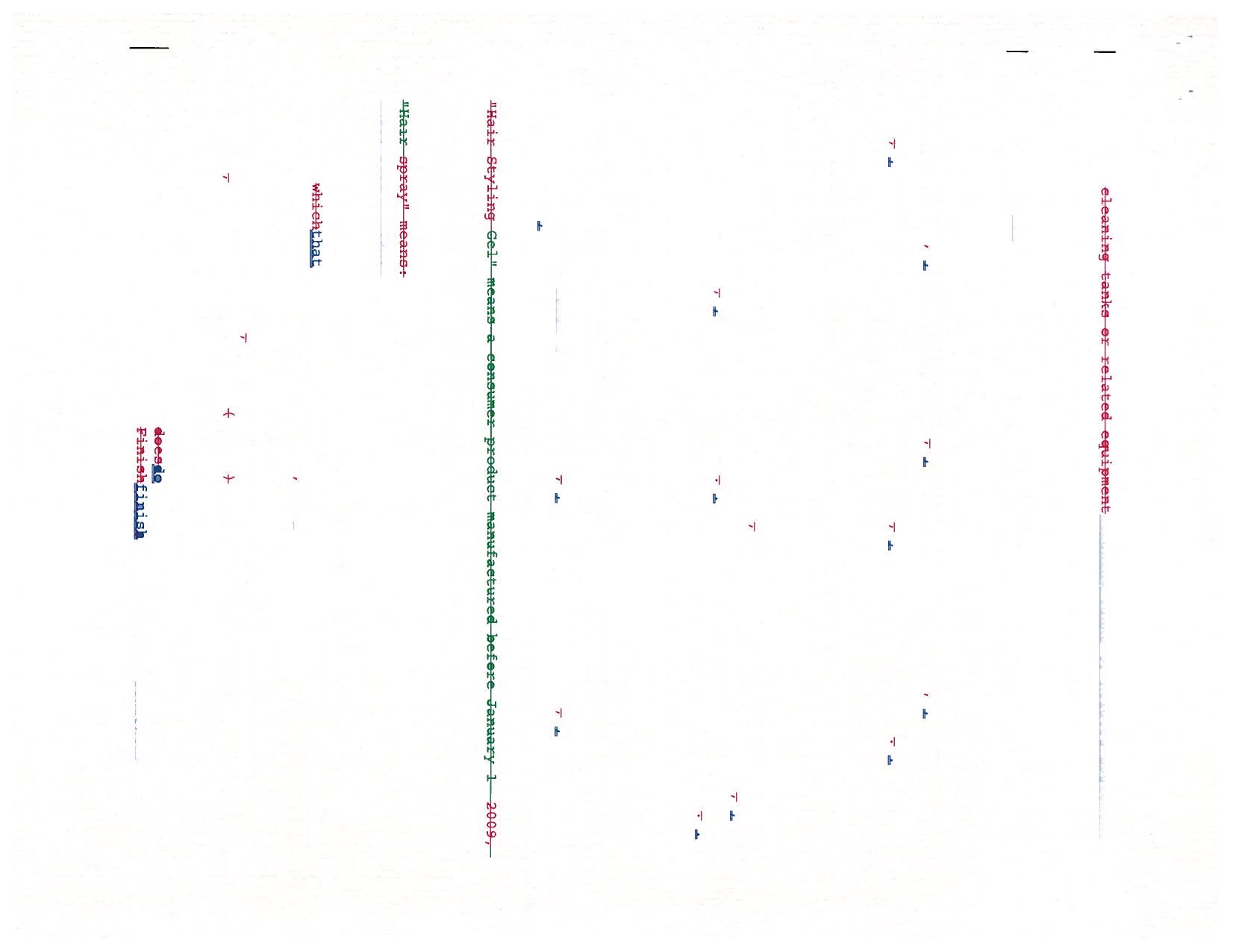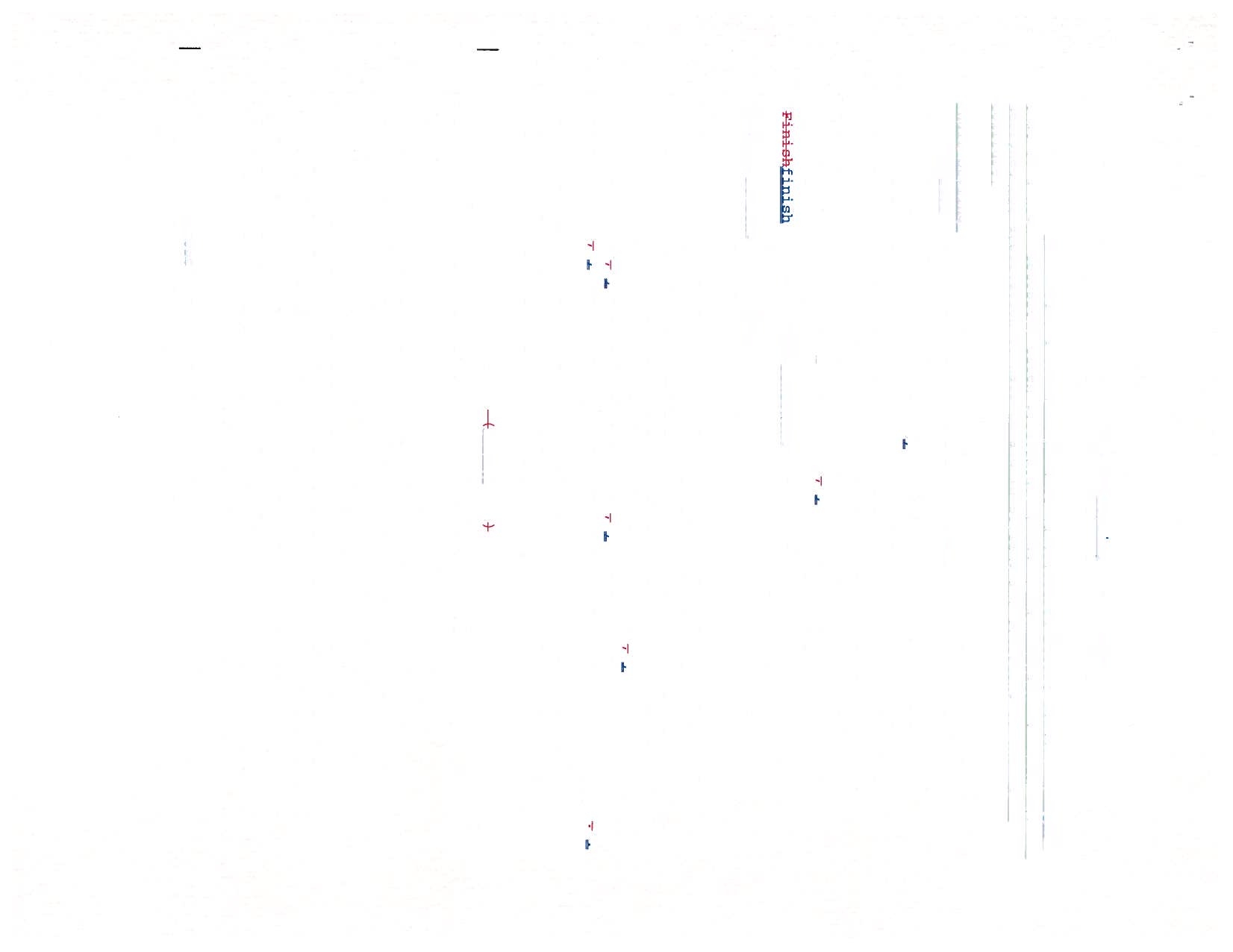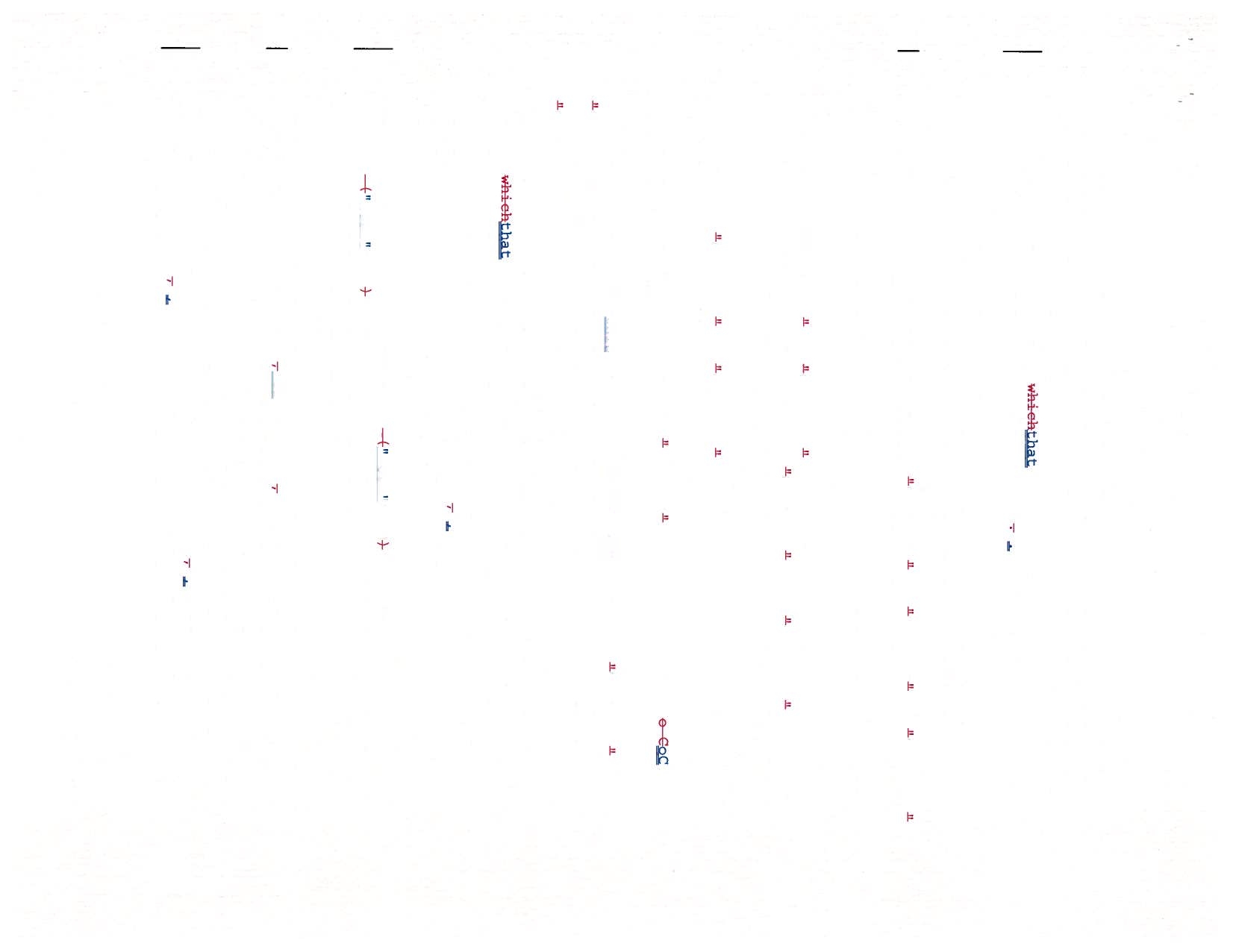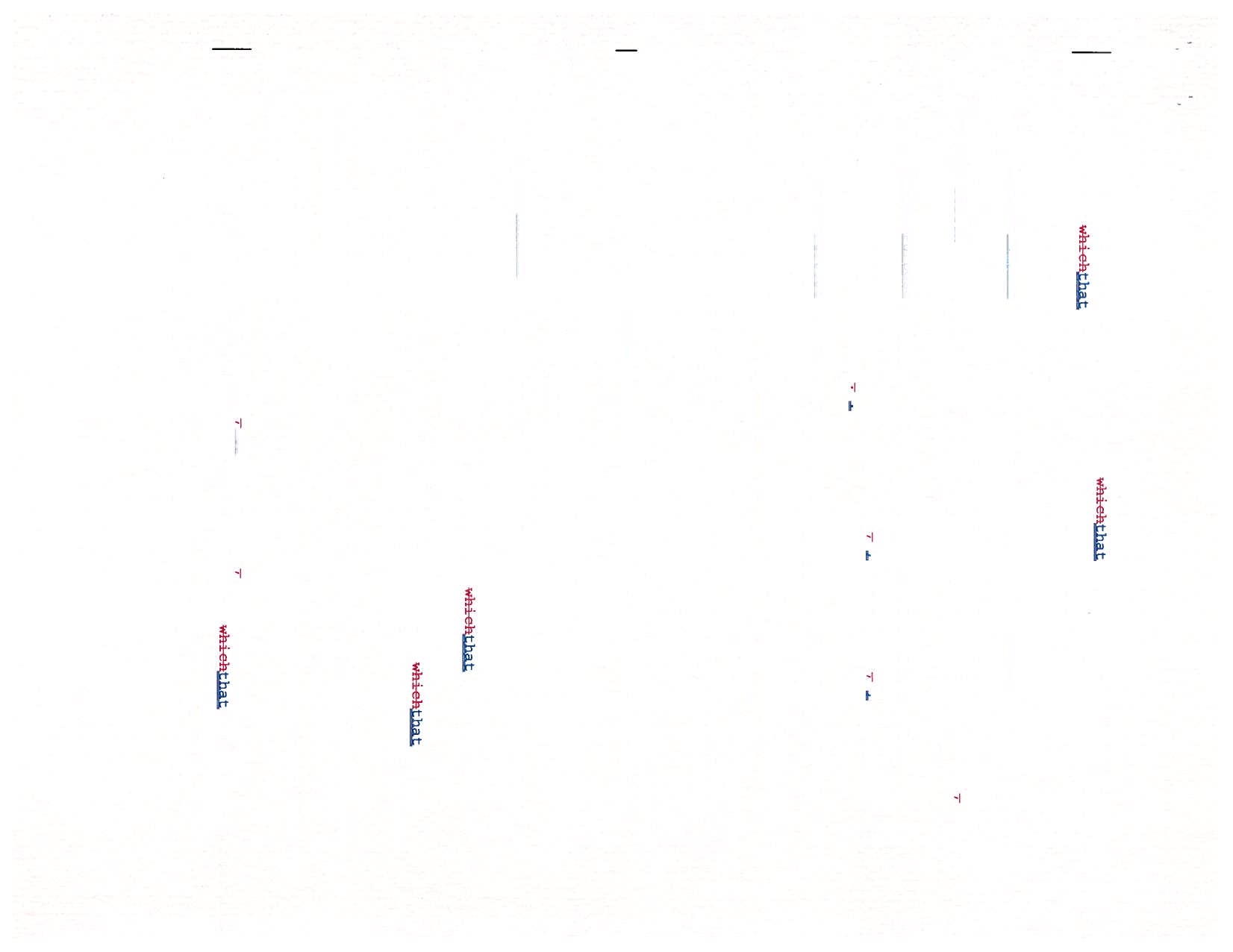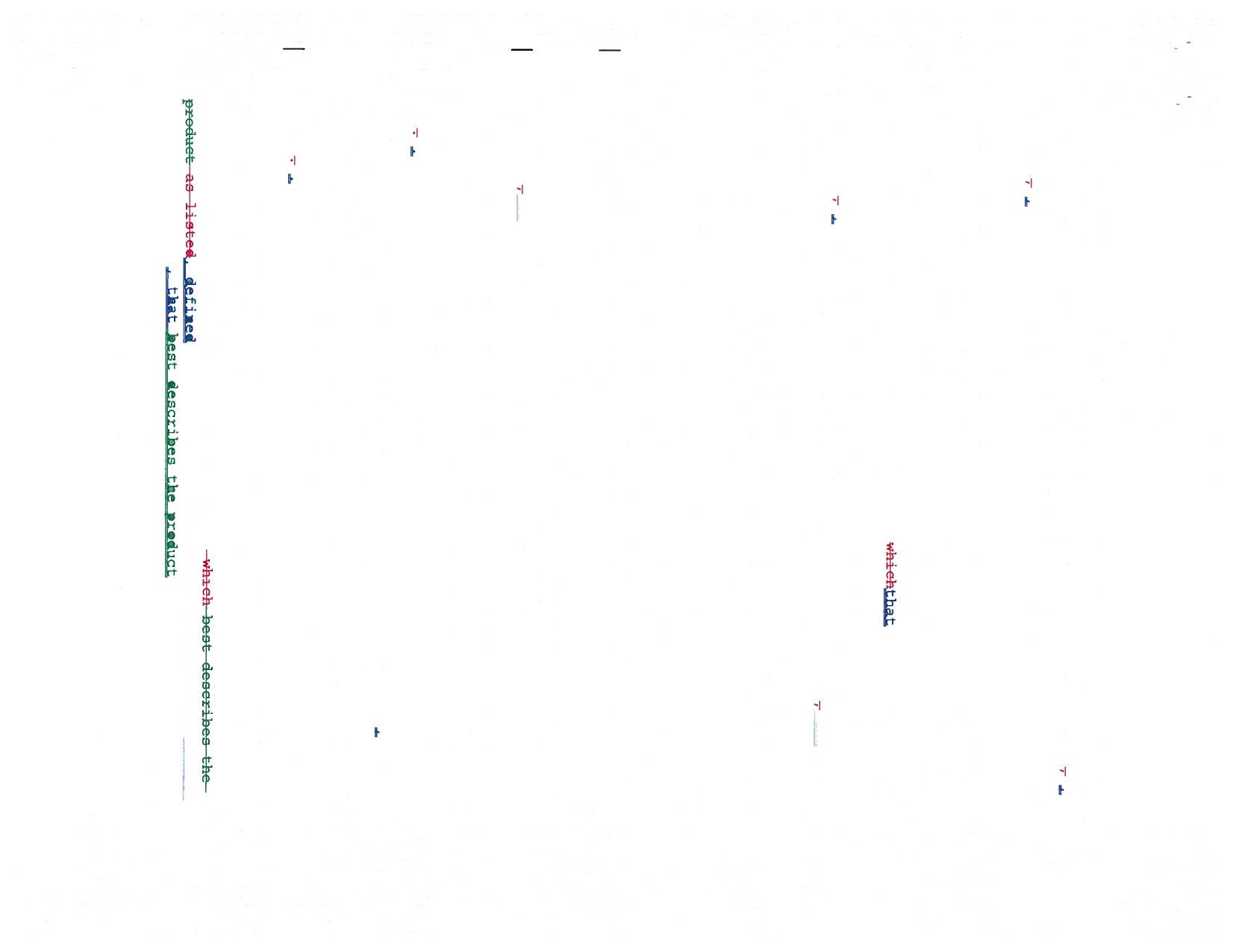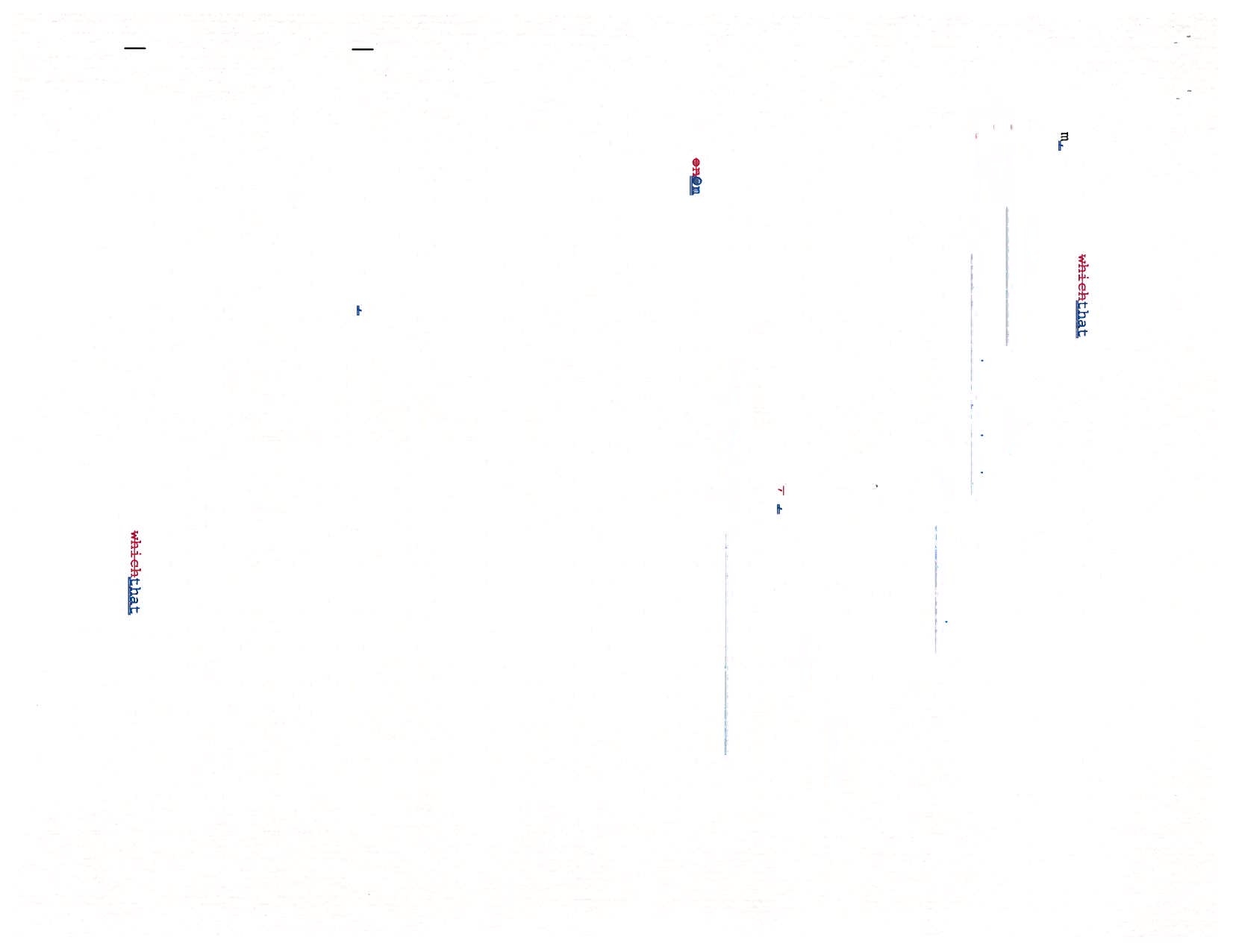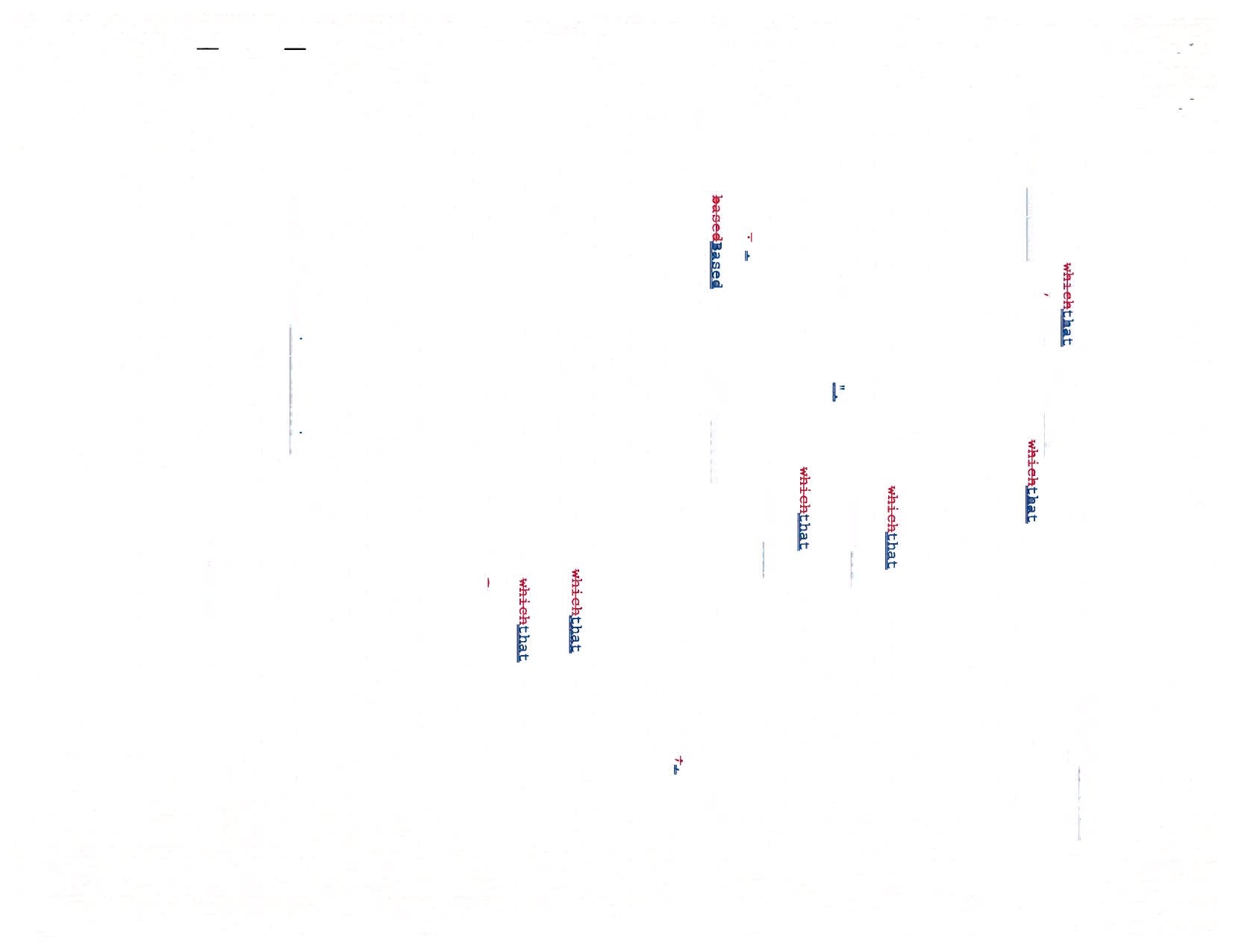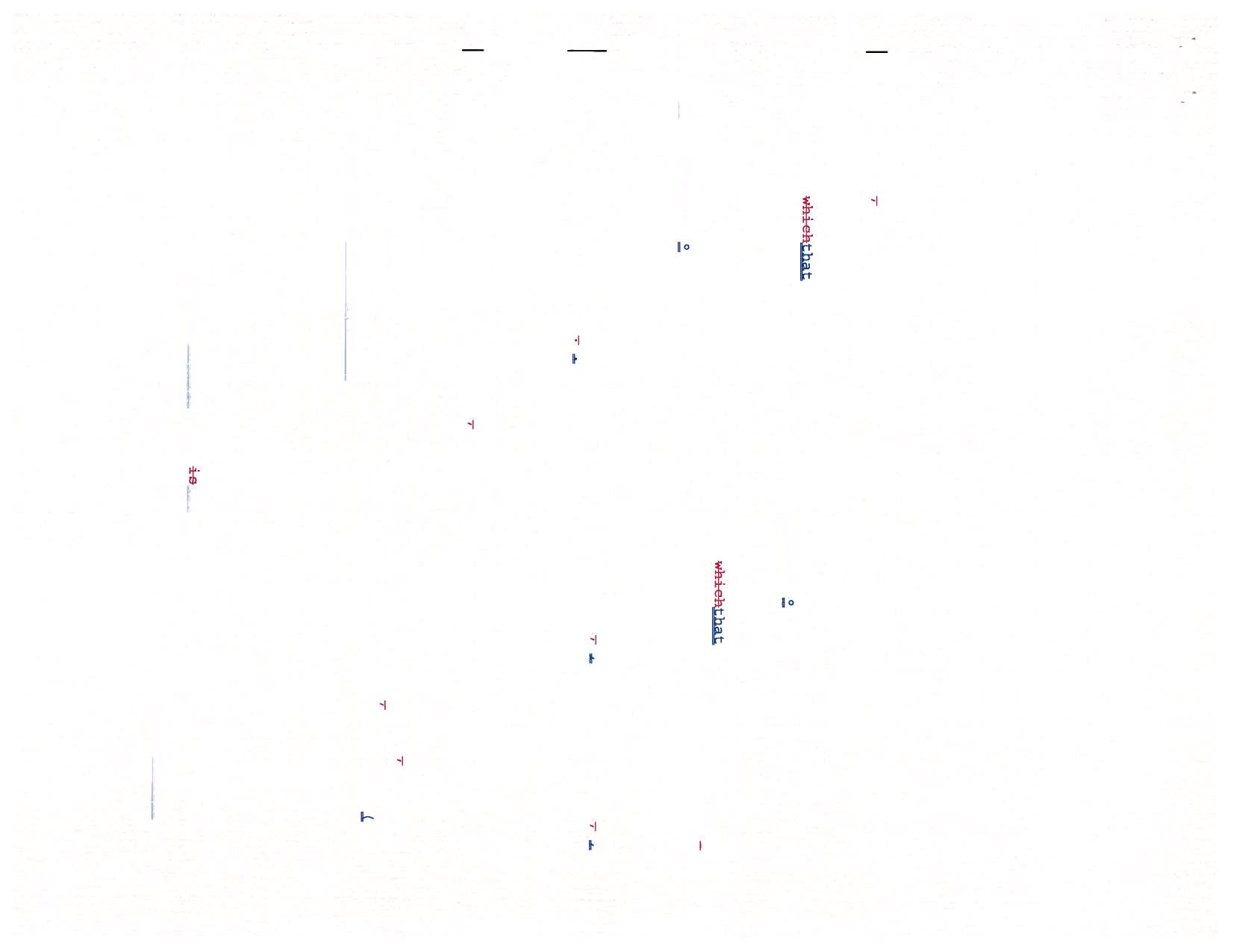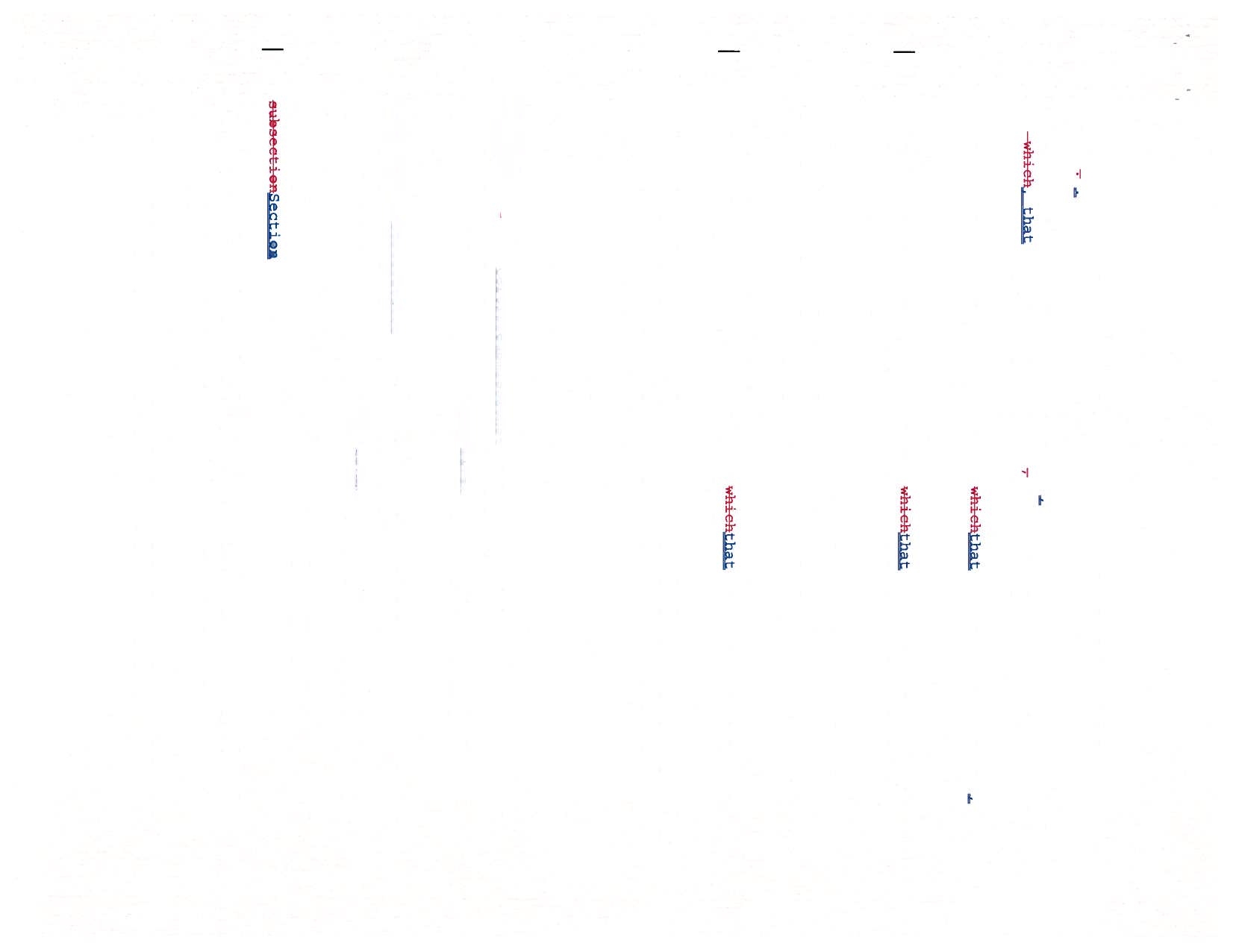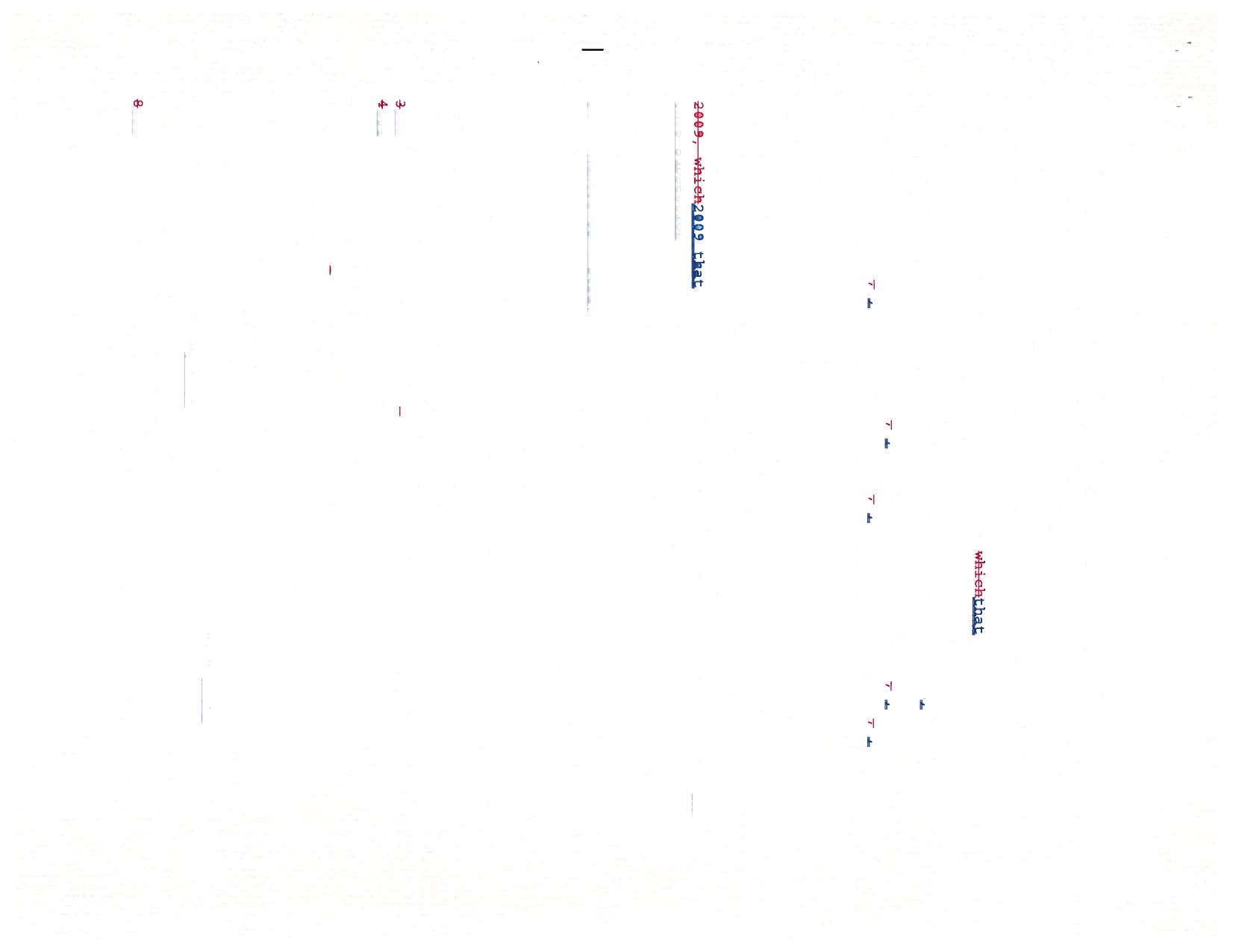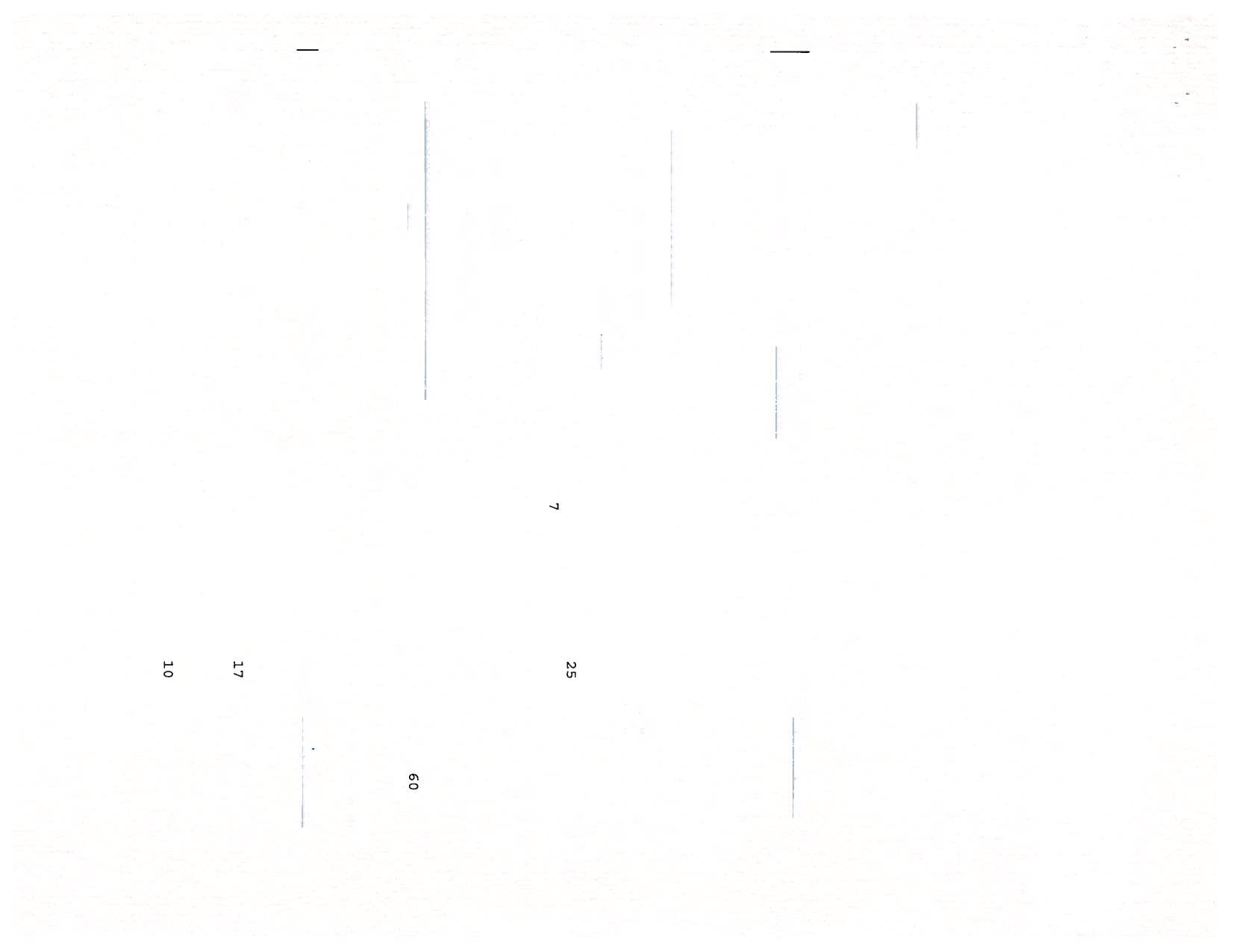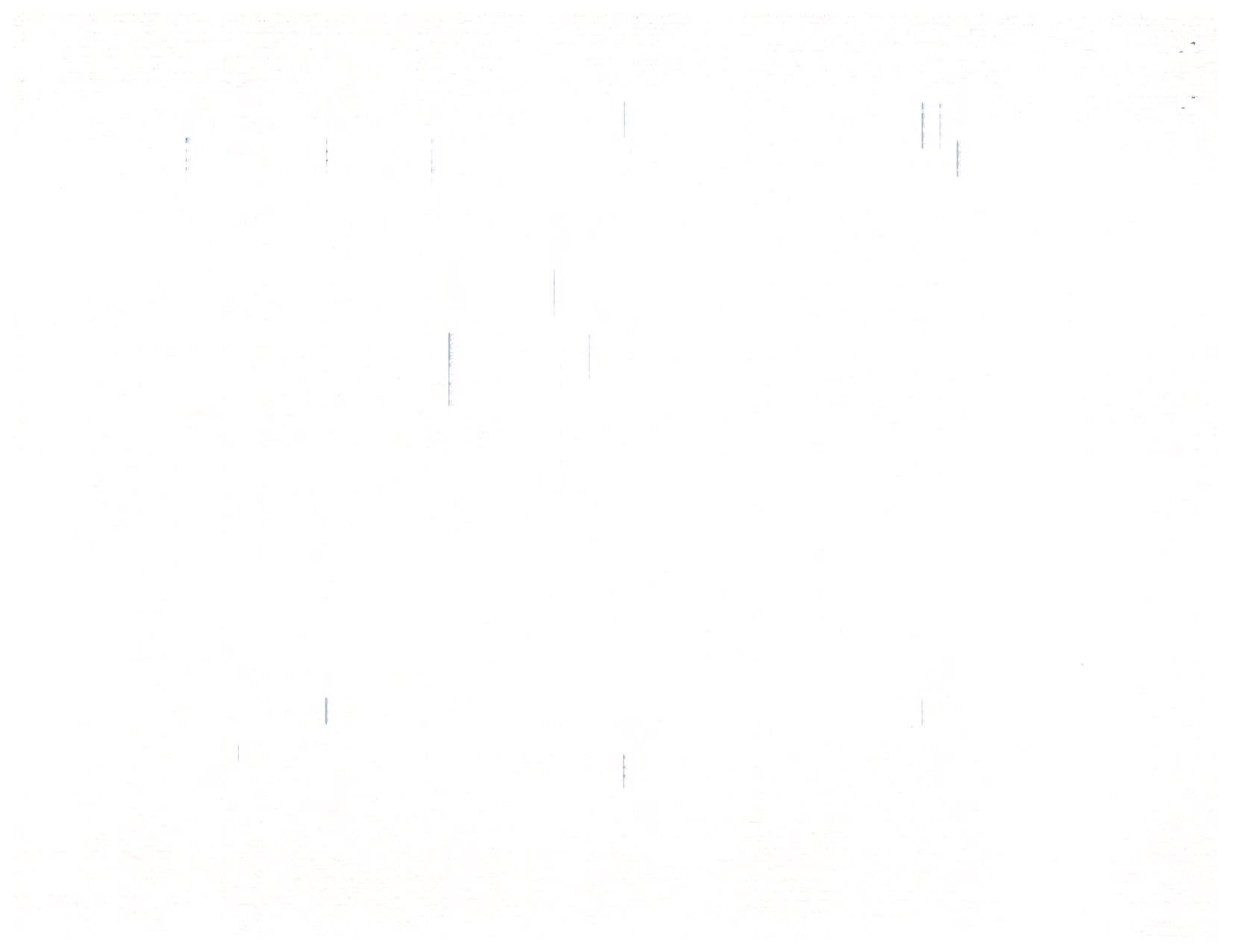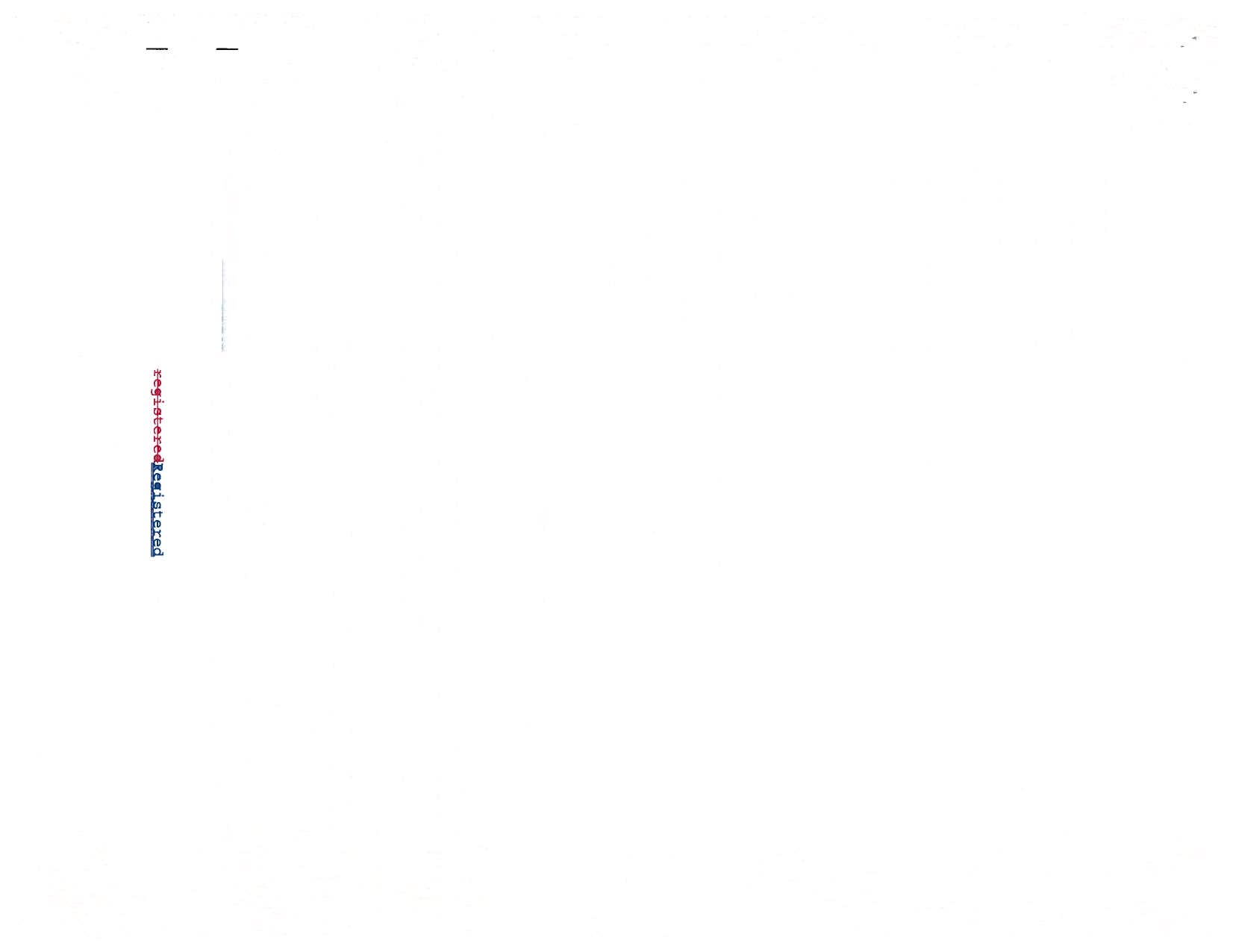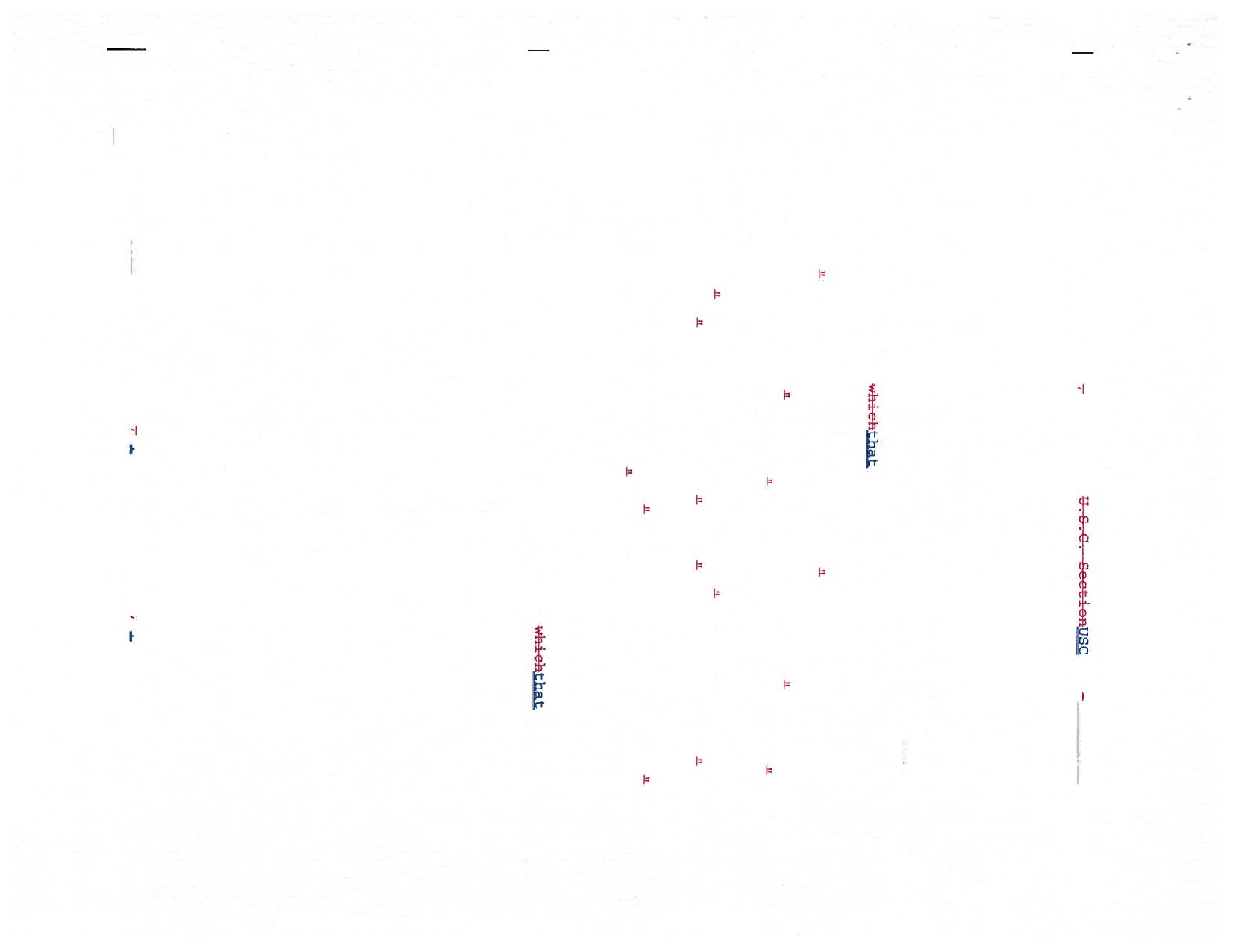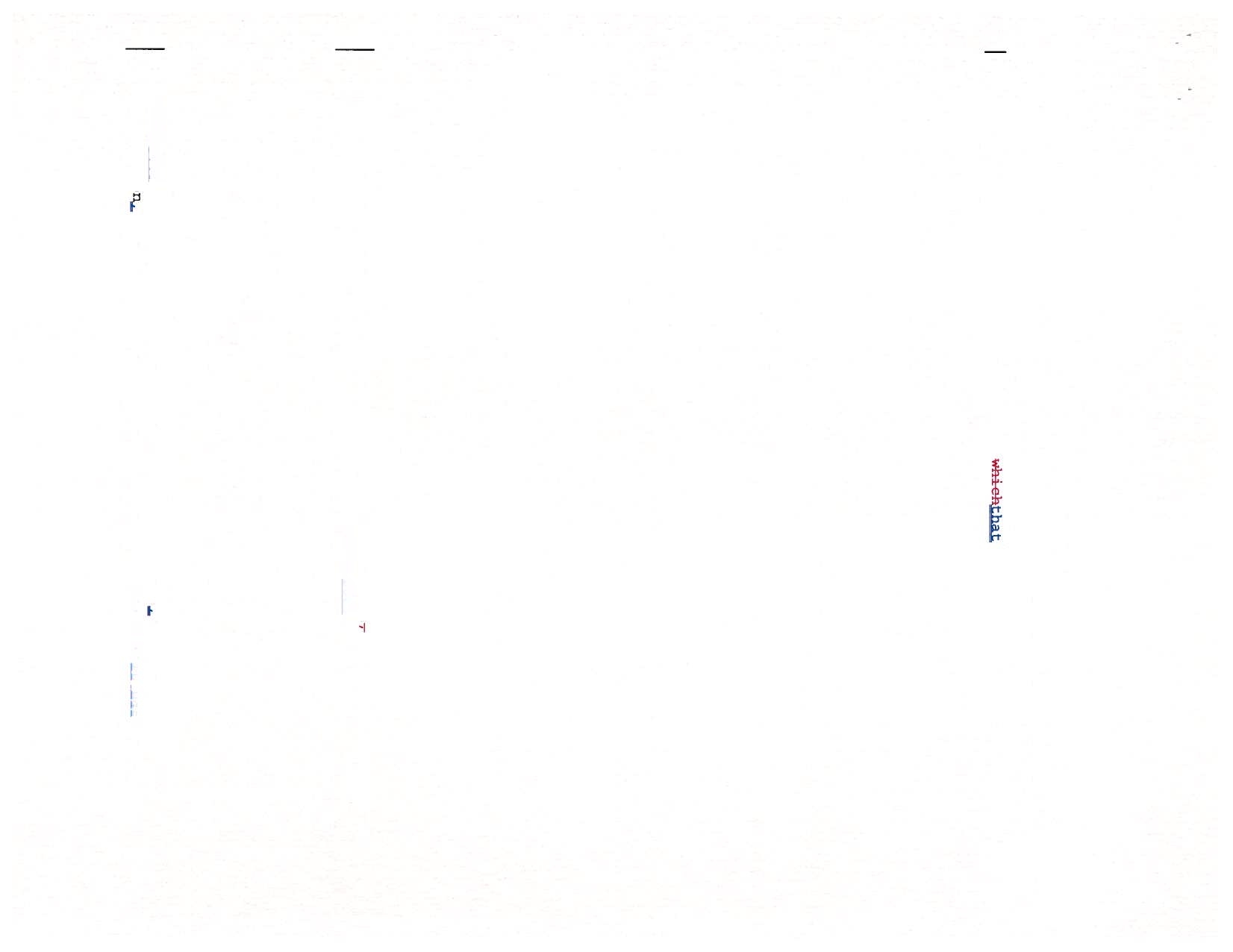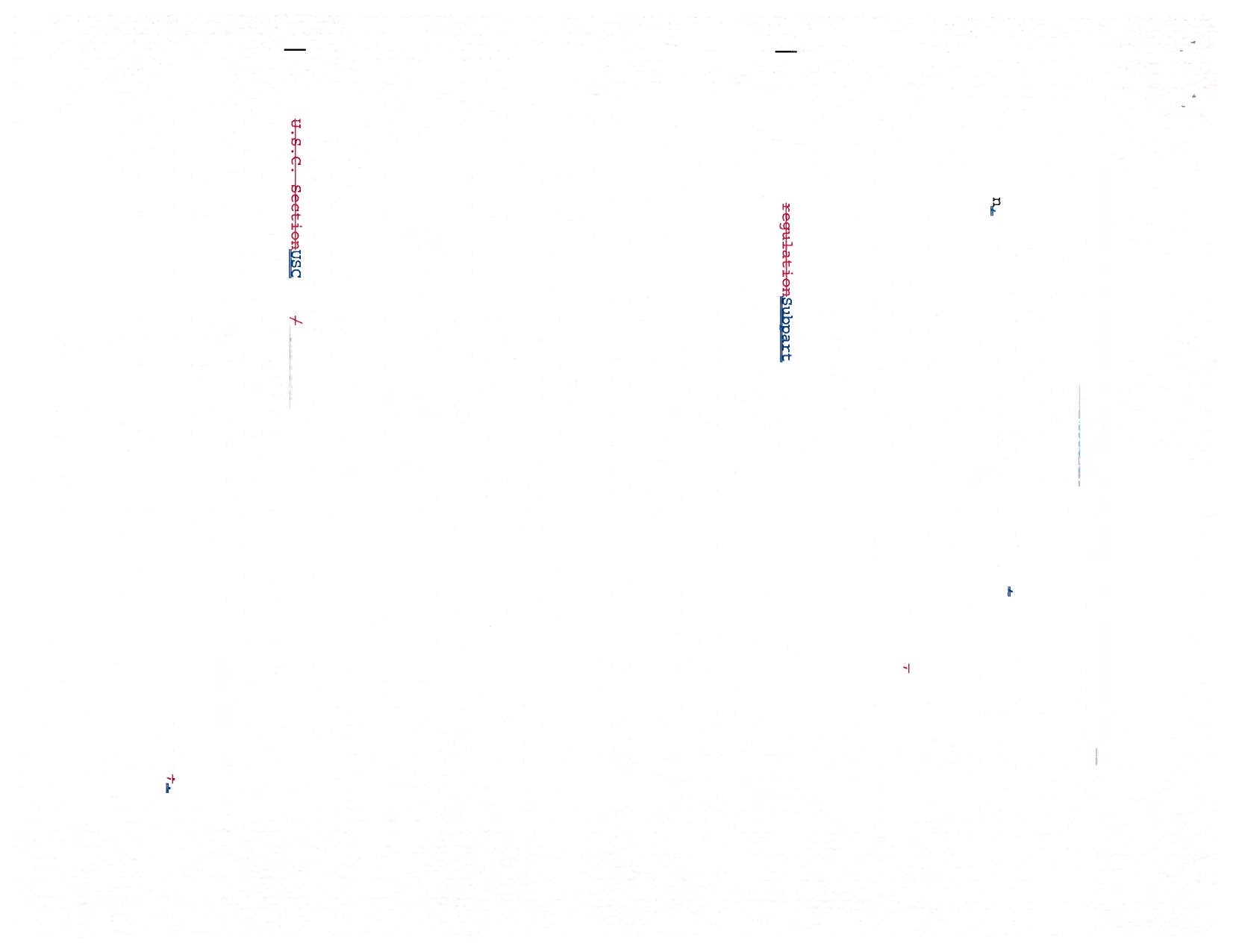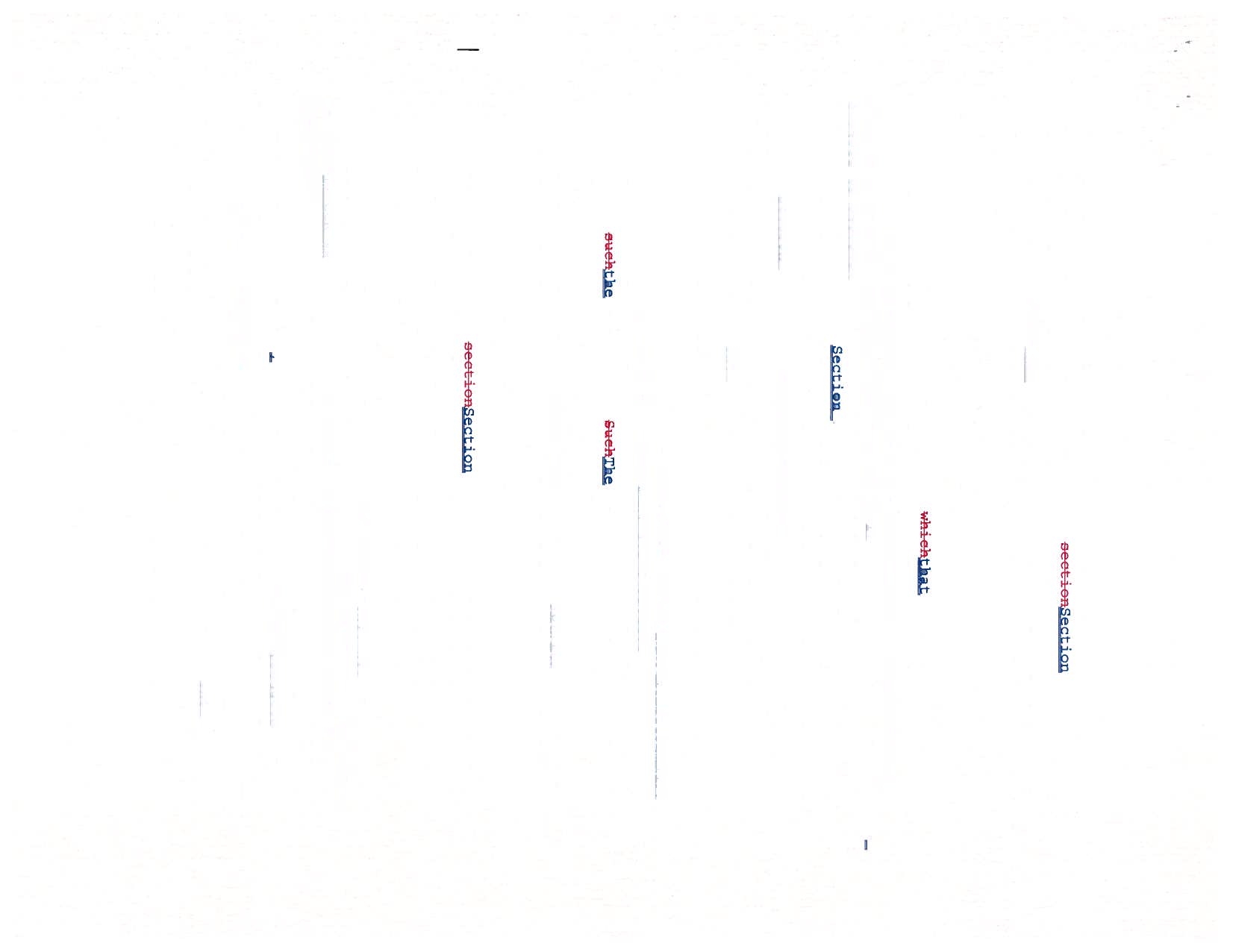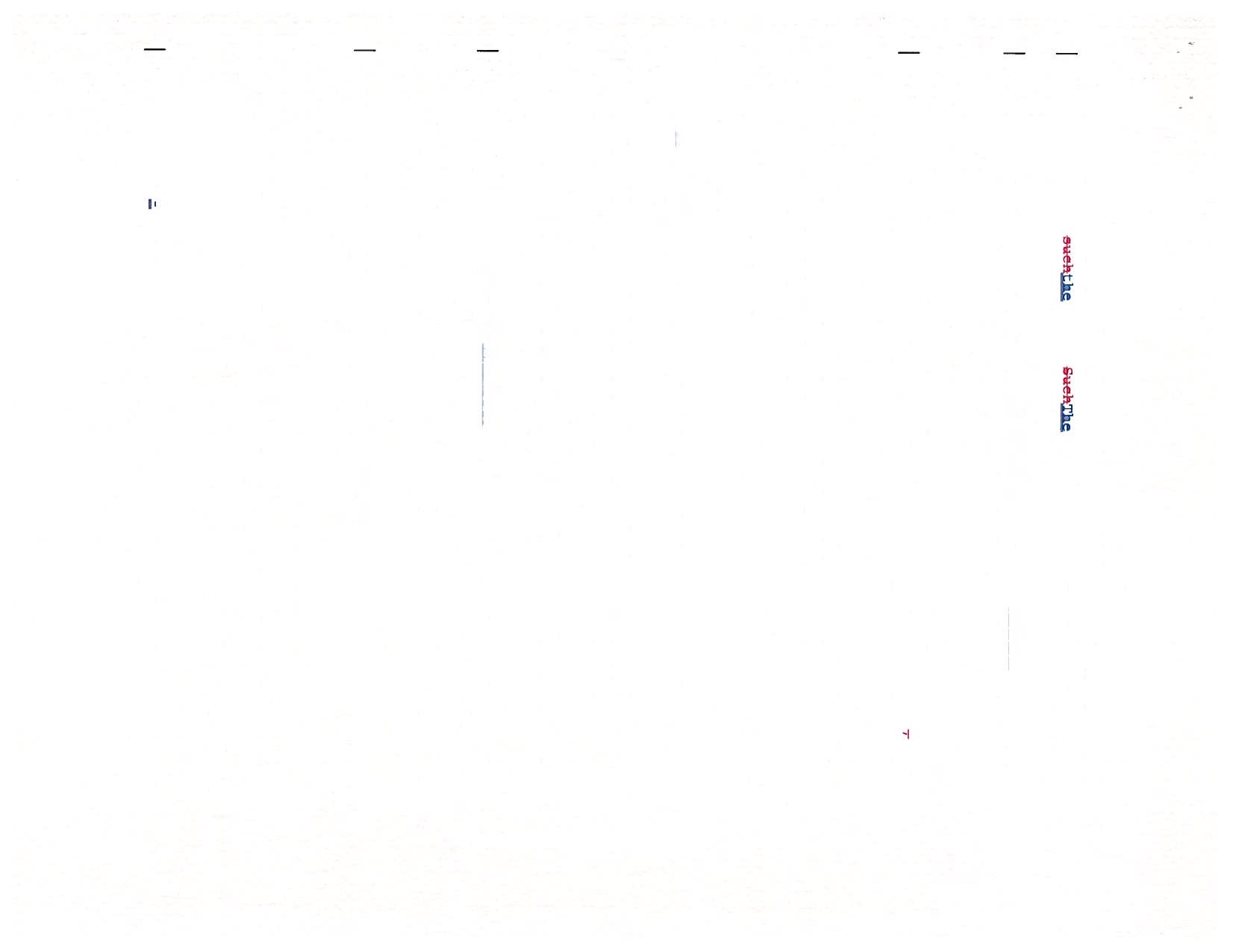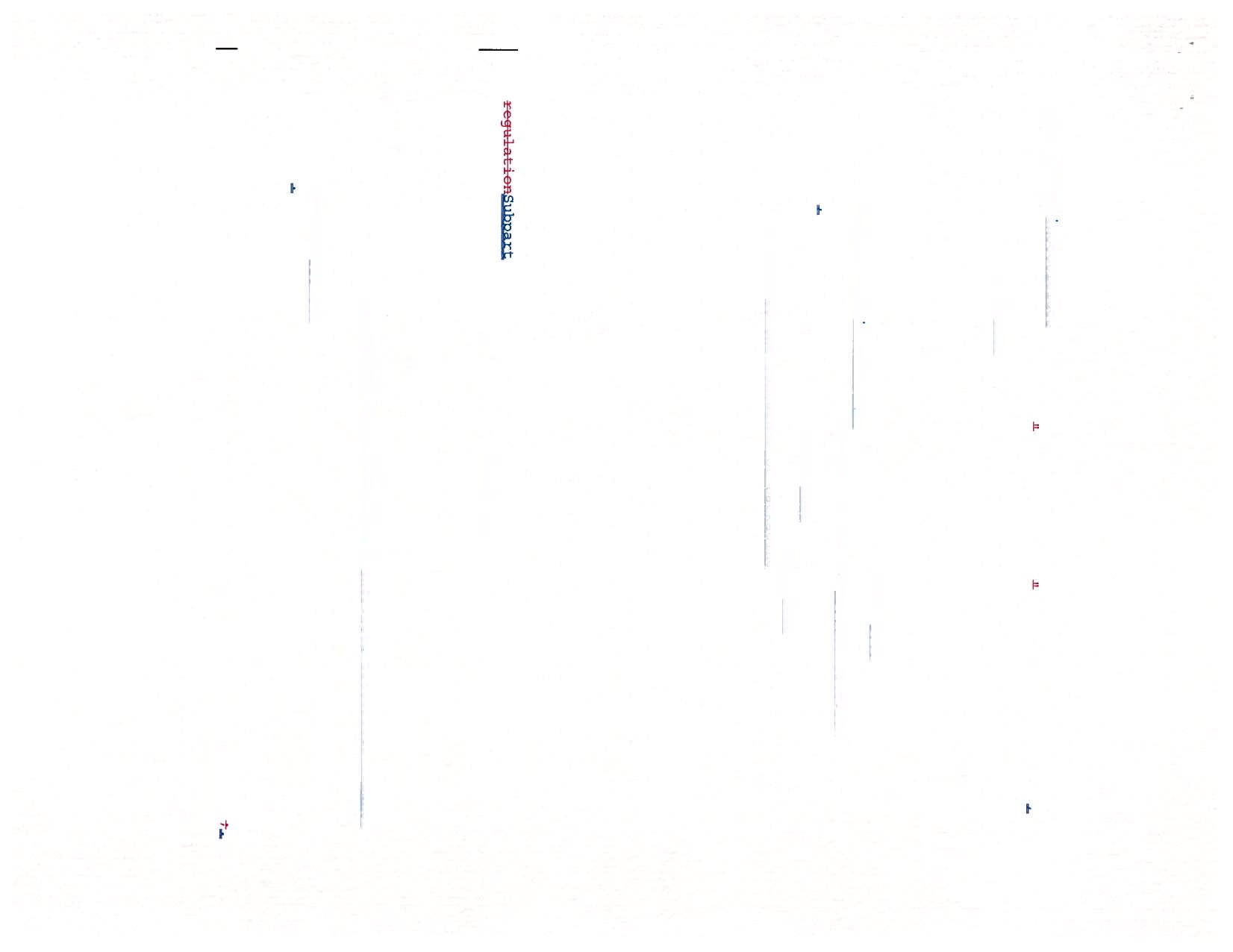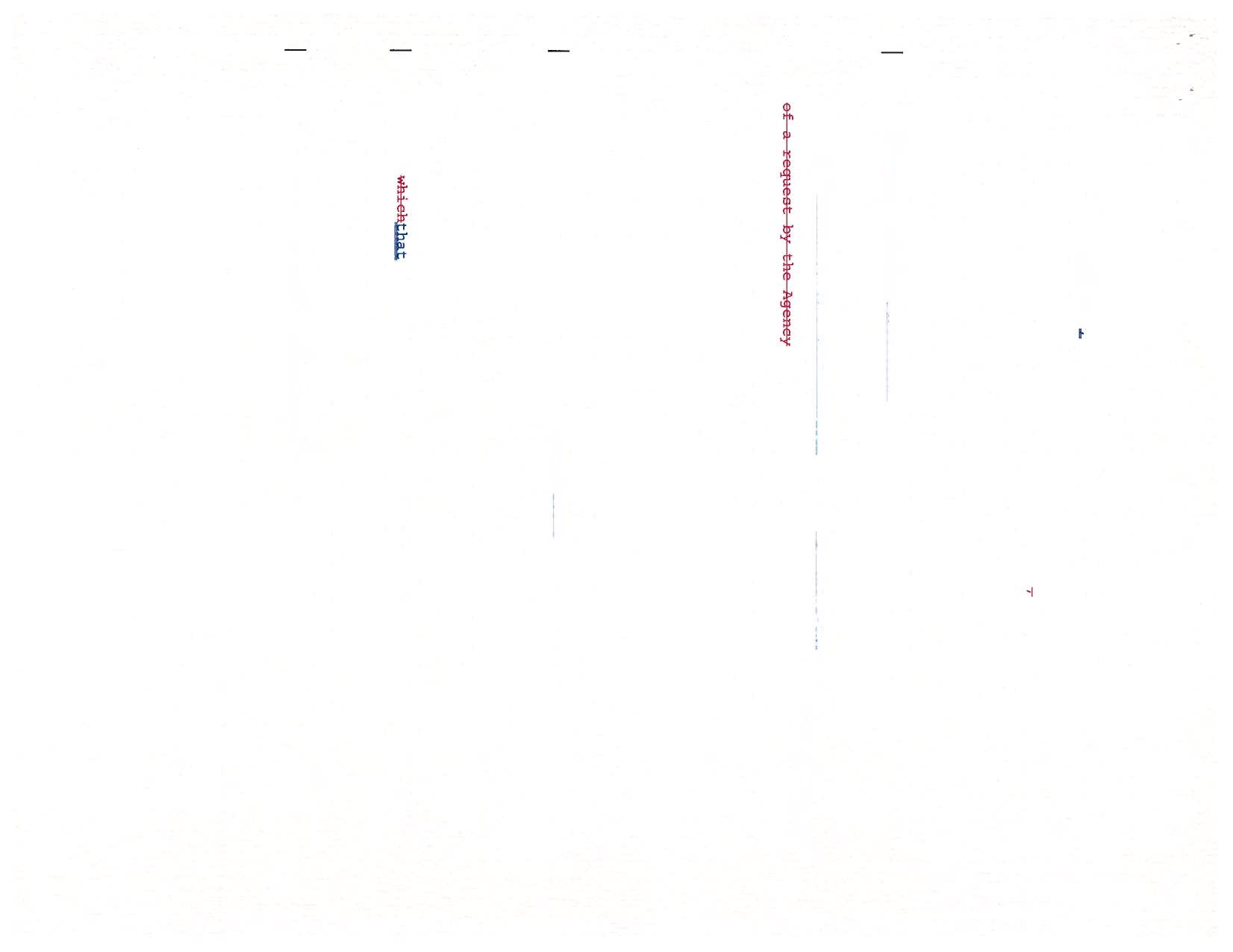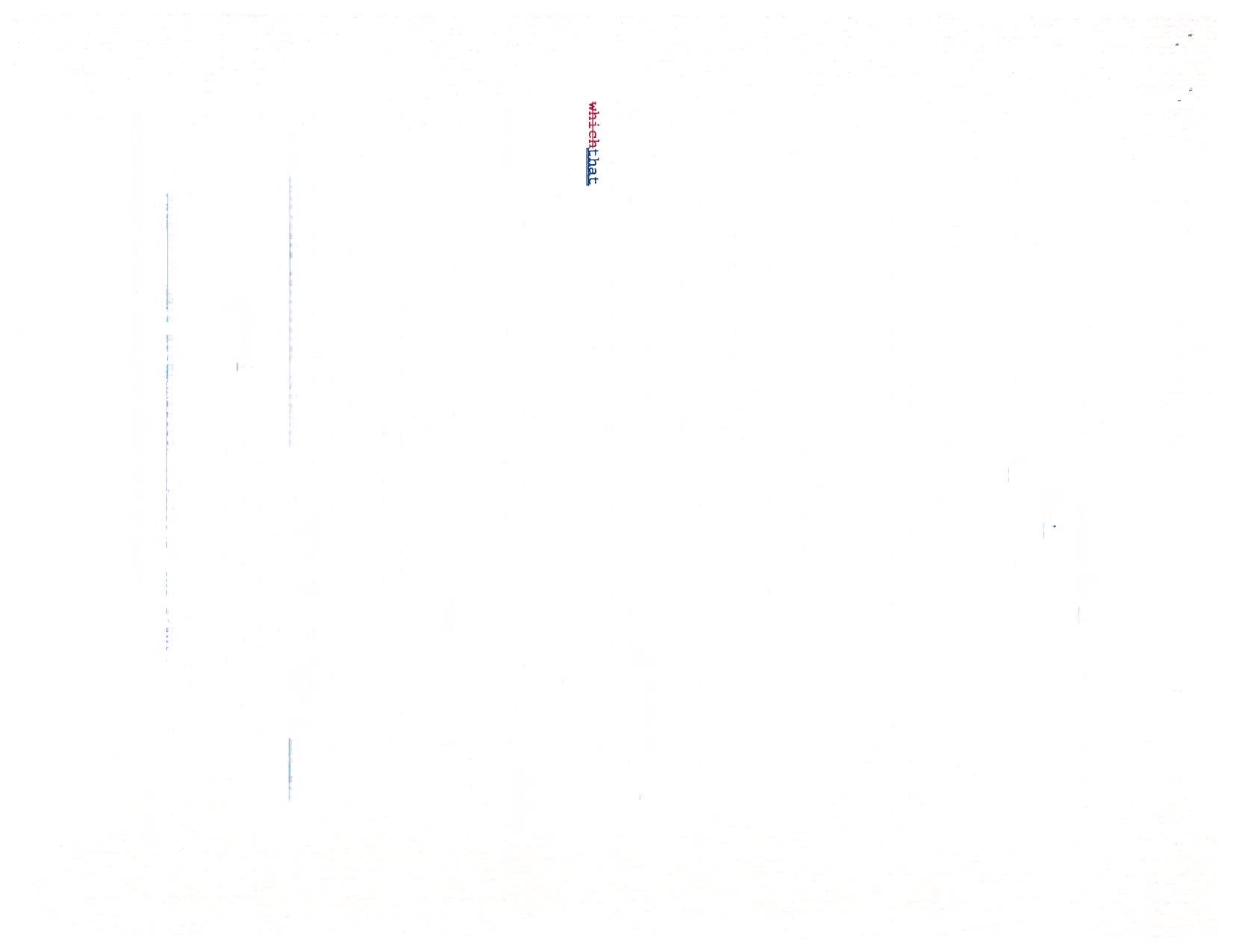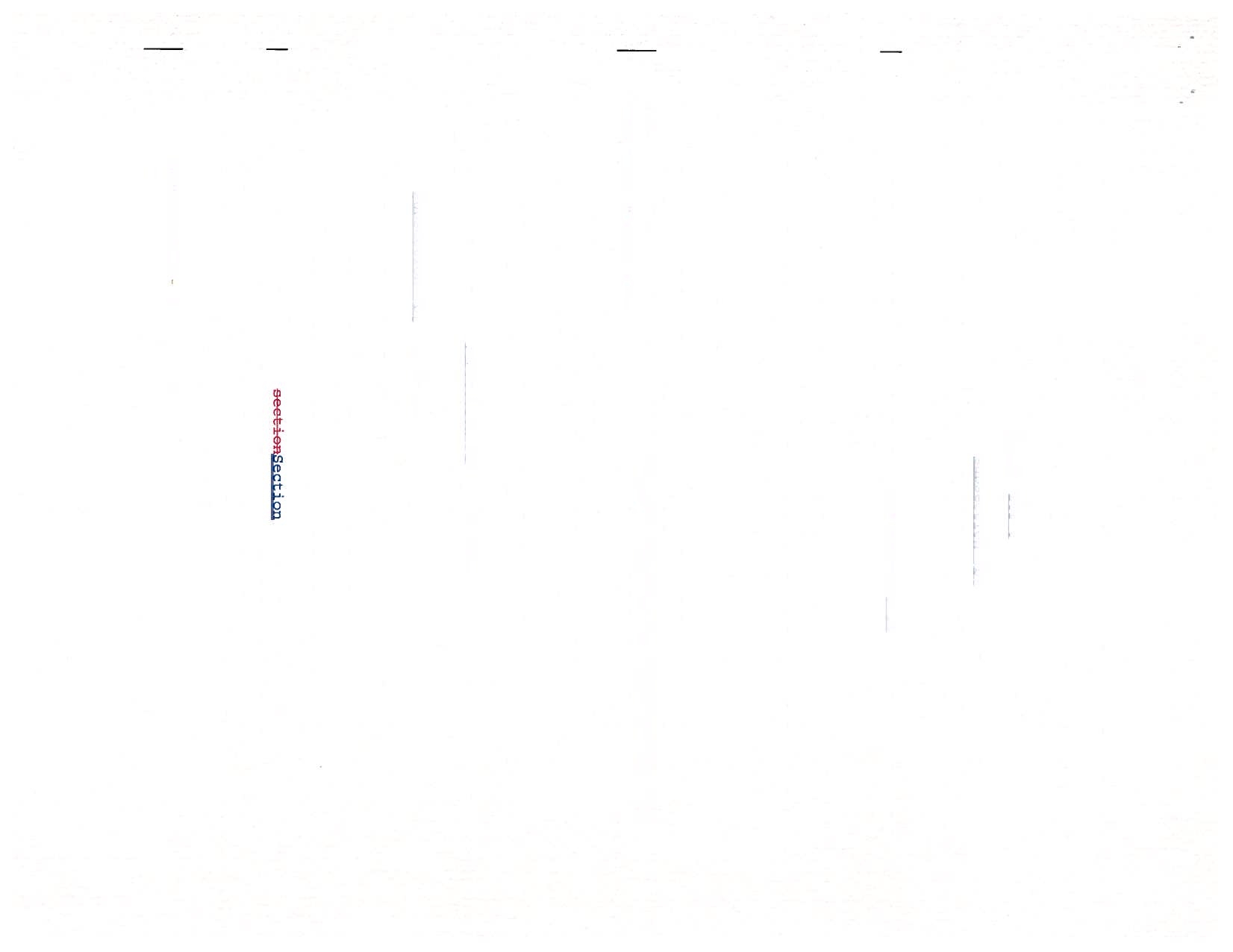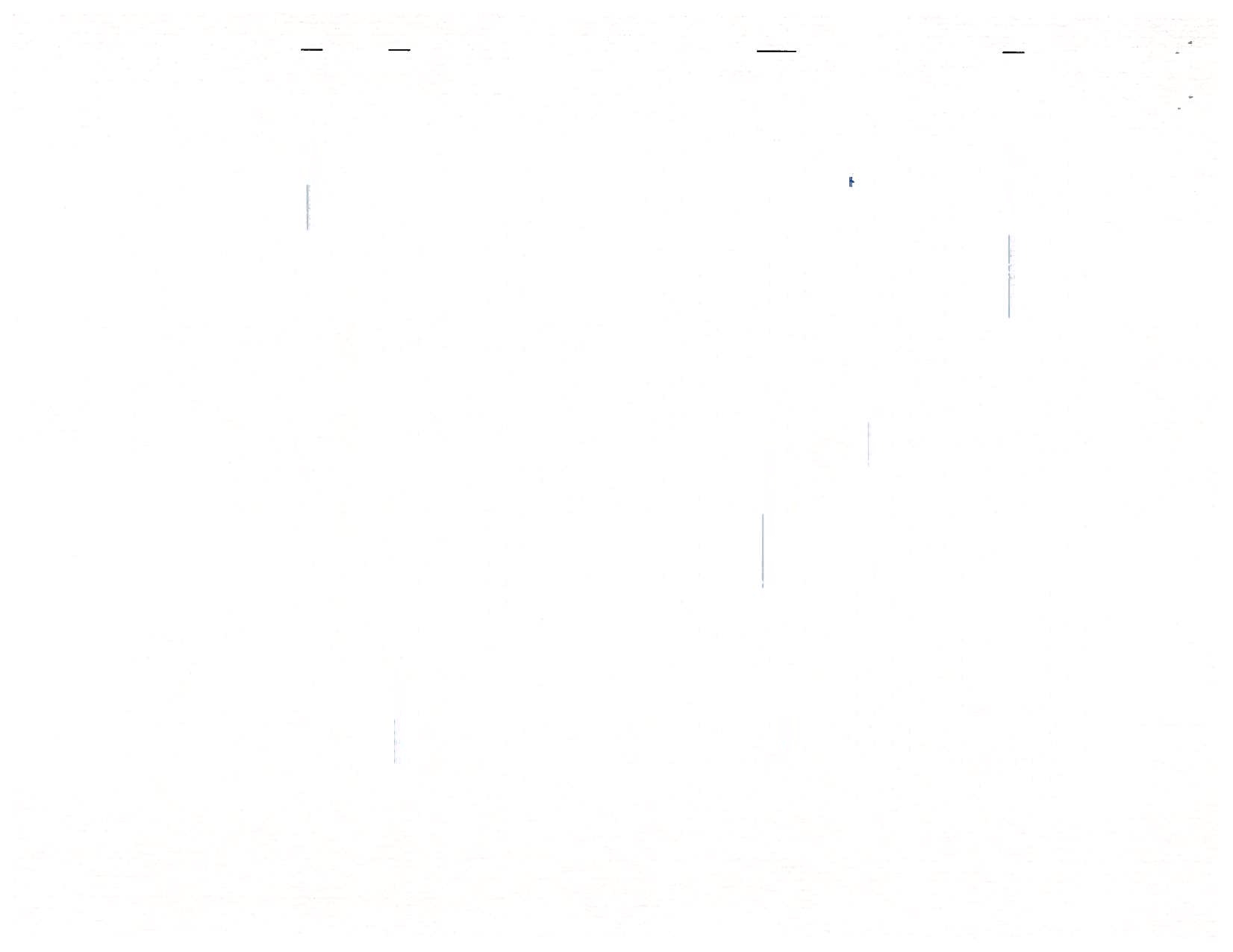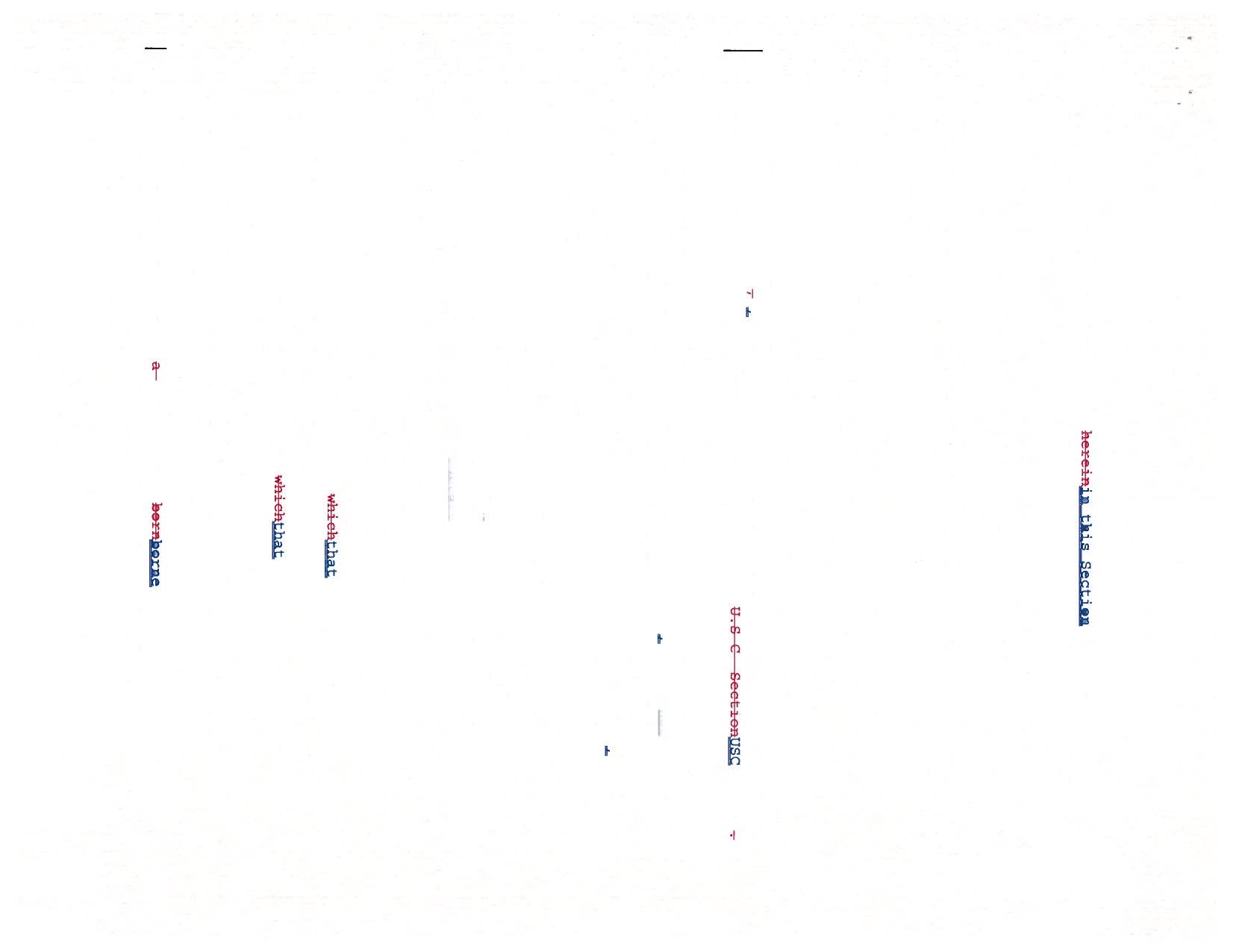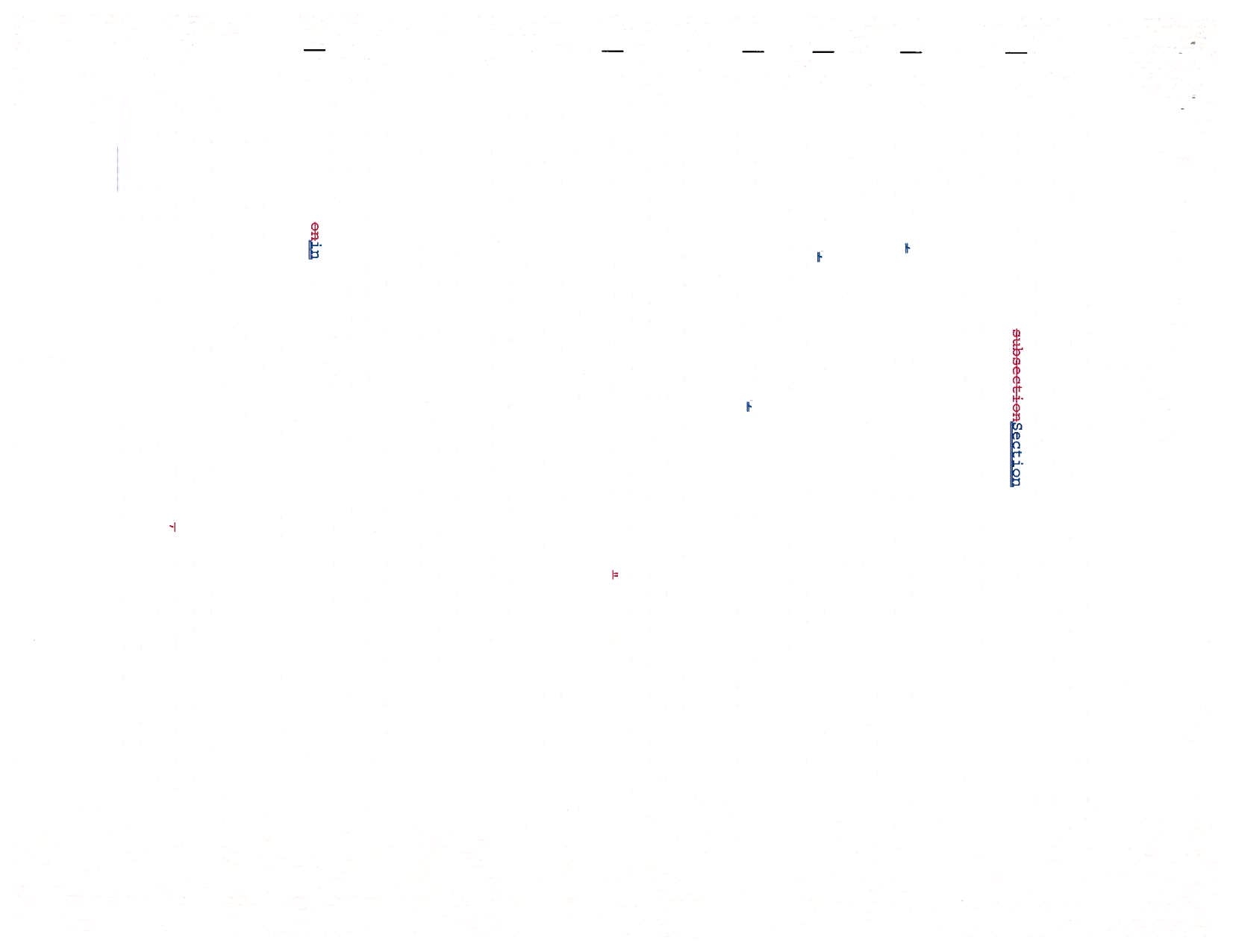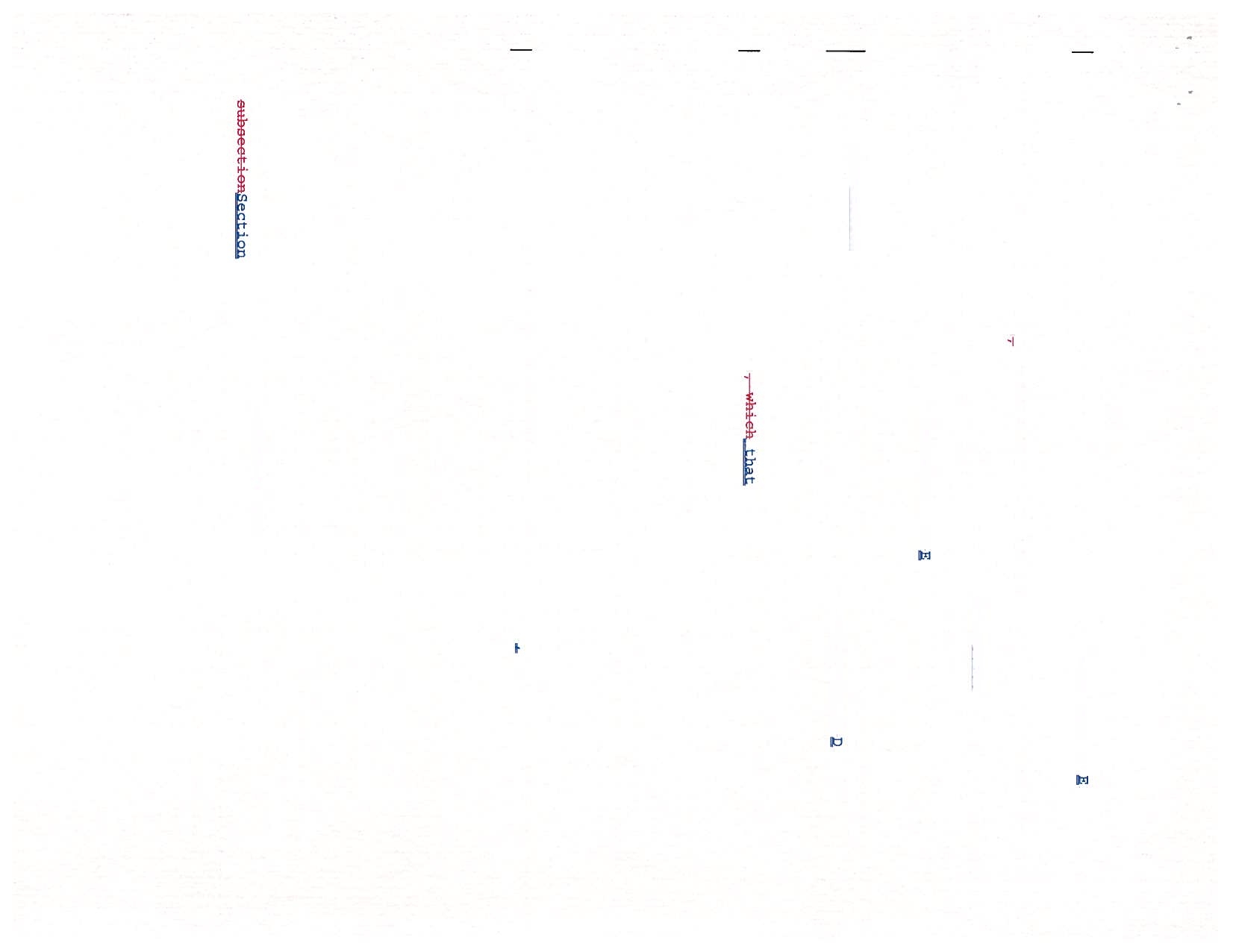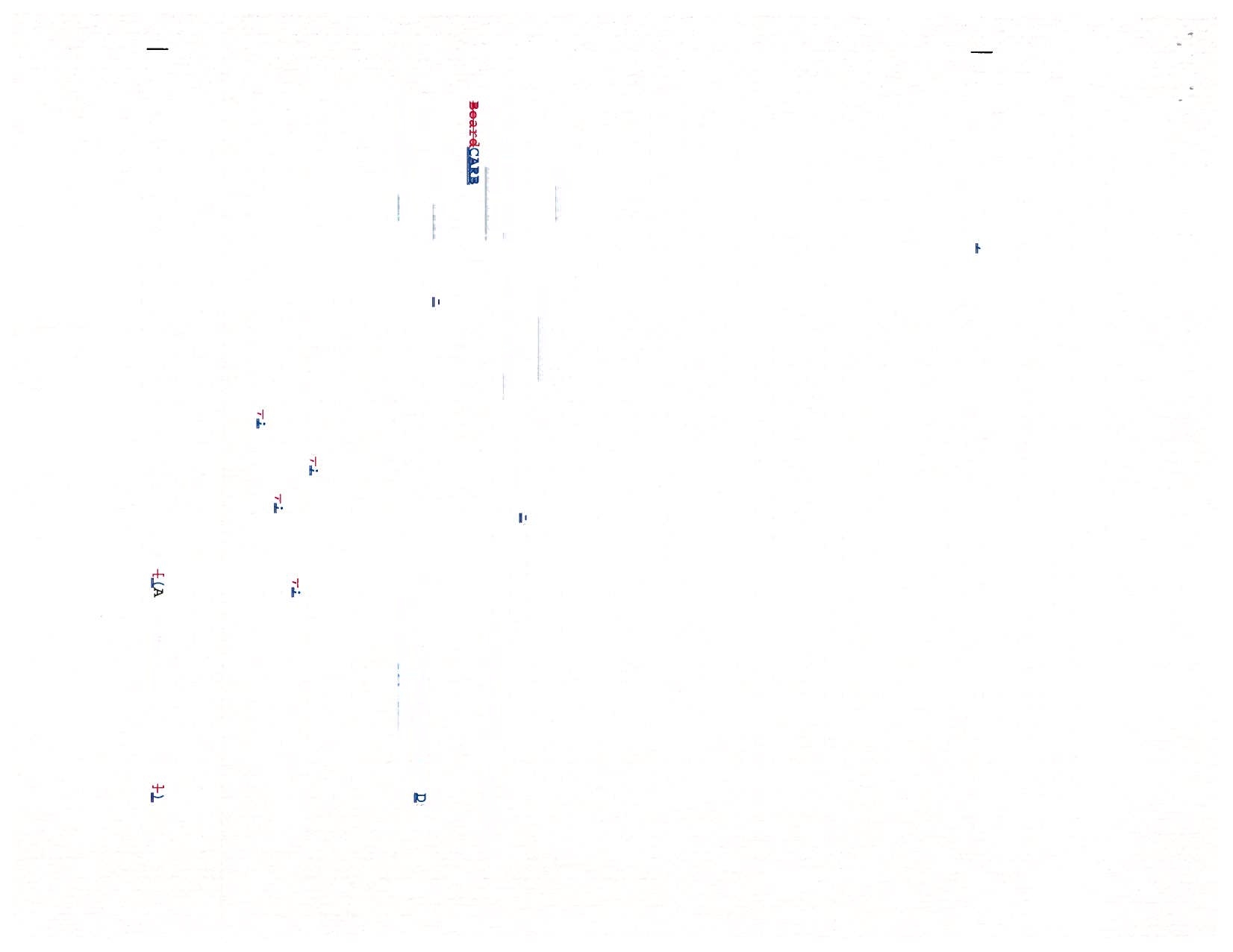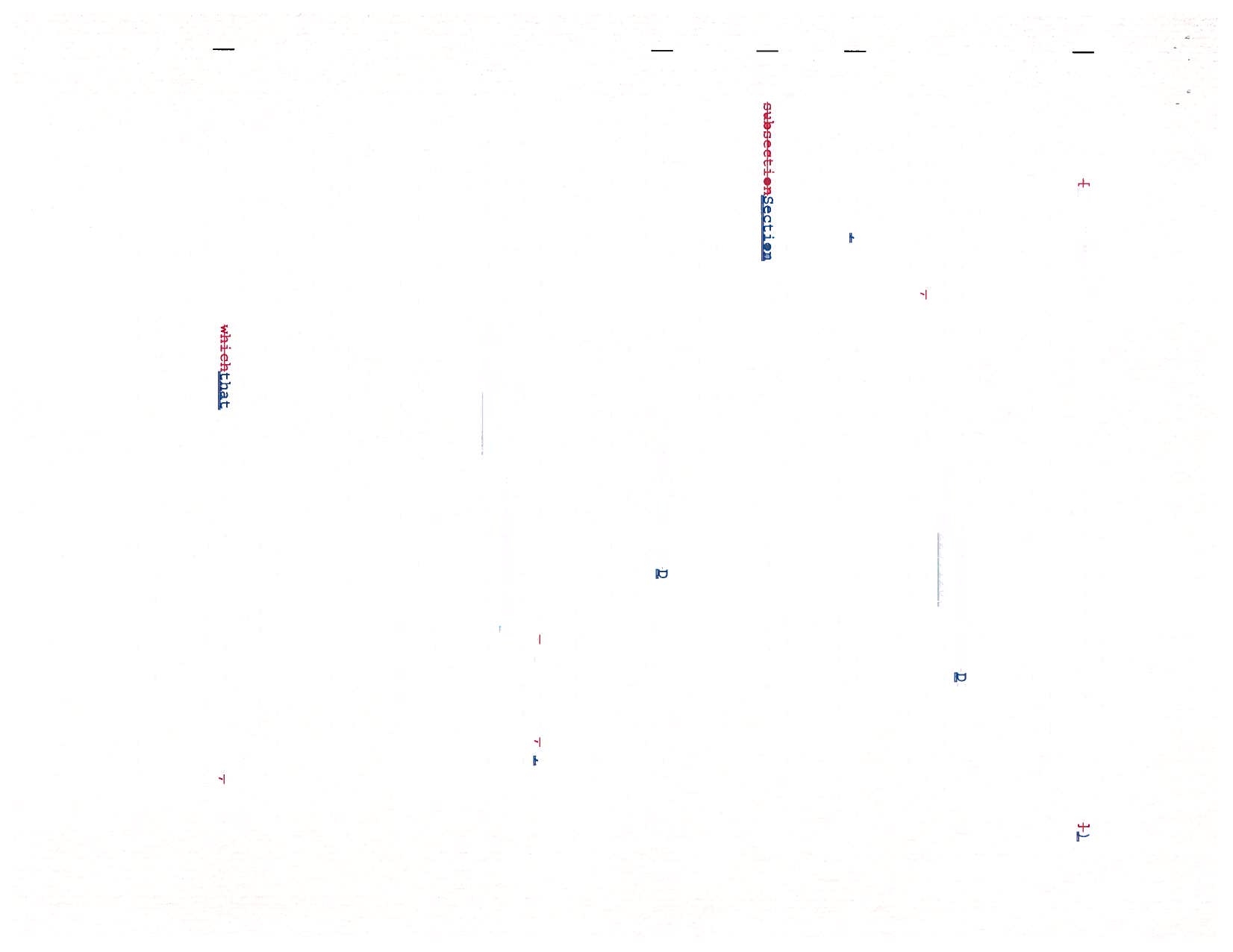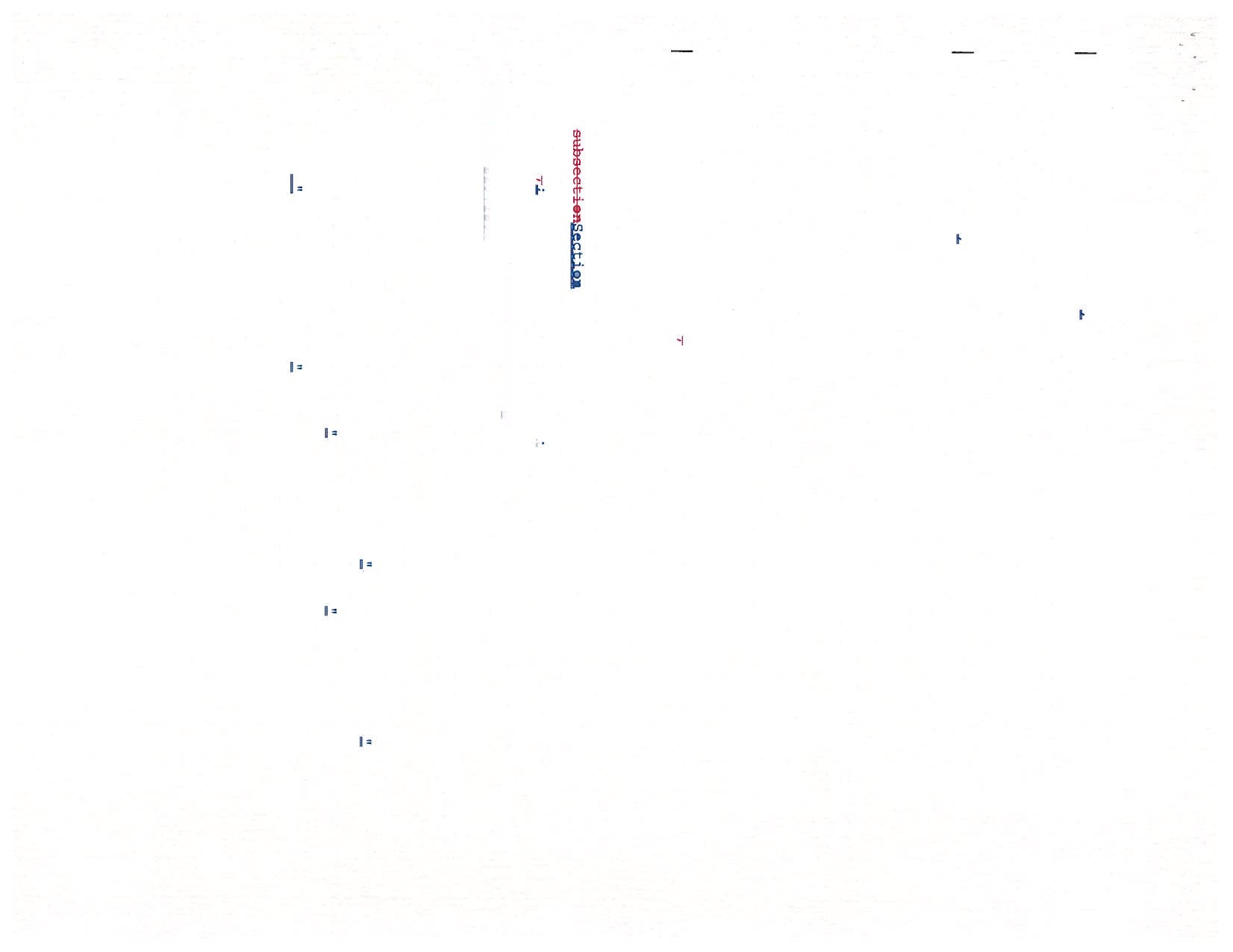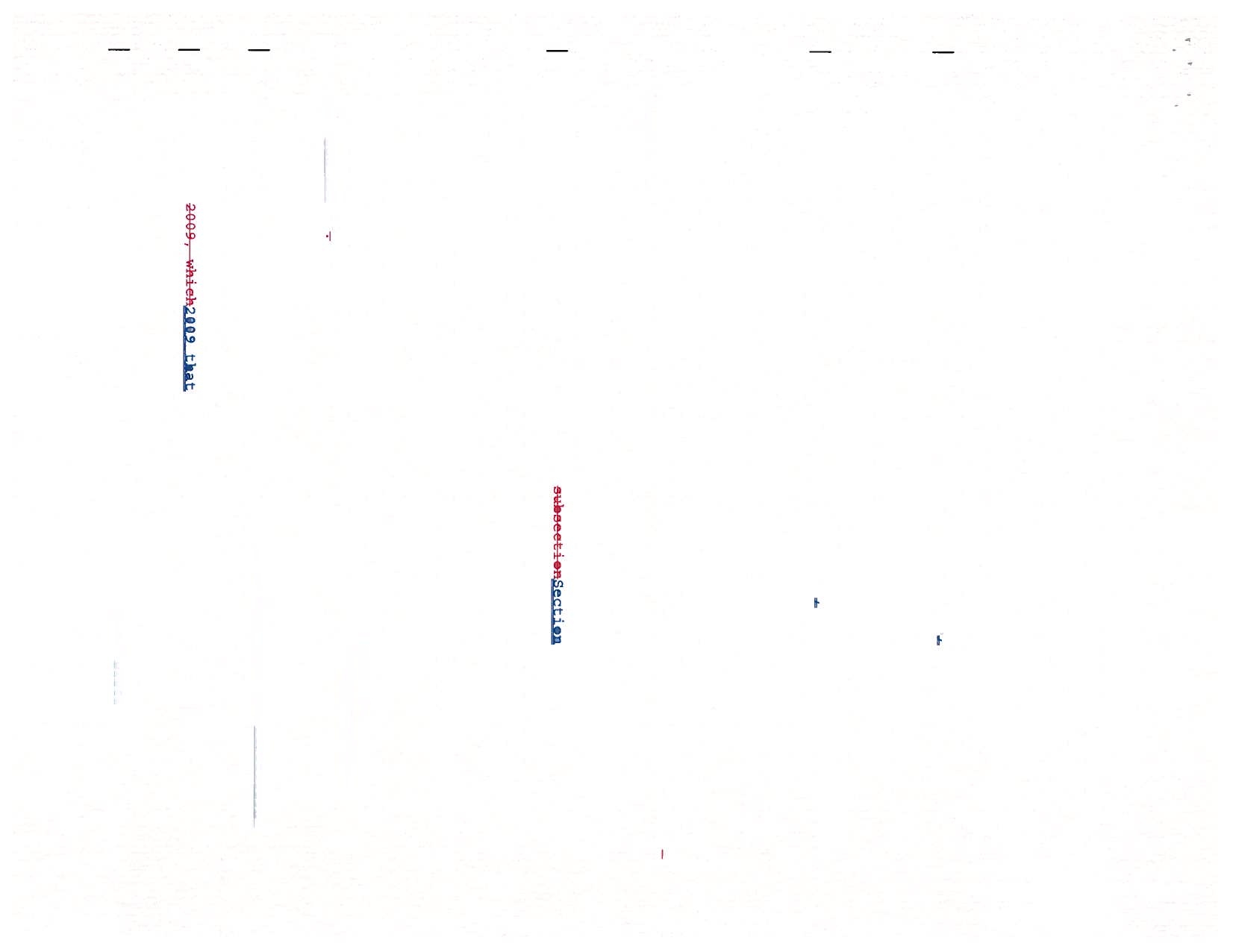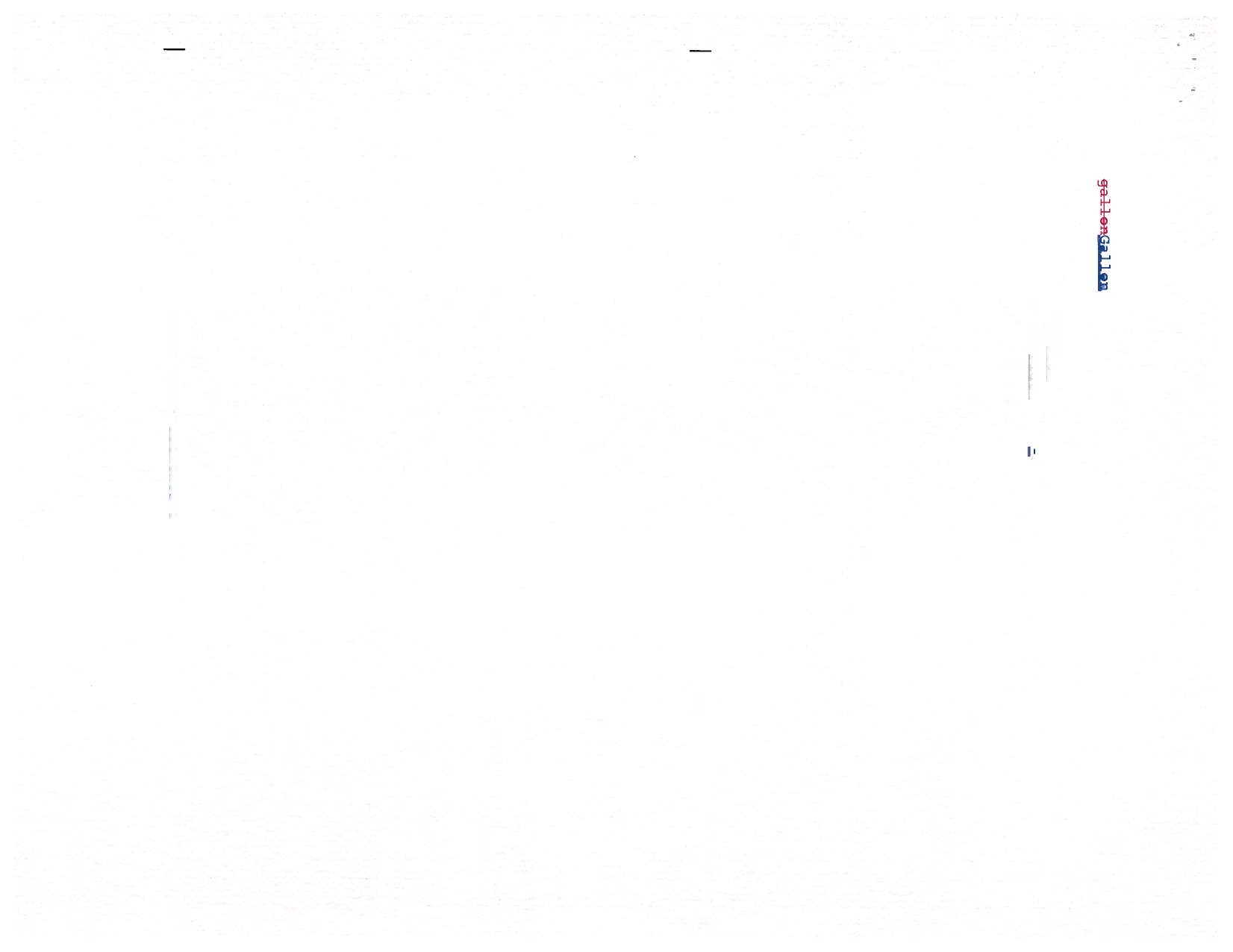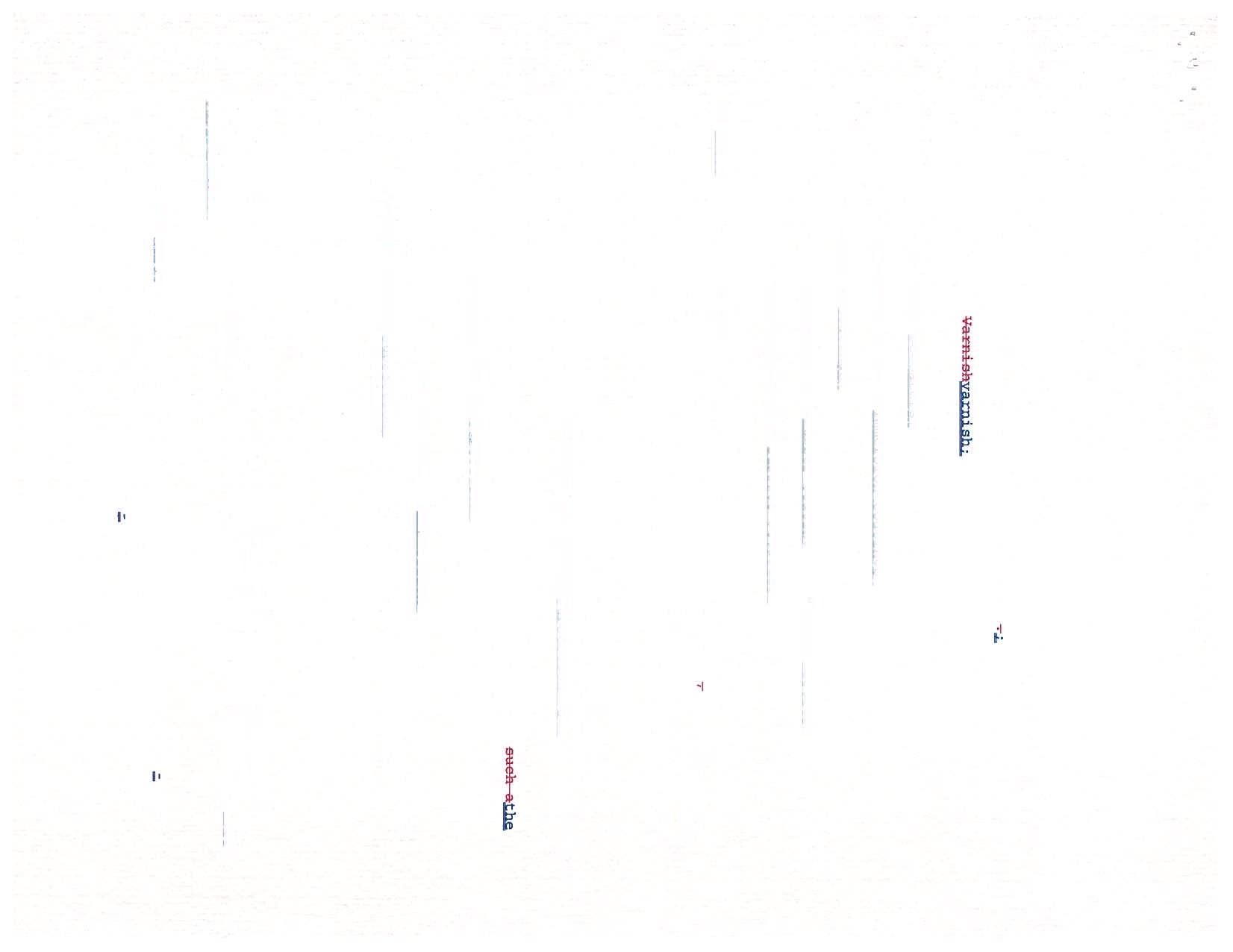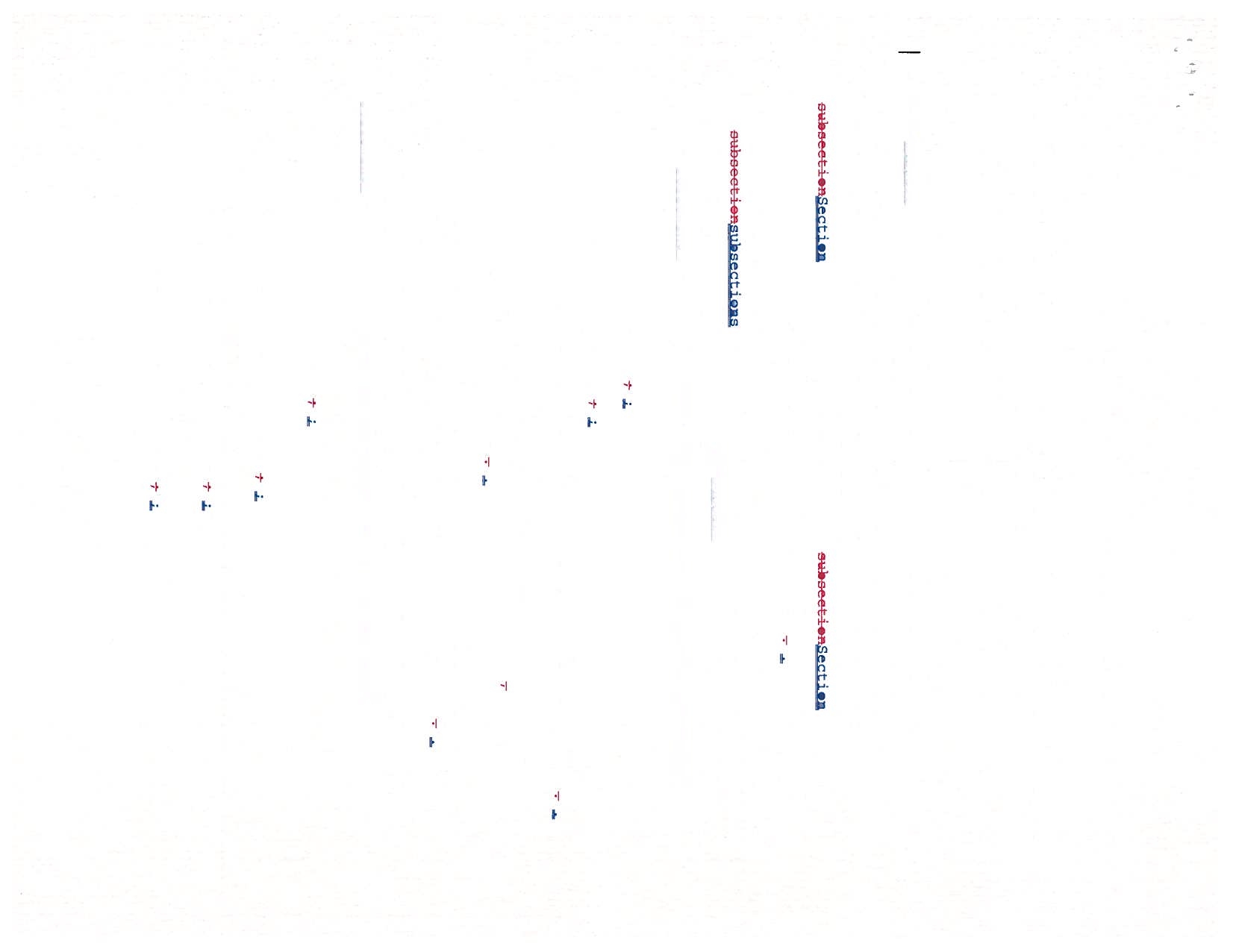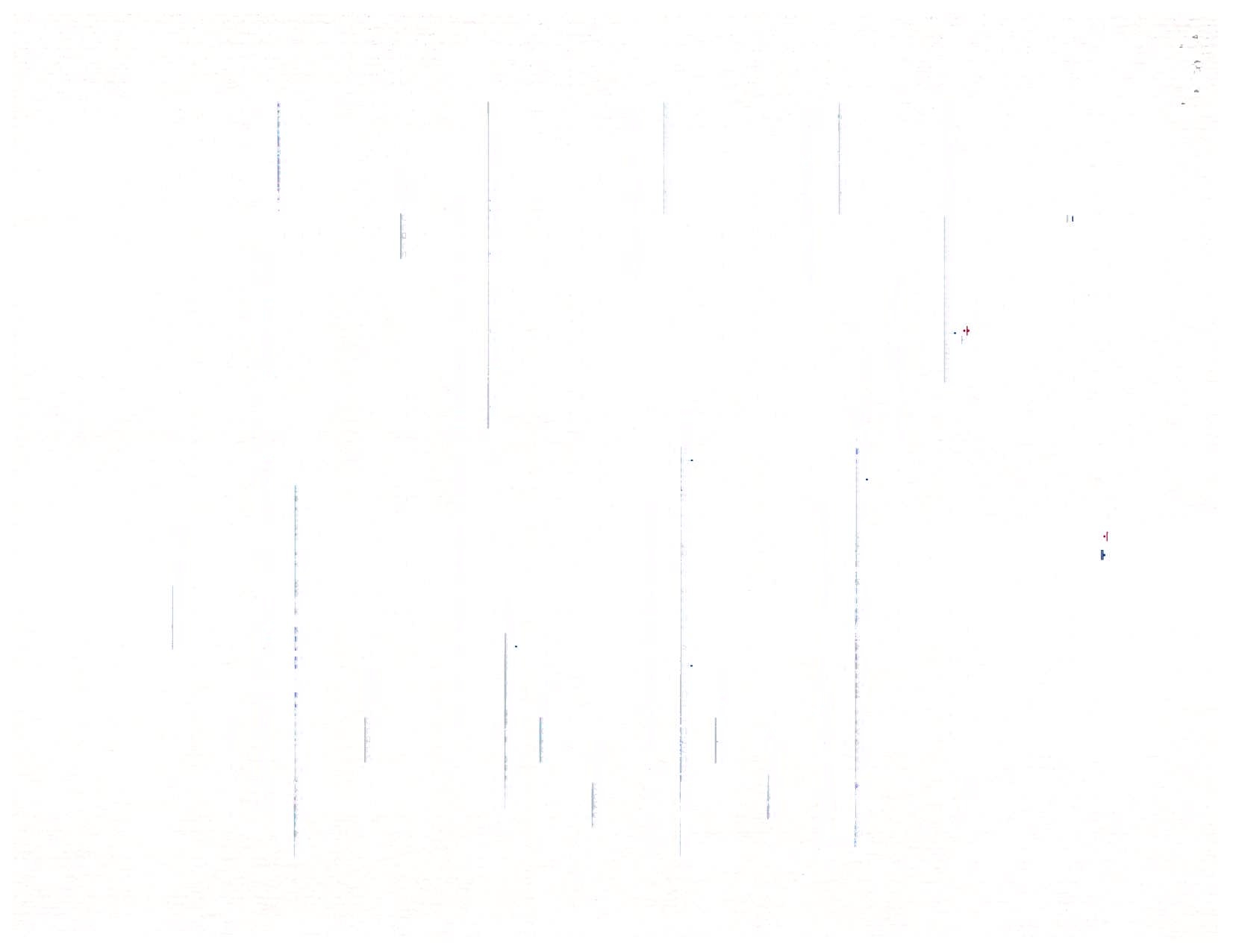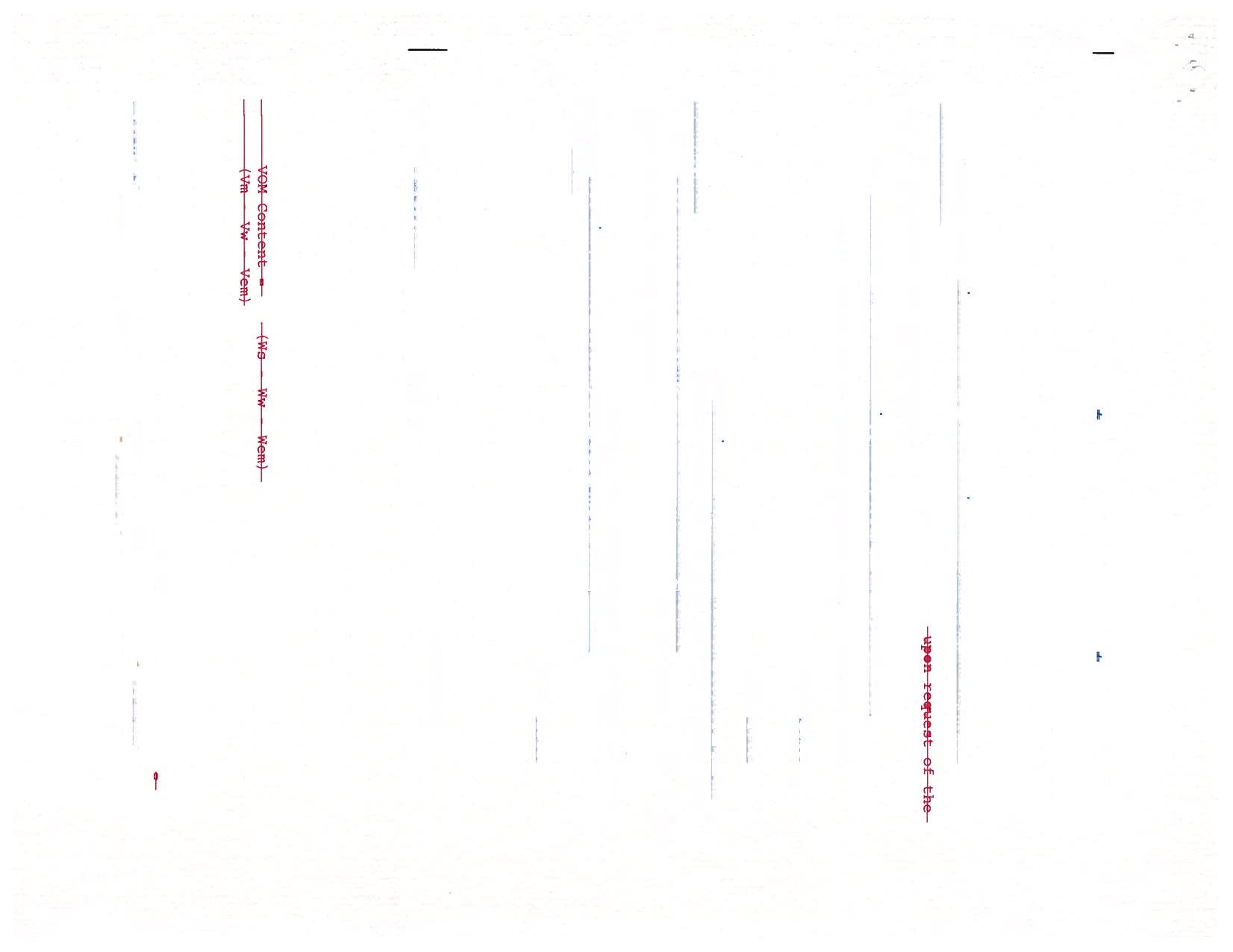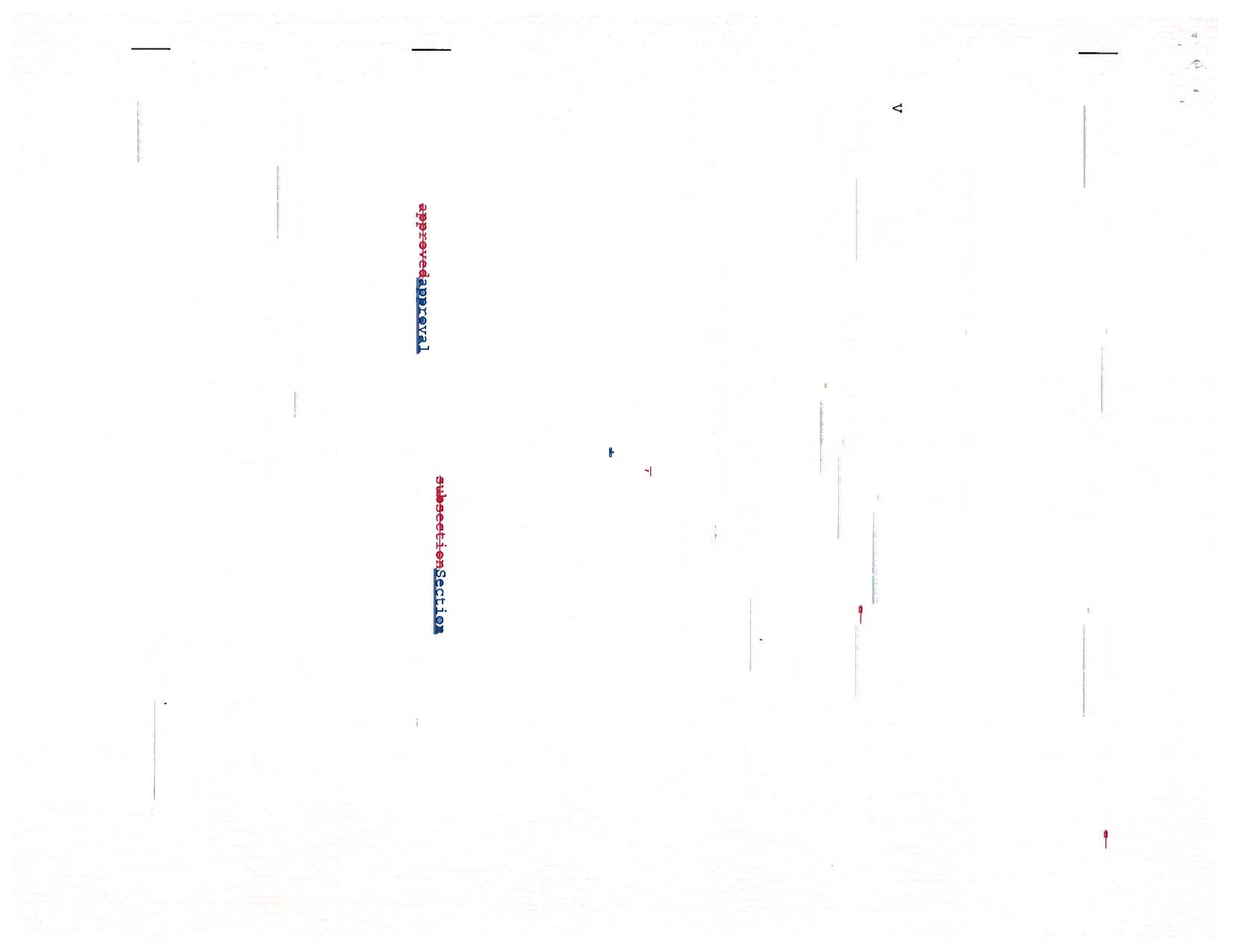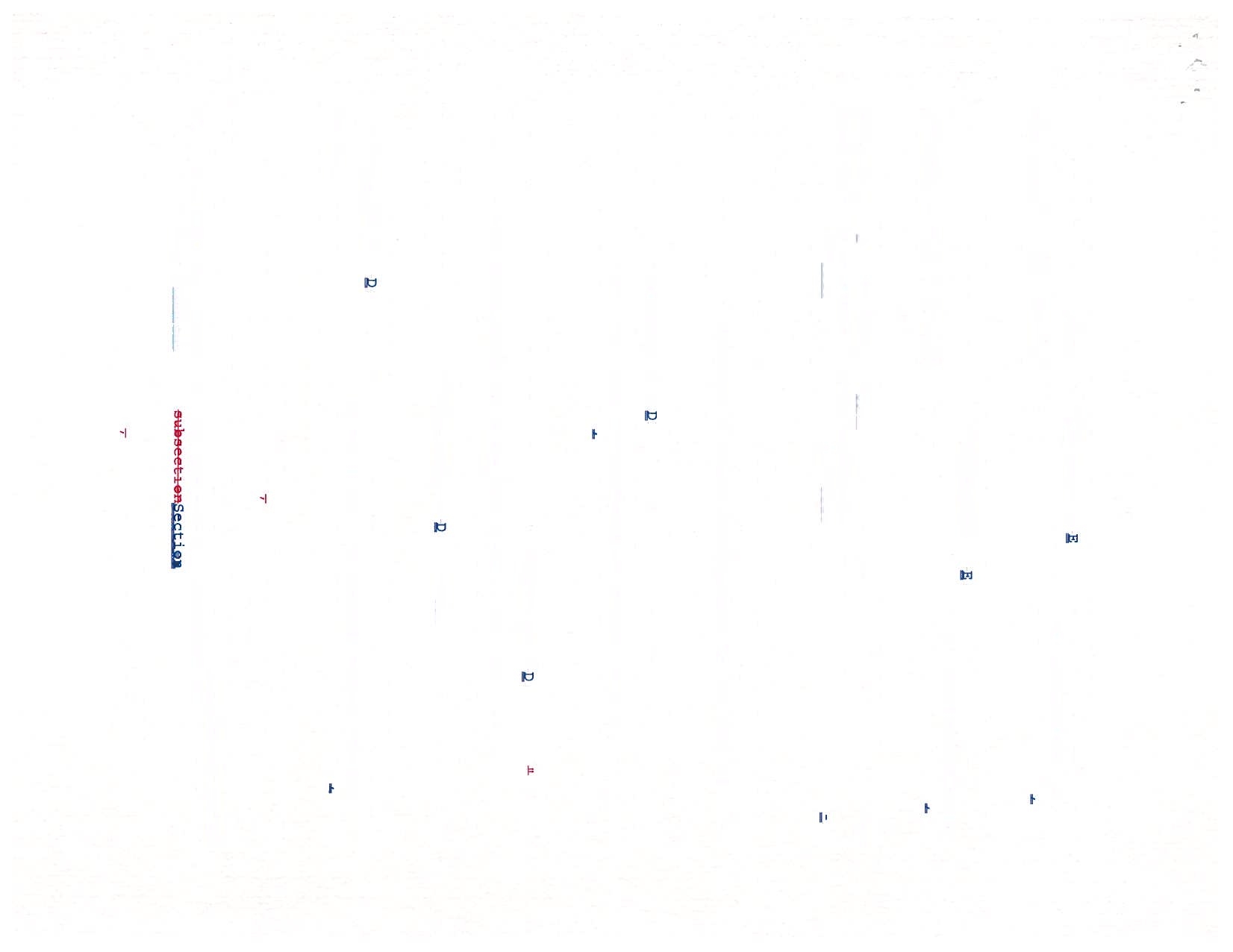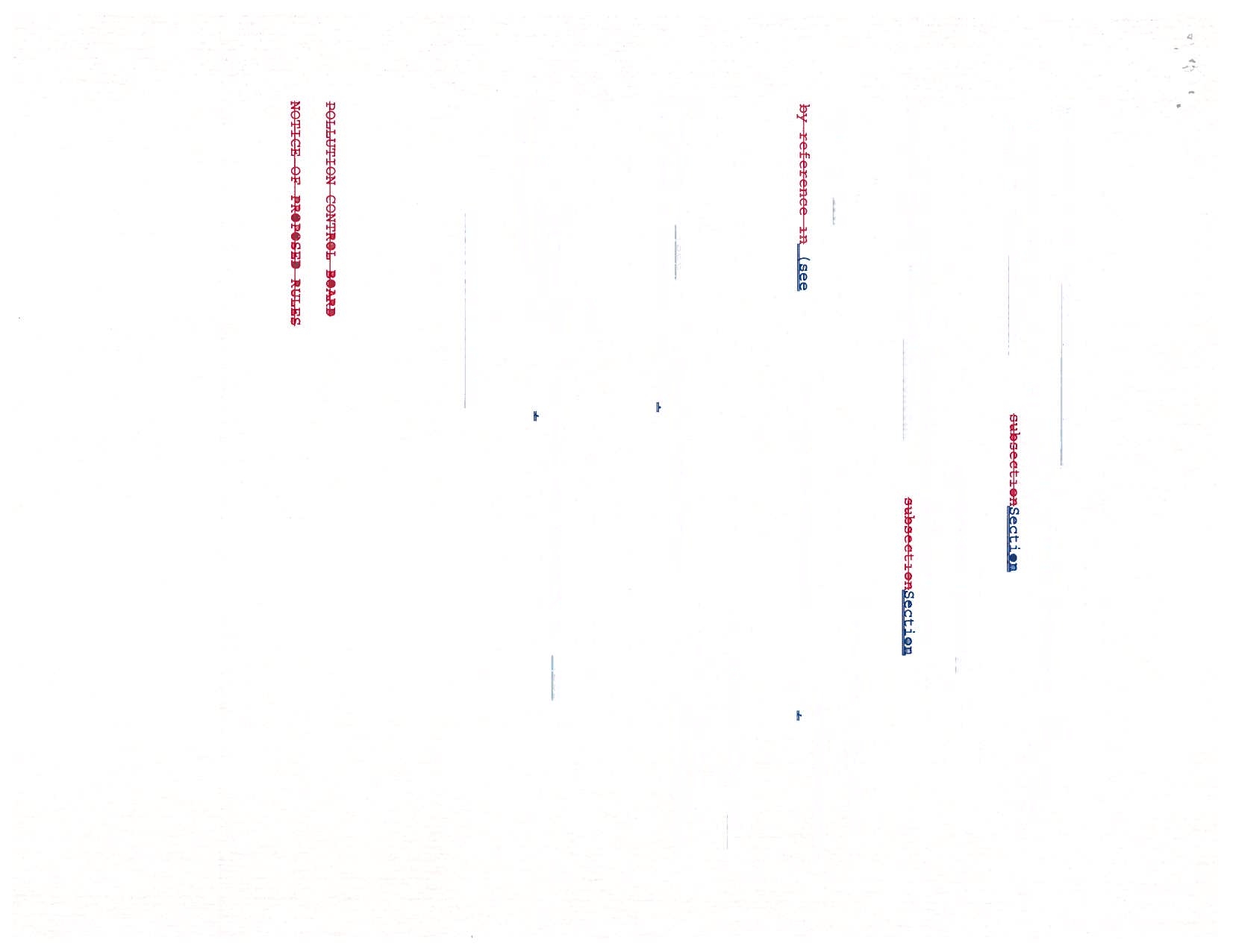TITLE 35:
ENVIRONMENTAL
PROTECTION
SUBTITLE B:
AIR POLLUTION
CHAPTER I:
POLLUTION
CONTROL
BOARD
SUBCHAPTER
C:
EMISSION STANDARDS
AND
LIMITATIONS
FOR STATIONARY
SOURCES
PART 223
STANDARDS
AND LIMITATIONS
FOR
ORGANIC
MATERIAL
EMISSIONS
FOR AREA
SOURCES
SUBPART
A:
GENERAL
PROVISIONS
Severability
Abbreviations
and
Acronyms
Incorporations
by
Reference
Electronic
ClepncrCleaners,
Electrical ClcancrCleaners,
Energized
Electrical
ClcancrCleaners,
and Contact
Adhesives
223.270
Reporting
Requirements
223.275
Special
Recordkeeping Requirements
for
Consumer
Products that
Contain
Perchioroethylene
or Methylene
Chloride
223.280
Calculating Illinois
Sales
223.285
Test Methods
SUBPART C:
Section
ARCHITECTURAL
AND INDUSTRIAL
MAINTENANCE
COATINGS
Purpose
Applicability
Definitions
for Subpart
C
Standards
Container
Labeling
Requirements
Reporting
Requirements
Compliance
Provisions
and Test Methods
Alternative
Test Methods
Methacrylate Traffic
Coating
Markings
Section
223.100
223 .105
223.120
SUBPART B:
Section
223.200
223.201
223.203
223.205
223.206
223.207
223.208
223.209
223.210
223.220
223.230
223.240
223.245
223.250
223 .255
223.260
223.265
Removers,
2008
P7;j
CONSUMER AND
COMMERCIAL
PRODUCTS
Purpose
Applicability
Definitions
for
Subpart
B
Standards
Diluted Products
Products
rcgiztcrcdRecistered
under
FIFRA
Requirements
for
Aerosol Adhesives
Requirements
for Floor
Wax Strippers
Products
Containing Ozone-Depleting
Compounds
Requirements
for Charcoal Lighter
Material
Exempt
ions
Innovative
Product
Exemption
Alternative
ControlComoliance
Plans
Product Dating
Additional Product
Dating Requirements
Most Restrictive
Limit
Additional
Labeling
Requirements for
Aerosol Adhesives,
Adhesive
223.300
223.305
223.307
223.310
223.320
223.330
223.340
223.350
223.360
o
Io
-d3q
0CD
CD
H-Hi
CD
(
0
-J
‘J
-
IICDU)
-
OCDHCD
U)CD
CD
MSCDH
0
b1
0
Cli
c
H
w
CrCD
I
1HCD
-
Oiij
I
ICrCD
H-d
H-I
Htfl
H-
CDH-
H-
U1
C)
Q
w
O
0
IIH-
0
P
(PI
CD
Cl)
0
)1<
0
i
Cli
Oi
H
CiD4:;
JI
I
-I
CDU)U)c
Cl)
U)HiH
C!)
Cl)
C!)
L’J
M
OH
3
JHh
3
Cr10
3
H
H
0
O
-
t$rt
CD
-
-
Cr
Cr
M
OCDCD
L\)
i
çi
rJ
(1)
<
I
—
CDClrtCl
M
iClO
L’J
(DH-
w
OCD
w
-,
CDCr
w
Q
0-
CD10
HI
O
CD
H
OHO
H
0
H
3
-
O
-
(DCDCD
-
HH-
-
0
I-ti
3
‘Fl-
11
IOH
I?tI
H-
0
3
0
Lii
Cr
(tH
CD
H-CD
O10
U)
CDO
H
C!)
‘JH
-<
CDCD
FI-
CDM,
Cl)
01
i
0
CD
U)
CD
-
CD
CD
00
Lii
II
CDd
-
H-H-
-
0c11-
HCrCn
H
S
lb
-
CD
-
H-
H-
W
H-
0
Cr
H-
CD
U)
CDCD
I-
OH
i
Cl)
CD
1-’-
L’JCD
Cr
CT)
-
tlfl
H-1
0
CDb
L
Ii
35
CD
CDH
CD
-
I(
q1-r
3
CD
U)
MiU)
II
<
CD
c-C
H
H-
Ct
H-
CD0
CD
I
t-rr
0
I
H-
0
CDMiCD
Cl)
I
H-3
j
DJU)
-
(10
-
3
Hi
O(-t
C)
I
OH-
O
1CD
0
‘!)H
H-
b
H
C!)
S
‘-SI
CDH
CD
OCD
H-
0
CD
ctCD
CDH-
CD
-
°
H
H-
Cr
o
H
cc
CDO
CD
CD
9-
0tj-I
91
CD
r
Cn
01
CD
CD
Cr
0
1
H
II—
St.Q
Cr
?tt
Cr
I-
f)
,
I
c-c
cc
H-
3
<
-
H
H
(-I
[1
H-
It
I
J
0
i
CD
Cr
W
H
g
i
-
cb
H
H-
CD
CD
i
p
cc
3
CD
[-
CD
U)Q
0
-
)JKDCD
1
I)I
C
H-
HO
<
w
Q
II
3
Cl)
-
-
Cr
IZ
ç
3
CI
H-H-
H
I-I
3
0Cl
U)
Cr
-
-j
H
o
b
Cr
-
H-Hll
CIJCrCD
H
CD0
CDCD
CD
°
CrO0l
C)
H-
Q
H<CD
o
U)
-t
0
U)
H
c-re
H-
I
H-CD
0
CD
H-CDI
0O0
c-r
CDt1LXI
-
WHOI
CT)
j
0
HiHi
(t1
H-
t-ti10
-
-
OCDCDQCrI
TI)
1
CD
him
0
-
-
cc
CD
<
H-
H
ctH
CDCD
-
iWhiH-l
0
ctCr
10
I
hi-h
I1H-
-
-
tlCDCrSOI
H
Cl-
hi
(I)
CDH--
-
O10HCDhi
H
—
H-H-
•
-
h0O
CDCDhihi
C)
CDCJ)
Cr
CT)
hipj
U)S10CrO
cC
Cl)
Hi
CDhSU)
CD
CDohi
H
hi
CD
CDCD
1
-r
WhiPJHC-ccc
hi
CD
DiD)
—
Cr
-
H
-
OCrhi
CD
I-
H.
CD
CDct
-w
CD
0CiO
TI)
Crc-C
CD
(J]
3
CDH-
I-ti
Hi
O
H-H
-
-
OFf-OH
0
b
CDH-
Hi
H+
CD
CD
Cr
CDDiCrU1b
H
h(
U)U)
CD
I
•
Hd
cttimtCD
+1
H
CD
0
C)CD
I
-
FI(OH
0
CDHi
Cr
Cnhi
H
°CD
I
0
D
H-
0
H-
CD,
CD
CDH.
10
dtiOn
hi
cc
CD
—.CD
U)
Oc-l-
-
-
(I)f4-
10
H-
0CD
I-
0
H
I
IbCr
CD
-
-
CD
hi
CDH-
I
w
-
hi
110
H-
O
hi
hiCD
I
IU)C!)
Cr
H
-
.
H-
I
H-
CD
<
01
0)
0
I-Jr-I
‘1
CD
‘<H
O
hi
dt
H
CD
flU)
Cr
O
D)
CD
U)
H
N
‘hi
<
CD
CDH-
I
CDCD
I-I
H-
I
,CD
-
TI)
I
0
I
TI)
-
1
ICDCr
IOCD
Cr
H-
I
,CD
,j,
-I
CrCr
H-
hi
CDU)
I
H-CD
I-)
Cr
c-C
O
H-
C)
U)
L3
Cr
CD
0
P-’x1
CD
H-
H-
0
Cl)
CDO
I-I
CD
U)
0
Cr
3
hi
H
(1)
-
.
CD
hi
0
I--I
U)
Cr
a)
40
CFR
59, Subpartsubtart
D,
Appcndixaooendix
A, Determination
of Volatile
Matter
Content of Methacrylate Multicomponent
Coatings Used as Traffic Marking
Coatings, 64
Fed. Reg. 35002
(June
30,
1999)
b)
40 CFR 59, Subpartsuboart C,
National
Volatile Organic Compound Emission
Standards for
Consumer
Products, 69
Fed.
Reg. 18803 (April 4,
2004)
c)
40 CFR 60, Appcndixatoendix A, Method 24, Determination of Volatile
Matter
Content, Water Content, Density, Volume Solids, and Weight Solids of Surface
Coatings, 36
Fed. Reg. 24877
(December
23,
1971)
d)
40 CFR 82,
Subpartsuboart
A, Appcndixaooendix A, Class I
eea---e1-1-e4Contro11ed
Substances, 68 Fed. Reg. 42892 (July 18, 2003)
and
Appcndixaooendix B, Class II Controlled Substances,
68 Fed.
Reg.
2859 (January
21,
2003L
e)
29
CFR
1910.1200(d) (4),
Hazard Communication,
61 Fed. Reg. 9245
(March
7,
1996)
f)
ASTM
International, 100 Barr Harbor
Drive, P0 Box C700, West
Conshohocken-r
PA-
7 19428-2959.
1)
ASTM Ell9-05a, Standard Test Methods for Fire
Tests of Building
Construction and Materials, approved November 1,
2005.
2)
ASTM Dccignat±on D523-89
(l999)
Standard Test Method
for Specular Gloss,
approved
May 10, 1999.
3)
ASTM D1640-03, Standard Test Methods for Drying, Curing,
or
Film
Formation
of
Organic Coatings at Room Temperature, approved December 1,
2003.
4)
ASTM Mcthod D3912-95
(200l)
Test Method for Chemical
Resistance of
Coating Used
in Light-Water Nuclear Power Plants,
reapproved 2001.
5)
ASTM
Mcthod
D4082-02, Test Method for Effects
of Radiation on Coatings
Used in
Light-Water Nuclear Power Plants, approved
2002.
6)
ASTM Dccignation D42l4-98, Standard Test
Methods for Evaluating the Degree
of
Chalking of Exterior Paint Films, approved
August 10, 1998.
7)
ASTM D1613-03, Standard Test Method for
Acidity in Volatile Solvents
and
Chemical Intermediates Used in Paint, Varnish, Lacquer,
and Related Products,
approved October 1, 2003.
8)
ASTM E84-07, Standard Test Method for Surface Burning Characteristics
of
Building Materials, approved 2007.
9)
ASTM D4359-90
(2006)
Standard Test
Method
for Determining Whether a
Material is
a
Liquid or
a
Solid, reapproved 2006.
10)
ASTM E260-96
(2006)
Standard Practice
for Packed Column Gas
Chromatography, reapproved 2006.
11)
ASTM E2l67-0l, -‘i-Standard Guide for Selection
and Use of Stone
Consolidants-’-
(see
section 4, Stone Consolidant),
approved 2001.
12)
ASTM C836-06,
Specification for High Solids Content,
Cold
Liquid-Applied
Elastomeric
Waterproofing Membrane for
Use
with Separate Wearing Course,
approved 2006.
13)
ASTM D86-07b, Standard Test Method for
Distillation
of Petroleum Products
at
Atmospheric Pressure, approved 2007.
g)
South Coast
Air Quality Management District, 21865 Copley Dr., Diamond Bar
CA 91765.
1)
South Coast
Air Quality Management District (SCAQMD) Method 304-91,
Determination
of Volatile Organic Compounds in Various Materials, revised
February 1996.
2)
SCAQMD
Method 303-91, Determination of Exempt Compounds, revised February
1993.
3)
SCAQMD
Method 318-95, Determination of Weight Percent Elemental Metal
in
Coatings by
X-Ray Diffraction, approved July 1996.
h)
Bay
Area Air Quality Management-- District Office, 939 Ellis Street,
San
Francisco-r
CA 94109
94109.
1)
Bay Area
Air Quality Management District (BAAQMD) Method 43,
Determination
of Volatile
Methylsiloxanes in Solvent-Based Coatings, Inks, and Related
Materials, proposed
amendment February 4, 2004.
2)
BAAQMD
Method 41, Determination of Volatile Organic Compounds in Solvent-
Based Coatings
and Related Materials Containing Parachlorobenzotrifluoride,
proposed amendment
February 4, 2004.
1)
California
Air Resources Board
(CARB)
Method 310, Determination of
Volatile Organic
Compounds in Consumer Products and Reactive Organic
Compounds
in Aerosol Coating
Products, amended May
5,
2005. California Air Resources
Board, 1001 I Street, P.O.PQ
Box 2815,
Sacramento-r
CA 95812.
j)
SCAQMD Rule 1174, Ignition Method Compliance Certification Protocol
(adopted
October 5,
1990)
k)
Cal. Admin.California Code
of
Requlations (CCR). title 17
§
94509(h),
Standards for Consumer
Products (2005)
1)
California Code, Health and Safety Code,
§
41712(h)
(2) (2005)
m)
Cal. Admin. Code tie±c
17,17 CCR Article 4, Alternate Control Plan
§
94540-94555,94555
(1996).
n)
Cal. Admin. Codc
titlc
17
CCR
§
94511,
Innovative
Products
(1997)
0)
Codc titlc
17
CCR
§
94503.5,
Innovative
Products
(1996).
p)
7 USC 136 to l36y,
FIFRA, Environmental Pesticide
Control,
published
January
19, 2004, in Supplement III of the 2000 Edition
of
the United
States Code.
q)
Federal Specification MMM-A-l8lD, Adhesives, Phenol, Resorcinol, or
Melamine Base
(1980)
SUBPART B:
CONSUMER AND COMMERCIAL PRODUCTS
Section 223.200
Purpose
The purpose
of this Subpart is
to
limit
emissions of volatile organic
materials
(VOM5)
by
requiring reductions in the VOM
content of consumer and commercial
products.
Section 223.201
Applicability
Except as
provided in Section 223.230,
below, this Subpart shall apply
to any
person who
sells, supplies, offers for
sale, or manufactures consumer
products
on or after
January 1, 2009, for
use in Illinois.
Section 223.203 Definitions for Subpart B
The definitions contained in this Section apply only
to the provisions of
this
Subpart.
Unless otherwise defined hcrcinin
this
Section,
the definitions
of
terms used
in this Subpart shall have the
meanings specified for those terms
in
35
Ill. Adm. Code
Part
211.
HAdhesiveTl
means for purposes of
this Subpart, any product that is used
to bond
one surface to
another
by attachment.
This does not include products used
on
humans
and animals, adhesive
tape, contact paper, wallpaper, shelf liners,
or
any
other product with an adhesive incorporated
onto or in an inert substrate.
For
“Contact Adhesive-
7”adhesive
does
not
include units of product, less
packaging, whichthat consist of more than one
gallon. For “Construction,
Panel,
and
Floor Covering
AdhesiveTT
and “General Purpose
Adhesive--” “Adhesive”
does
not
include units of product, less packaging,
whichthat weigh more than one
pound and consist of more than 16 fluid ounces. This
limitation does not
apply
to
aerosol adhesives.
“Adhesive
Remover” means a product designed
to
remove
adhcsivocadhesive from
either a specific substrate or a variety of substrates. “Adhesive Remover”
does
not include products that remove adhesives intended exclusively for
use on
humans or animals.
For the purpose of this definition and
the
“Adhesive
Remover” subcategories
bclowlisted
in this definition,
the term “Adhesive”
shall mean a substance
used
to
bond one or more materials. Adhesive includes,
but is not limited to
caulks, sealants, glues, or similar substances
used for the purpose of forming
a
bond.
“Floor and Wall
Covering
Adhesive Remover” means
a
product
designed or labeled
to
remove floor or wall coverings and associated adhesive
from the underlying
substrate.
“Gasket or Thread
Locking
Adhesive Remover” means
a
product designed or
labeled
to
remove
gaskets
or thread locking
adhesives. Products labeled for dual
use
as
a paint
stripper and gasket remover
and/or thread locking adhesive remover
are
considered
“Gasket or Thread Locking Adhesive
Remover-r”
“General
Purpose Adhesive Remover” means
a
product
designed or labeled to
remove
cyanoacrylate adhesives as well as non-reactive adhesives
or residue from
a
variety of substrates. “General Purpose Adhesive Remover”
includes, but is
not
limited
to the following: products that remove thermoplastic
adhesives,
pressure sensitive
adhesives, dextrine or
starchbased adhesives, casein glues,
rubber or latex-based
adhesives, and products
that remove stickers, decals,
stencils, or
similar materials. “General Purpose Adhesive
Remover” does not
include
“Floor
or Wall Covering Adhesive
Remover--”
“Specialty Adhesive Remover” means a product designed
to
remove reactive
adhesives
from a variety of substrates. Reactive adhesives include
adhesives
that require a
hardener or catalyst in order for the
bond to occur. Examples of
reactive
adhesives include, but are not limited
to epoxies, urethanes, and
silicones.
“Specialty Adhesive Remover”
does
not include
“Gasket or Thread
Locking
Adhesive Remover.”
“Aerosol
adhcoiveAdhesive” means an aerosol
product in which the spray mechanism
is permanently housed
in
a
nonrefillable
can designed for hand-held application
without the need
for ancillary hoses or
spray equipment. This does not include
“special purpose
spray adhesives--”
“mist spray adhesives” and “web spray
adhesives--”
“Aerosol
cooking
cprayookina
Spray”
means any aerosol
product designed either
to reduce
sticking on cooking and baking surfaces
or to be applied on food, or
both.
“Aerosol Product”
means a pressurized spray system that dispenses product
ingredients by
means
of a propellant contained in
a
product
or a product’s
container,
or
by
means
of a mechanically induced force. “Aerosol Product”
does
not include
“Pump Spray--”
“Agricultural
sefla”
means the
use
of any pesticide
or method or device for
the control of pests
in connection with
the
commercial
production, storage,
or
processing of any
animal or plant
crop. This does not include the sale or
use
of pesticides in
properly labeled
packages or containers that are intended
for
home
use,
use in structural pest
control,Qr
industrial or institutional
use.
For the purposes of this definition only:
“Home
*seU”
means use in a household or its immediate environment;
“Structural pcct
controlPest Control” means
a
use requiring a license under
the
Structural Pest
Control
7
Act-j225 ILCS
2351;
“Industrial
ueeUe”
means use for or in a manufacturing, mining, or chemical
process
or use in the operation of factories, processing plants, and similar
sites;—o
“Institutional
seU”
means use within the lines of, or on property
necessary
for
the operation of, buildings such as hospitals, schools, libraries,
auditoriums, and office complexes.
“Air Freshener” means any consumer product including, but not limited
to,
sprays, wicks, powders, and crystals, designed for the purpose of masking
odors,
or
freshening,
cleaning,
scenting, or deodorizing the air. “Air Freshener”
does
not
include products
that are
used on the human body, products that function
primarily as
cleaning products as indicated on a product label, “Toilet/Urinal
Care Products-
7”
disinfectant products claiming to deodorize by killing germs on
surfaces, or
institutional and industrial disinfectants when offered
for
sale
solely
through institutional and industrial channels of distribution. “Air
Freshener” does
include
spray disinfectants
and other products that are
expressly
represented for use as air fresheners, except institutional
and
industrial
disinfectants
when
offered for sale through institutional
and
industrial
channels of
distribution. To
determine
whether
a product
is
an air
freshener,
all verbal and
visual
representations regarding product use
on
the
label or
packaging and in the product’s literature and advertising may be
considered.
The presence of, and representations about, a product’s
fragrance
and ability to
deodorize
(resulting
from surface application) shall not
constitute a
claim of air freshening.
“All Other
Carbon-Containing Compounds” means all other compounds whichthat
contain at least
one carbon atom and are not listed under Section
223.205(a)
or
are
a
“LVP-VOM--’L
“All Other Forms”
means all consumer product forms for which no form-specific
VOM standard is
specified. Unless specified otherwise
by
the applicable VOM
standard,
“All
Other Forms” include,
but ar-ejz
not
limited
to,
solids, liquids,
wicks, powders,
crystals, and cloth or paper wipes
(towelettes)
“Alternative
Control
PlanJL
or
ILACP”
means any emissions averaging program
approved
by
the
Agency pursuant
to
the provisions of this
-egu-a-t4eSubpa.
“Antimicrobial
Hand
or Body Cleaner or
Soap”
means
a
cleaner or soap whichthat
is
designed to reduce
the level of microorganisms on the skin through germicidal
activity.
This
includes, but is not limited to, antimicrobial hand or body
washes/cleaners, foodhandler hand washes, healthcare personnel hand
washes,
pre
operative
skin preparations and surgical scrubs. “Antimicrobial Hand
or
Body
Cleaner
or
Soap”
does not include prescription drug products, antiperspirants,
“Astringent/Toner---” deodorant, “Facial Cleaner or Soap--” “General-use
Hand
or
Body
Cleaner or Soap” “Hand Dishwashing Detergent” (including
antimicrobial),
“Heavy-duty
Hand Cleaner or Soap--” “Medicated Astringent/Medicated Toner”
and
Qt
“Rubbing
AlcohoL-”
“Antiperspirant”
means any product including, but not limited to, aerosols,
roll-ons,
sticks, pumps, pads, creams, and squeeze-bottles, that is intended
by
the
manufacturer
to be
used
to
reduce perspiration in the human axilla by at
least
20 percent in at
least
50
percent of a target population.
“Anti-Static
Product” means a product that is labeled to eliminate, prevent,
or
inhibit the
accumulation of static electricity. “Anti-Static Product” does not
include
“Electronic
CleanerT”
“Floor Polish or
WaxT”
“Floor
Coating-r”
and
products that
meet the definition of “Aerosol Coating Product” or
“Architectural
Coating--”.,
“Appurtenance”
means any accessory to a stationary structure coated at the site
of
installation, whether
installed
or detached,
including
but nenQt
limited
to,
bathroom
and kitchen
fixtures,
cabinets,
concrete forms,
doors,
elevators,
fences,
hand railings,
heating equipment, air conditioning equipment, and
other
fixed
mechanical
equipment
or
stationary tools, lampposts, partitions pipes
and
piping systems,
rain gutters and downspouts, stairways, fixed ladders, catwalks
and
fire escapes,
and window screens.
“Architectural
Coating” means for purposes
of this Subpart, a coating to
be
applied to
stationary structures or the
appurtenances at the site of
installation, to
portable buildings
at
the
site of installation, to pavements,
or to curbs.
Coatings applied in shop applications
or to non-stationary
structures such as
airplanes, ships,
boats, railcars, and automobiles, and
adhesives are not
considered
“Architectural Coatings” for the purposes of this
“Astringent/Toner” means any product not regulated as
a
drug
by
the United
States
Food and Drug Administration
(FDA)
wheIth
is applied
to
the skin for
the purpose of cleaning or tightening pores. This category also includes
clarifiers and substrate-impregnated products. This category
does
not include
any
hand, face, or body cleaner or soap product, “Medicated
Astringent/Medicated
Toner--”,
cold cream, lotion, or antiperspirant.
“Automotive Brake Cleaner” means a cleaning product designed
to
remove oil,
grease, brake fluid, brake pad material or dirt from motor vehicle brake
mechanisms.
“Automotive
Hard Paste Wax” means an automotive wax or polish whichthat is
designed to protect and improve the appearance of automotive paint surfaces,
and
is
a
solid at room temperature, and contains 0% water by formulation.
“Automotive Instant Detailer” means a product designed for use in a pump
spray
that is applied to the painted surface of automobiles and wiped off prior
to the
product being allowed to dry.
“Automotive Rubbing or Polishing Compound” means a product designed primarily
to
remove oxidation, old paint, scratches or swirl marks, and other defects
from
the
painted surfaces of motor vehicles without leaving
a
protective barrier.
“Automotive Wax, Polish, Sealant, or Glaze” means
a
product designed
to seal
out
moisture, increase gloss, or otherwise enhance a motor vehicle’s painted
surfaces. This includes, but is not limited to, products designed for
use in
autobody
repair shops and drive-through car washes,
as
well
as
products
designed
for
the general public. The term does not include “Automotive Rubbing or
Polishing
Compounds--” automotive wash and wax products, surfactant-containing
car
wash products, and products designed for use on unpainted surfaces
such as
bare
metal,
chrome, glass, or plastic.
“Automotive
Windshield Washer Fluid” means
any liquid designed for use in
a
motor
vehicle windshield washer system either
as an antifreeze or for the
purpose of
cleaning, washing, or wetting the windshield.
This does not include
fluids placed by
the manufacturer in
a
new vehicle.
“Bathroom
and Tile Cleaner” means
a
product
designed to clean tile or surfaces
in
bathrooms. The term does not include products designed primarily
to clean
toilet
bowls, toilet tanks or urinals.
“Bug
and Tar Remover” means a product labeled
to
remove either or both of
the
following from painted motor vehicle surfaces without causing damage
to the
finish: biological-type residues such as insect carcasses, tree
sap
and road
grime--
such as road tar, roadway paint markings, and asphalt.
“Carburetor
or Fuel-Injection Air Intake Cleaners” means
a
product designed
to
remove
fuel deposits, dirt, or other contaminants from
a
carburetor,
choke,
throttle
body of a fuel-injection system, or associated linkages, excluding
products
designed exclusively to be introduced
directly into the fuel lines
or
fuel
storage
tank prior to introduction into
the carburetor or fuel injectors.
“Carpet
and
Upholstery
CleanerTT
means
a
cleaning
product designed for the
purpose of
eliminating dirt and stains on rugs,
carpeting, and the interior
of
motor
vehicles
and/or on household furniture
or objects upholstered or covered
with fabrics
such
as
wool, cotton, nylon
or other synthetic fabrics. This
includes,
but
is not limited to, products
that make fabric protectant claims.
The
term does
not include “General Purpose
Cleaners--” “Spot Removers-
7’vinyl
or leather
cleaners, dry cleaning fluids,
or products designed exclusively
for
use at
industrial facilities engaged in
furniture or carpet manufacturing.
“Charcoal Lighter
Material” means
any combustible material designed
to be
applied on,
incorporated in,
added to, or used with charcoal
to
enhance
ignition. The term does not
include
any of the following: electrical
starters
and probes,
metallic cylinders using
paper tinder, natural
gas,
propane,
and fat
wood.
“Colorant” means
for purposes of
this Subpart, any pigment or coloring
material
used in a
consumer product for an
aesthetic
effect-r
or
to
dramatize an
ingredient.
“Construction,
Panel, and Floor Covering
Adhesive” means any one-component
adhesive that is
designed
exclusively for the installation, remodeling,
maintenance,
or repair of structural and building components
that include,
but
are not limited to, beams, trusses, studs, paneling (including,
but not limited
to,
drywall or drywall laminates, fiberglass reinforced
plastic
(FRP),
plywood,
particle board, insulation board, pre-decorated
hardboard or
tileboard),
ceiling
and acoustical tile, molding, fixtures,
countertops or countertop laminates,
cove or wall bases, flooring or subflooring-
or floor or wall coverings that
includc(inc1udino but arc not limited
to,
wood
or simulated wood covering,
carpet, carpet pad or cushion, vinyl-backed carpet, flexible
flooring material,
nonresilient flooring material, mirror tiles and other
types of tiles, and
artificial
grass. The
term
does not include “Floor Seam Sealer--”
“Consumer”
means any person who
purchases or acquires any consumer product
for
personal, family, household, or institutional
use. Persons acquiring
a consumer
product
for resale are not “consumers”
for that product.
“Consumer Product” means a chemically
formulated product used by household
and
institutional consumers including,
but not limited to detergents, cleaning
compounds, polishes, floor finishes,
cosmetics, personal care
productsi-
home-r
lawn-
7 and garden products, disinfectants,
sanitizers, aerosol paints, and
automotive specialty products. “Consumer Product”
does not include other
paint
products,
furniture coatings, or
architectural coatings. As
used
in this
ruleSuboart,
“Consumer ProductzProduct”
shall also refer to “Aerosol
Adhccivcc,”Adhesive”. including
n”Aerosol
AdhccivczAdhesive”
used for
consumer, industrial or commercial
uses.
“Contact Adhesive” means an adhesive
that is designed for application
to both
surfaces
to be
bonded together,
and is allowed to dry before the two
surfaces
are
placed in contact with each other,
and forms an immediate bond that is
impossible, or difficult, to reposition after
both adhesive-coated surfaces
are
placed in contact with each other, and
does
not
need sustained pressure or
clamping of surfaces after the adhesive-coated surfaces
have been brought
together using
sufficient momentary
pressure
to
establish full
contact between
both
surfaces. The term does not
include rubber cements that are primarily
intended for
use on paper
substrates.
Contact
Adhesive
also does not
include
vulcanizing
fluids that are
designed
and
labeled for
tire
repair only.
Contact Adhesive
- General Purpose
means any
contact adhesive
that is not
a
Contact
Adhesive
- Special
Purpose--”
‘Contact
Adhesive
- Special
PurposeT
means
a
contact adhesive
that is
used to
bond
melamine-covered
board, unprimed
metal,
unsupported
vinyl,
Teflon, ultra
high molecular
weight
polyethylene,
rubber, high
pressure
laminate
or
wood
veneer
1/16
inch or less
in
thickness
to any porous
or nonporous surface,
and
is
sold in
units of
product,
less packaging,
that contain
more than eight
fluid
ounces, or
is used
in
automotive applications
that
are either
automotive
under
the— hood
applications requiring
heat, oil
or
gasoline
resistance-r
or
body-side
molding,
automotive
weatherstrip
or decorative
trim.
“Container/Packaging”
means the part
or
parts
of the
consumer
or
institutional
product
whiehthat serve
only to contain,
enclose,
incorporate,
deliver,
dispense,
wrap or store the
chemically formulated
substance
or mixture
of
substances
whichthat
is solely
responsible
for
accomplishing
the purposes
for
which the
product
was designed or
intended.
This
includes any
article onto
or
into which
the principal
display panel
and
other
accompanying
literature
or
graphics
are
incorporated,
etched, printed
or
attached.
“Crawling
Bug
Insecticide” means
any insecticide
product that is
designed
for
use against
ants,
cockroaches, or
other household
crawling arthropods,
including,
but not
limited
to, mites,
silverfish
or
spiders, excluding
products
designed to
be used exclusively
on humans
or
animals,
or
any house
dust mite
product.
For the purposes
of this definition
only:
“House
dust
mite
product” means
a product whose
label,
packaging,
or
accompanying
literature
states that
the product
is
suitable
for
use against
house dust
mites, but
does not indicate
that the product
is suitable for
use
against
ants,
cockroaches,
or other household
crawling arthropods.
“House
dust
mite” means
mites
whichthat
feed primarily
on skin cells
shed
in
the
home
by
humans
and
pets
and
wh4-ehtht
belong
to
the
phylum Arthropoda,
the
subphylum
Chelicerata,
the class Arachnida,
the subclass
Acari, the order
Astigmata,
and
the family
Pyroglyphidae.
“Date-Code”
means
the day, month
and year on
which
the consumer product
was
manufactured,
filled,
or packaged,
or
a code
indicating
zuch
athat
date.
“Deodorant” means:
For
products
manufactured
before
January 1, 2009:
any
product including,
but
not
limited
to,
aerosols,
roll-ons, sticks,
pumps,
pads,
creams, and squeeze
bottles-i-
that
is intended
by the manufacturer
to
be
used
to minimize odor
in the
human axilla
by
retarding
the growth of bacteria
wb4-ehtha.t
cause the
decomposition
of perspiration.
For
products
manufactured
on or after January
1,
2009: any
product including,
but
not
limited
to, acrozolperosols,
roll-ons,
sticks,
pumps,
pads,
creams,
and
squeeze-bottles--
that
indicates
or depicts on
the
container or packaging,
or
on
any
sticker
or label
affixed
therctoto
the
container
or oackaainc, that
the
product
can be used
on
or applied to the
human
axilla
to
provide
a
scent
and/or
minimize
odor.
A “Deodorant
Body Spray” product
that
indicates
or depicts
on
the
container
or packaging,
or
on any sticker
or label affixed
thcrctoto
the
container
or
oackacinc, that
it can be
used
on or applied
to
the human axilla-
7
-
is a
TTDeodorantI
‘Deodorant
Body Spray” means
For products
manufactured
before January
1, 2009, a
“Personal
Fragrance
Product”
with
20 percent
or less fragrance.
For products
manufactured
on or after
January
1, 2009, a “Personal
Fragrance
Product”
with 20 percent
or less
fragrance, that
is designed for application
all
over the human body
to provide
a scent.
A ‘Deodorant
Body Spray” product
that
indicates
or
depicts on the
container or
packaging, or on
any sticker or
label
affixed
thcretoto the
container
or
oackagin,
that
it
can be
used on or
applied
to the
human
axilla,
is
a
“Deodorant’L.
“Device”
means
any instrument
or contrivance
(other
than a
firearm)
which
is
designed
for
trapping, destroying,
repelling,
or mitigating
any pest or any
other form
of
plant or animal life
(other
than man and other
than bacterium,
virus, or another
microorganism on
or in living
man or
other
living
animals)
but
not including
equipment
used
for
the application
of
pesticides
when sold
separately
thcrcfromfrom
the
device.
“Disinfectant”
means any product
intended
to destroy
or irreversibly
inactivate
infectious
or other
undesirable
bacteria, pathogenic
fungi,
or
viruses on
surfaces or
inanimate
objects and whose
label is
registered under
the Federal
Insecticide,
Fungicide, and
Rodenticide
Act
(FIFRA,
7 U.S.C. 136,USC
136 et
seq.)
. “Disinfectant”
does
not include
any of the following
products designed
solely
for use
on
humanbumans
or animals,
products designed
for agricultural
use,
products
designed
solely
for use in swimming
pools, therapeutic
tubs,
or
hot
tubs,
products
whi-ehth.t, as
indicated on the
principal display
panel
or
label,
are
designed primarily
for use
as bathroom
and
tile cleaners, glass
cleaners,
general
purpose
cleaners, toilet
bowl cleaners,
or metal polishes.
“Double
Phase
Aerosol
Air
Freshener”
means an
aerosol
air freshener
with
the
liquid
contents
in
two
or more distinct
phases that
require the product
container
t.Qbe
shaken
before use to
mix the phases,
producing an emulsion.
“Dry Cleaning
Fluid” means any
non-aqueous
liquid product designed
and labeled
exclusively
for use
on fabrics
wh4-ehth.t
are labeled
“for dry
clean
only--”
such
as
clothing
or
drapery-r
or
“S-coded”
fabrics.
This
includes,
but
is not limited
to,
those
products used by
commercial dry
cleaners
and commercial
businesses
that
clean
fabrics such as draperies
at the customer’s
residence
or work
place.
The term
does not
include “Spot
Remover” or
“Carpet
and Upholstery
C1eaner--’L,
For the
purposes of
this definition,
“S-coded
fabric”
means an upholstery
fabric
designed to
be cleaned
only with water-free
spot
cleaning
products
as specified
by
the
Joint
Industry
Fabric
Standards
Committee.
“Dusting Aid”
means
a product designed
to
assist
in
removing dust
and other
soils
from
floors and
other surfaces
without leaving
a wax or silicone
based
coating.
The
term
does
not include “Pressurized
Gas
Duster”.
“Electrical
Cleaner”
means a
product labeled
to
remove heavy soils
such as
grease,
grime,
or oil
from electrical
equipment,
including,
but
not
limited
to,
electric
motors,
armatures,
relays,
electric
panels,
or generators. The
term
does
not include
“General
Purpose
Cleaner-r”.
“General
Purpose
Degreaser--”
“Dusting
Aid-r”.
“Electronic
Cleaner-r”,
1
.
“Energized
Electrical
C1eaner--”
“Pressurized
Gas Duster--” “Engine
Degreaser-r”
“Anti-Static
Product-r”
or
products designed to clean the casings or housings
of electrical equipment.
“Electronic Cleaner” means a product labeled
for the removal of dirt,
moisture,
dust, flux or oxides from the internal
components of electronic or
precision
equipment such as circuit boards, and
the internal components of
electronic
devices,
including but not limited
to, radios, compact disc (CD)
players,
digital video disc
(DVD)
players, and
computers. “Electronic Cleaner”
does not
include “General Purpose
Cleaner-r”
“General Purpose Degreaser--” “Dusting
Aid--” “Pressurized Gas
Duster-r”
“Engine
Degreaser--” “Electrical
Cleaner--”
“Energized Electrical
Cleaner-r”
“Anti-Static
Product--”
or products designed
to
clean the casings or housings
of
electronic
equipment.
“Energized Electrical Cleaner”
means a product that meets
both of the following
criteria:
The product is labeled
to
clean and/or
degrease electrical
equipment, where
cleaning and/or degreasing is
accomplished when electrical
current exists,
or
when
there is
a
residual electrical
potential from
a component, such as a
capacitori-
The product label
clearly
displays the statements:
“Energized Equipmcnteauioment
use only. Not to be used for motorized vehicle maintenance,
or their parts.”
This
does not include “Electronic Cleaner---”
“Engine Degreaser” means a cleaning product
designed to remove grease,
grime,
oil and other contaminants from the external
surfaces of engines and
other
mechanical parts.
“Existing Product” means any formulation
of the same product
category and
form
sold, supplied, manufactured, or offered
for sale
in Illinois
prior to January
1,
2009,2009 or any subsequently introduced
identical formulation.
“Fabric Protectant” means a product
designed
to be applied
to
fabric
substrates
to
protect the surface from soiling from
dirt and other impurities or
to reduce
absorption of liquid into the fabric’s
fibers. The term
does
not include
waterproofers, products designed for
use solely on leather, or products
designed
for use solely on fabrics which
arc
labeled
“for dry clean only” and
sold in
containers of 10 fluid ounces or
less.
“Fabric Refresher” means
a
product
labeled to neutralize or
eliminate odors
on
non-laundered fabric including,
but not limited
to,
soft
household surfaces,
rugs,
carpeting, draperies,
bedding, automotive interiors,
footwear, athletic
equipment,
Q.rclothing
and,’or
on household furniture or
objects upholstered
or
covered
with fabrics such
as, but not limited
to,
wool,
cotton, or nylon.
“Fabric Refresher”
does
not include
“Anti-static Product--”
“Carpet and
Upholstery Cleaner-
7”“Soft Household
Surface
Sanitizers-r”
“Footwear
or Leather
Care
Product-r”
“Spot Remover--”
or 7
“Disinfectant-”or products
labeled for
application to both fabric and human
skin.
For the purposes of this definition only,
“Soft Household Surface Sanitizer”
means a product labeled to neutralize or eliminate
odors on the listed
surfaces
-i-s-tcd abovc whose label is
registered as a sanitizer
under the Federal
Insecticide, Fungicide, and Rodenticide
Act-r (FIFRA,
7
U.S.C.U
136 et seq.).
“Facial Cleaner
or
Soap”
means
a cleaner or
soap
designed primarily
to clean
the
face including,
but not
limited
to facial cleansing
creams, semisolids,
liquids,
lotions,
and
substrate-impregnated
forms.
The term
does
not include
prescription
drug
products,
“Antimicrobial
Hand or
Body
Cleaner
or
Soap-
7
-”
“Astringent/Toner-r”
“General-use
Hand or
Body Cleaner or
Soap--” “Medicated
Astringent/Medicated
Toner--”
or “Rubbing
Alcohol--”
“Fat
Wood” means
pieces
of wood kindling
with
high
naturally-occurring
levels
of
sap or
resin
whichthat
enhance ignition
of the kindling,
excluding
any kindling
with substances
added to
enhance flammability,
such
as
wax-covered
or
wax-
impregnated
wood-based products.
“Faux Finishing
Coating”
means
a coating labeled
and
formulated
as a stain
or
a
glaze
to
create
artistic
effects
including,
but not
limited to, dirt,
old
age,
smoke damage,
and simulated
marble
and wood grain.
“Flea and
Tick
Insecticide” means
any insecticide
product that
is
designed
for
use
against
fleas,
ticks,
their
larvae, or
their eggs.
The term
does not
include products
that
are
designed
to be
used
exclusively
on humans
or animals
and their
bedding.
“Flexible
Flooring
Material” means
asphalt,
cork,
linoleum,
no-wax, rubber,
seamless
vinyl and
vinyl composite
flooring.
“Floor Coating”
means an
opaque
coating
that is labeled
and formulated
for
application
to flooring, including,
but
not limited to,
decks, porches,
steps,
and other
horizontal
surfaces,
which that
may be subjected
to foot traffic.
“Floor
Polish or Wax”
means
a
wax,
polish, or any
other product designed
to
polish,
protect, or enhance
floor
surfaces
by leaving
a protective coating
that
is designed
to
be periodically
replenished.
The term does
not include
“Spray
Buff Products--”
products designed
solely
for the purpose of
cleaning floors,
floor finish
strippers,
products
designed for
unfinished
wood floors,
and
coatings subject
to
architectural
coatings regulations.
“Floor
Seam
Sealer” means
any product designed
and
labeled
exclusively
for
bonding,
fusing,
or sealing
(coating) seams
between adjoining
rolls
of
installed
flexible sheet
flooring.
“Floor Wax
Stripper” means
a
product
designed
to
remove
natural or
synthetic
floor
polishes
or waxes through
breakdown
of the polish
or wax polymers,
or
by
dissolving
or
emulsifying
the polish or wax.
This does not
include aerosol
floor wax
strippers
or products
designed to remove
floor wax solely
through
abrasion.
“Flying Bug
InsecticideT
means
any insecticide
product that
is designed for
use
against flying
insects
or other
flying arthropods,
including
but
not
limited
to
flies,
mosquitoes,
moths,
or gnats.
The
term
does
not
include “Wasp
and Hornet
Insecticide-
7
-”
products
that are designed
to be used
exclusively
on
humans
or
animals,
or
any
moth-proofing
product.
For thc purposes
of this
definition
only, “Moth-Proofing
Product”
means a
product
whose
label,
packaging, or
accompanying literature
indicates
that the
product
is designed to
protect
fabrics
from
damage
by
moths,
but does
not
indicate
that
the
product
is suitable for
use against
flying
insects
or
other
flying arthropods.
TiFootwear
or
Leather
Care Product”
means any
product
designed
or
labeled
to be
applied
to
footwear or
to
other leather
articles/components-;-
to maintain,
enhance, clean,
protect,
or modify
the appearance, durability,
fit, or
flexibility
of the footwear
or leather
article/component.
Footwear includes
both
leather
and non-leather
foot apparel.
“Footwear or Leather
Care
Product”
does
not
include
“Fabric Protectant--”
“General
Purpose
Adhesive--”
“Contact
Adhesive--”
“Vinyl/Fabric/Leather/Polycarbonate
Coating--”
“Rubber
and Vinyl
Protectant--’
“Fabric
Refresher-r”
products
solely
for deodorizing,
or sealant
products
with adhesive
properties
used to create
external protective
layers
greater than
two millimeters
thick.
“Fragrance”
means
a
substance or
complex mixture
of aroma chemicals,
natural
essential oils,
and
other functional
components
with a
combined
vapor pressure
not in excess
of two
mm of Hg at 200C,
the sole purpose
of which
is
to impart
an
odor or scent,
or to counteract
a
malodor.
“Furniture
Maintenance
Product”
means
a wax,
polish,
conditioner,
or any other
product designed
for
the purpose of
polishing, protecting
or enhancing
finished
wood surfaces
other than
floors. The
term does not
include
“Dusting
AidsTT
“Wood Cleaners”
and products
designed
solely for the
purpose
of cleaning,
and
products
designed
to leave
a
permanent
finish such as
stains,
sanding sealers
and lacquers.
“Furniture
Coating” means
any paint
designed for
application
to room
furnishings
including, but
not
limited
to, cabinets
(kitchen,
bath
and vanity), tables,
chairs,
beds,
and sofas.
“Gel”
means
a colloid in which
the disperse phase
has
combined
with the
continuous
phase
to
produce
a semisolid
material,
such as jelly.
“General
Purpose
Adhesive” means
any non-aerosol
adhesive
designed for use
on a
variety
of
substrates.
The term
does not
include contact adhesives,
construction,
panel,
and floor
covering adhesives,
adhesives designed
exclusively
for application
on
one
specific category
of
substrates
(i.e.,
substrates
that are composed
of
similar
materials, such
as different types
of
metals,
paper
products, ceramics,
plastics,
rubbers,
or vinyls)
, or adhesives
designed
exclusively
for use on
one specific
category
of articles
(i.e.,
articles
that may
be composed of different
materials
but perform
a
specific
function,
such as gaskets,
automotive trim,
weather-stripping,
or carpets)
“General
Purpose
CleanerTT
means
a
product designed
for general
all-purpose
cleaning,
in
contrast
to cleaning
products
designed
to clean specific
substrates
in certain
situations.
This includes
products designed
for general floor
cleaning,
kitchen or
countertop cleaning,
and cleaners designed
to
be used
on
a
variety
of
hard surfaces,
and does not include
“General Purpose
Degreasers”
and
“Electronic
clcancrs.
“Cleaners”.
“General
Purpose Degreaser”
means any
product
labeled
to remove or dissolve
grease,
grime, oil and
other oil-based
contaminants from
a
variety of
substrates,
including automotive
or miscellaneous
metallic parts.
This
does not
include
“Engine
Degreaser--”.
“General Purpose
Cleaner-r”
“Adhesive
Remover--”
“Electronic
Cleaner-”
“Electrical
Cleaner--”. “Energized
Electrical
Cleaner-r”
-
“Metal
Polish/Cleanser--”
products
used exclusively
in “Solvent Cleaning
Tanks
or
Related
Equipment-r”
or products
that
are sold exclusively
to
establishments
wh4-ehihat
manufacture
or
construct goods or
commodities, and
labeled “not
for
retail sale--”
Solvent
clcaning tanks or rclatcd cquipmcntcleanine Tanks or Related
Eauioment”
includes,
but
is not limited
to,
cold cleaners, vapor
degreasers, conveyorized
degreasers, film cleaning machines, or products designed
to clean miscellaneous
metallic parts by immersion in a container.
“General-+eeila.
Hand or Body Cleaner or Soap’ means
a
cleaner or
soap designed
to
be used routinely on the skin to clean or remove typical or common dirt
and
soils, including, but not limited to, hand or
body
washes, dual-purpose
shampoo-
body
cleaners, shower or bath gels, and moisturizing cleaners
or soaps. The
term
does
not include prescription drug products, “Antimicrobial
Hand or Body
Cleaner
or Soap--” “Astringent/Toner--” “Facial Cleaner
or Soap--” “Hand
Dishwashing Detergent” (including
antimicrobial),
“Heavy-duty
Hand Cleaner or
Soap-r”
“Medicated Astringent/Medicated
Toner-r”
or
TTRubbing
Alcohol--’L
“Glass
Cleaner” means a cleaning product
designed primarily for cleaning
surfaces
made of glass. The term
does
not
include products designed solely
for
the purpose of
cleaning
optical materials used in eyeglasses, photographic
equipment,
scientific equipment
and photocopying machines.
“Graffiti
RemoverTT
means a product labeled to remove spray paint, ink, marker,
crayon, lipstick, nail polish, or shoe 7
polish--from
a
variety of non-cloth
or
nonfabric substrates. The term does not include “Paint Remover or
StripperT1
“Nail Polish Remover-7
-”or “Spot T
Remover--’Products labeled for dual
use as
both
a
paint stripper and graffiti remover are considered “Graffiti
Removers--”
“Hair Mousse” means a hairstyling foam designed
to
facilitate styling
of a
coiffure and provide limited holding power.
“Hair Shine”
means any product designed
for the primary purpose of creating
a
shine
when applied
to
the hair. This includes,
but is not limited to, dual-use
products
designed primarily
to
impart
a
sheen
to the hair. The term does not
include
“Hair spray,Srav” “Hair -”
7
Mousse-
“Hair Styling Product-
7
-”“Hair
Styling Gel-
7
-”
or products whose primary purpose
is to condition or hold the
hair.
“Hair Styling Ccl” means a consumer product manufactured bcforc January
1, 2009,
that is a high viscosity, oftcn gelatinous, product that contains
a
rcsin
and is
designed for thc application to hair to aid in styling and sculpting of
the hair
coiffure.
“Hair
Spray”
means:
For products
manufactured before January
1, 2009, a consumer product designed
primarily for the purpose of dispensing
droplets of a resin on and into a hair
coiffure whi-ehtht
will impart sufficient rigidity
to the coiffure to establish
or
retain the style for a period of time, and
For products manufactured on or after January 1, 2009,
a
consumer product
that
is
applied to styled hair-
7-and is designed or labeled
to
provide sufficient
rigidity-- to
hold, retain
and/or
-(-finish-)-
the style of the hair for
a
period
of
time.
This includes aerosol hair
sprays, pump hair sprays, spray waxes;
color,
glitter, or sparkle hairsprays that make
finishing claims; and products that
are
both
a
styling and finishing product. This
does not include spray products
that
are
intended to aid in styling
but does
not
provide finishing of a hairstyle.
For
the purposes of this Subpart,
“Finishfinish” or TT
Finishingfinishina” means
the
maintaining and/or holding of previously
styled hair for a period of time.
For the
purposes
of
this Subpart,
“Stylingstvlinc”
means
the
forming,
sculpting,
or
manipulating
the
hair
to temporarily
alter
the
hair’s
shape.
“Hair
Styling
Gel” means
a consumer oroduct
manufactured
before January
1. 2009
that
is
a
high
viscosity, often
aelatinous.
oroduct
that contains
a
resin
and
is
desianed
for
application
to
hair to
aid
in styling and
sculpting
of the
hair
coiffure.
“Hair
Styling
Product” means
a consumer
product manufactured
on or after
January
1, 2009,ZQfl
that
is designed
or
labeled for
the application
to wet, damp
or dry
hair
to aid
in defining,
shaping,
lifting,
styling
and/or sculpting
of
the
hair.
This
includes,
but is not
limited
to hair
balm, clay,
cream, creme,
curl
straightener, gel,
liquid, lotion,
paste, pomade,
putty,
root lifter,
serum,
spray gel,
stick, temporary
hair straightener,
wax,
spray
products that
aid in
styling but
do not
provide
finishing of
a hairstyle,
and leave-in
volumizers,
detanglers
and/or conditioners
that make
styling
claims. This
does
not
include
“Hair
Mousse”
“Hair Shine--” “Hair
Sprayrn”
or
shampoos
and/or
conditioners
that
are rinsed
from the
hair
prior to styling.
For
the
purposes of this
Subpart,
“Finishfiniah”
or “Finishingfinishina”
means
the
maintaining
and/or holding
of
previously
styled
hair
for
a period of time.
For the
purposes
of this
Subpart,
“Stylingstvlina”
means
the forming,
sculpting,
or
manipulating
the
hair
to
temporarily
alter the
hair’s
shape.
“Heavy-Duty
Hand
Cleaner
or Soap” means
a
product designed
to clean or
remove
difficult
dirt
and soils
such as oil, grease,
grime, tar, shellac,
putty,
printer’s
ink,
paint,
graphite,
cement, carbon,
asphalt, or adhesives
from
the
hand
with or
without
the
use of
water. The term
does
not include
prescription
drug
products,
“Antimicrobial
Hand
or
Body
Cleaner
or
Soap--”
“Astringent/Toner-r”,
1,,
“Facial Cleaner or
Soap--”
“General-use
Hand or Body
Cleaner or
Soap--” “Medicated
Astringent/Medicated
Toner” or
“Rubbing
Alcohol-r”
“Herbicide”
means
a pesticide product
designed
to
kill or retard
a plant’s
growth, but
excludes
products that
are for
agricultural
use, or
restricted
materials
that require
a permit for
use and
possession.
“High
Volatility
Organic
Material—(-”
or
“HVOM-)-”
or
“High Volatility
Organic
Compound”
means
any volatile organic
material
or
volatile organic
compound that
exerts a
vapor pressure
greater than
80 millimeters
of Mercury
(mm
Hg)
when
measured at
2OoC.
“Household
Product”
means
any
consumer product
that is primarily
designed
to
be
used inside
or
outside
of living
quarters or residences
that are occupied
or
intended
for
occupation
by individuals,
including
the
immediate surroundings.
“Illinois
Sales”
means the
sales
(net
pounds
of product, less
packaging and
container,
per year)
in Illinois
for either the
calendar year immediately
prior
to
the
year
that the
registration
is due or, if that
data
is
not available,
any
consecutive
12 month period
commencing
no earlier than
two
years prior
to
the
due
date of
the registration.
If direct
sales
data
for Illinois
is not
available,
sales
may be estimated
by prorating
national
or
regional sales
data
by
population.
“Industrial
useg” means
use for
or
in a
manufacturing, mining,
or chemical
process
or
use in the operation
of factories,
processing plants,
and similar
sites.
TInsectjcjdeTT
means
a
pesticide
product that is designed
for use against
insects
or other
arthropods,
but
excluding
products that are
for agricultural
use-
7
_Q
for a use
whichthat
requires
a structural
pest
control
license
under the
Structural
Pest Control Act-
7
£225
ILCS 235,2351
. or
restricted
materials
that
require
a
permit
for use and
possession.
“Insecticide
Fogger”
means any insecticide
product
designed
to
release all or
most of its
content,
as a fog or mist,
into indoor
areas during a
single
application.
“Institutional
Product” or “Industrial
and
Institutional
(I&I)
ProductT
means
a
consumer
product that
is designed for
use in
the
maintenance
or
operation of
an
establishment
that manufactures,
transports,
or sells
goods or commodities,
or
provides
services for profit,
or is engaged
in the
nonprofit
promotion
of a
particular
public, educational,
or charitable
cause.
“Establishments”
include,
but are
not
limited
to, government
agencies,
factories,
schools, hospitals,
sanitariums,
prisons,
restaurants,
hotels,
stores,
automobile
service
and parts
centers,
health clubs,
theaters, or
transportation
companies.
This
does not
include
household products
and products
that are incorporated
into or
used
exclusively
in the manufacture
or construction
of the goods
or commodities
at
the site
of
the
establishment.
“Label”
means
any written,
printed,
or graphic matter
affixed to,
applied
to,
attached
to,
blown into,
formed
into,
molded into, embossed
on, or appearing
upon any
consumer product
or consumer product
package,
for
purposes of branding,
identifying,
or giving information
with respect
to
the product
or
to
the
contents
of
the package.
“Lacquer”
means for purposes
of this
Subpart,
a
clear
or opaque wood
coating,
including
clear
lacquer sanding
sealers,
formulated with
cellulosic or synthetic
resins
to
dry by
evaporation
without chemical
reaction and
to provide a
solid,
protective
film.
“Laundry
Prewash”
means
a
product
that
is designed for
application to
a fabric
prior
to
laundering
and that
supplements
and contributes
to the effectiveness
of
laundry
detergents
and/or provides
specialized
performance.
“Laundry
Starch Product”
means
a
product
that
is
designed
for application
to
a
fabric,
either during or
after laundering,
to impart
and prolong
a
crisp,
fresh
look
and may
also act to help
ease
ironing
of the
fabric. This
includes,
but
is
not limited
to,
fabric finish, sizing,
and
starch.
“Lawn and
Garden Insecticide”
means
an insecticide
product
labeled
primarily
to
be
used in
household lawn
and garden
areas to protect
plants
from insects
or
other
arthropods.
Notwithstanding
the requirements
of Section
223.260223.260.
aerosol
“Lawn
and Garden Insecticides”
may
claim to
kill insects or
other
arthropods.
“Liquid”
means a substance
or mixture of
substances whi-ehtha.t
is
capable
of
a
visually
detectable
flow as
determined under
ASTM
-4359-90, incorporated
by
reference
in Section
223.120,
including
any zubscqucnt amcndmnnt-&
or an
equivalent
method
approved by the California
Air Resources
Board. This
does not
include
powders
or other
materials that
are composed entirely
of solid
particles.
“Lubricant”
means a product
designed
to reduce friction,
heat, noise,
or wear
between
moving parts, or
to
loosen
rusted or immovable
parts or mechanisms.
This does not
include automotive
power steering fluids;
products for use inside
power
generating motors, engines,
and turbines, and their
associated power-
transfer gearboxes; two cycle oils
or other products designed
to be added to
fuels; products for use on the human
body or animals; or
products that are
sold
exclusively
to
establishments
whichthat manufacture or construct
goods or
commodities, and labeled “not for
retail sale--”
“LVP Content” means the total weight,
in pounds, of LVP
compounds in an ACP
product
multiplied
by
100
and divided by the product’s
total net weight
(in
pounds,
excluding container
and packaging), expressed
to the nearest 0.1.
“LVP-VOM”
or
“LVP-VOC”
means a chemical -“-material-”-
or -“-mixture-”- or -“-compound-”-
that contains at least one carbon atom and
meets one of the following:
Has
a
vapor pressure less than 0.1 mm
Hg at 200C, as determined
by
CARB
Method
310;
or
Is
a
chemical -“-material-”- or -“-compound-’1-
with more than 12
carbon atoms, or a
chemical -“-mixture-”- comprised
solely of -“-material-”- or
a
-“-compound-”-
with more
than
12 carbon atoms
as
verified
by
formulation
data, and the vapor pressure
and
boiling point are unknown; or
Is
a
chemical -“-material-”- or -“-compound-”-
with a boiling point greater than
2l6oC,
as
determined by CARB Method 310;
or
Is the
weight percent of
a
chemical
-“-mixture-”- that boils above 216e—,
as
determined by CARB Method 310.
For the purposes of hethis definition of LVP VON,
chemical -“-material-”- or
11-
compound1
’-means a molecule of definite chemical
formula
and isomeric
structure,
and chemical -“-mixture-”- means a substrate comprised
of two or more chemical
-“-materials-”- or
1icompounds.U
“Medicated Astringent /Medicated Toner” means
any product regulated
as a drug
by
the FDA whichthat is applied to the skin for
the purpose of cleaning or
tightening pores. This includes, but is not
limited to, clarifiers and
substrate-impregnated products. The term
does not include hand, face, or
body
cleaner
or soap products, “Astringent/Toner-,-”
cold cream, lotion,
antiperspirants, or products that must
be
purchased
with a doctor’s
prescription.
“Medium Volatility Organic
Material—(-”
or
“MVOM-)-”
or “Medium Volatility
Organic
Compound—(-” or
“MVOC-)-”
means any volatile organic
material or volatile organic
compound that
exerts
a
vapor
pressure greater than two
mm Hg and less than
or
equal to 80
mm Hg when measured
at 200C.
“Metal
Polish /Cleanser” means
any product designed primarily
to improve the
appearance
of finished metal-,-
metallic-,- or metallized surfaces
by physical
or
chemical action. To “improve
the appearance” means
to
remove
or reduce stains,
impurities, or oxidation from surfaces
or to make surfaces smooth and
shiny.
This
includes, but is not limited
to, metal polishes
used
on brass, silver,
chrome, copper, stainless steel and other
ornamental metals. The term
does not
include “Automotive Wax, Polish, Sealant
or Glaze-,-” wheel cleaner, “Paint
Remover or Stripper-,-” products designed
and labeled exclusively for
automotive
and
marine detailing, or products designed
for use in degreasing tanks.
“Mist Spray
AdhesiveTT
means any aerosol
whichthat is not a special purpose
spray
adhesive and whichthat
delivers
a
particle
or mist spray, resulting in the
formation of fine,
discrete particles
that yield a generally uniform and
smooth
application of
adhesive
to
the substrate.
“Multi
purpo’cPuroose
Dry
Lubricant” means any lubricant
which is designed and
labeled
to
provide lubricity by depositing
a
thin film
of graphite, molybdenum
disulfide
(.1Lmoly!),
or polytetrafluoroethylene or
closely related fluoropolymer
(‘tcflon”Teflon) on surfaces, and designed
for general purpose lubrication-
7-
or
for use in a
wide variety of applications.
“Multi-purposePuroose
Lubricant” means
any lubricant designed for general
purpose
lubrication, or for
use
in
a
wide
variety of applications. The
term
does
not include “Multi-purpose Dry 7
Lubricants-
-”
“Penetrants-
7
-”or “Silicone-
based
Multi-purpose Lubricants--”
“Multi-purposePuroose
Solvent” means any
organic liquid designed to be used
for
a
variety of purposes, including cleaning
or degreasing of a variety of
substrates, or thinning, dispersing or
dissolving other organic materials.
This
includes solvents used in institutional facilities,
except for laboratory
reagents
used
in analytical, educational, research,
scientific or other
laboratories. This does not include solvents
used in cold cleaners, vapor
degreasers, conveyorized degreasers or film
cleaning machines, or solvents
that
are
incorporated into, or
used
exclusively
in the manufacture or construction
of
the goods
or commodities
at
the site
of the establishment.
“Nail Polish”
means any clear
or colored coating designed for application
to the
fingernails
or
toenails
and including but not limited
to
lacquers, enamels,
acrylics, base coats and top coats.
“Nail Polish
Remover” means
a product designed
to
remove nail polish and
coatings from
fingernails
or toenails.
“Non-acrosolAerosol
Product’ means any consumer product that is not
dispensed
by
a
pressurized
spray
system.
“Non-Carbon
Containing Compound”
means any compound
wh4-ehtliat does
not
contain
any
carbon atoms.
“Nonresilient
Flooring” means flooring
of a mineral content
whi-ehthat
is
not
flexible. This includes terrazzo,
marble, slate, granite, brick, stone,
ceramic
tile
and concrete.
“Non-Selective Terrestrial Herbicide” means
a terrestrial herbicide product
that
is
toxic to plants without regard to species.
“Oven Cleaner” means any cleaning product designed
to clean and to remove dried
food deposits from oven walls.
“Paint” means any pigmented
-or
7
liquid-
liquefiable-7-or
mastic composition
designed
for
application
to a substrate in a thin layer whichthat is
converted
to
an opaque
solid film after
application and is
used
for protection,
decoration
or
identification, or
to
serve
some functional purpose such
as
the filling
or
concealing
of surface irregularities
or the modification of light and heat
radiation characteristics.
“Paint
Remover
or Stripper” means
any
product
designed to strip
or remove
paints
or other
related
coatings, by chemical
action,
from
a
substrate
without
markedly
affecting
the substrate.
This
does not include “Multi-purpose
Solvents--”
paint
brush
cleaners,
products
designed
and
labeled exclusively
as “Graffiti
Removers--”
and hand cleaner
products
that claim
to
remove
paints and
other
related
coatings
from skin.
“Penetrant”
means a lubricant
designed
and labeled
primarily to loosen
metal
parts that
have bonded together
due
to rusting, oxidation,
or other
causes.
The
term
does not
include “Multi-purpose
Lubricants”
that claim
to
have
penetrating
qualities,
but
are not labeled
primarily
to
loosen bonded parts.
“personal
Fragrance Product”
means
any product whichthat
is applied
to the human
body or
clothing for the
primary
purpose
of adding
a
scent or masking
a malodor,
including
cologne,
perfume,
aftershave,
and toilet water.
This does not
include
“Deodorant”
medicated products
designed
primarily to alleviate
fungal
or
bacterial
growth on
feet or other
areas of the
body;
mouthwashes-r
and
breath
fresheners
and deodorizers;
lotions,
moisturizers,
powders or other
skin
care
products
used
primarily
to
alleviate
skin conditions
such as dryness
and
irritations;
products designed
exclusively
for
use
on
human
genitalia;
soaps,
shampoos,
and
products primarily
used
to
clean
the
human body;
and
fragrance
products designed
to be used
exclusively on
non-human
animals.
“Pesticide”
means and includes
any
substance
or
mixture
of
substances
labeled,
designed,
or
intended for
use in preventing,
destroying,
repelling
or mitigating
any pest, or
any
substance
or mixture of
substances
labeled,
designed,
or
intended
for
use as a defoliant,
desiccant,
or plant
regulator,
provided
that
the
term
“Pesticide”
will
not include
any
substance,
mixture of
substances,
or
device
which
the United
States Environmental
Protection
Agency
does not consider
to be a
pesticide.
“Photograph
Coating”
means
a
coating designed
and labeled exclusively
to
be
applied
to
finished photographs
to allow corrective
retouching, protection
of
the
image-rQr
changes in
gloss
level,
or
to
cover fingerprints.
“Pressurized Gas
Duster” means
a
pressurized
product
labeled
to remove
dust from
a
surface
solely by
means
of mass air
or gas
flow,
including
surfaces
such
as
photographs,
photographic
film negatives,
computer
keyboards, and
other
types
of
surfaces
that cannot be cleaned
with
solvents. This
does not include
“Dusting
Aid--”
“Principal
Display
Panel or
Panels” means that
part, or those parts
of
a
label
that are so
designed
as
to
most
likely be displayed,
presented, shown
or
examined
under normal and
customary
conditions of display
or purchase.
Whenever
a
principal
display panel
appears
more
than once,
all
requirements
pertaining
to
the
“Principal
Display Panel”
shall pertain
to all such “Principal
Display
Panels--’L.
“Product
Brand Name” means
the name
of the product exactly
as it appears
on the
principal
display
panel of the
product.
“Product
Category”
means
the applicable
category
which
bct dccribcc
tho
product
ac
lictcd.
defined
in
this Section
223.203
and
in
thc limitzlimited
in
Section
223.205(a).
that
best
describes
the
product.
hProduct
Form”
for the
purpose of complying
with
Section 223.270 only,
means
the
applicable
form
wh4-ehth.a.t
most accurately
describes
the product’s
dispensing
form
as
follows:
A = Aerosol Product
S
= SolidP
ProductS=SolidP=
Pump
Spray
= Liquid
55
=
SemicolidO SoravL=LiciuidSS=SemisolidO=
Other
“Product
Line”
means a group of
products
of
identical form
and function
belonging to
the
same product
category(icc)
. or
categories.
“Pump Spray”
means a packaging
system
in which
the
product
ingredients
within
the
container
are not under
pressure and
in
which
the
product
is
expelled
only
while
a
pumping
action is
applied to a
button,
trigger or other
actuator.
“Responsible
ACP Party”
means the
company,
firm or
establishment which
is
listed
on
the ACP
product’s label.
If the
label
lists
two
or more companies,
firms,
or
establishments,
the “Responsible
ACP Party”
is the
party
which
the
ACP product
was “manufactured
for”
or
“distributed
by--” as noted
on
the label.
“Restricted
Materials”
means
pesticides
established
as
restricted
materials
under applicable
Illinois
Laws or
Rcgulationc.statutes
or
reoulations.
“Roll-oQn
Product”
means
any antiperspirant
or deodorant
that
dispenses
active
ingredients
by
rolling
a wetted
ball or wetted
cylinder
on
the affected area.
“Rubber and
Vinyl Protectant”
means
any product designed
to
protect,
preserve
or
renew
vinyl,
rubber, and plastic
on vehicles,
tires,
luggage,
furniture,
and
household
products
such
as
vinyl
covers, clothing,
and accessories.
This
does
not include
products
primarily
designed
to
clean
the
wheel rim,
such
as aluminum
or magnesium
wheel cleaners,
and
tire cleaners
that
do not leave
an appearance-
enhancing or
protective
substance on
the tire.
“Rubbing
Alcohol”
means
any
product containing
isopropyl
alcohol
(also
called
isopropanol)
or denatured
ethanol
and labeled
for
topical use,
usually
to
decrease
germs in minor
cuts and
scrapes,
to
relieve
minor muscle
aches,
as
a
rubefacient,
and for massage.
“Rust
Preventive
Coating”
means a coating
formulated exclusively
for
nonindustrial
use
to prevent
the corrosion of
metal surfaces and
labeled
as
specified in
Section
223.320(f).
“Sanding
Sealer”
means for
purposes of
this
Subpart,
a
clear or semi
transparent
wood
coating labeled
and formulated
for application
to
bare wood
to
seal the
wood and
to provide
a coat that can
be
abraded to create
a
smooth
surface for
subsequent
applications
of coatings.
A
“Sanding Sealer”
that
also
meets
the
definition of
a
“Lacquer”
is not included
in this category,
but it is
included
in
the “Lacquer”
category.
“Sealant and
Caulking
Compound”
means any product
with adhesive
properties
that
is
designed
to fill,
seal, waterproof,
or weatherproof
gaps or joints
between
two
surfaces.
This
does
not include
roof cements and
roof sealants, insulating
foams, removable
caulking
compounds,
clear/paintable/water
resistant caulking
compounds,
floor seam
sealers, products
designed
exclusively
for automotive
uses,
or sealers
that
are applied
as continuous
coatings. The
term also does
not
include
units of product,
less packaging,
which
weigh
more
than one
pound and
consist
of more
than 16 fluid ounces.
For the
purposes
of this
definition only,
removable caulking
compoundccomoound”
means
a
compound whichthat
temporarily seals
windows or doors
for three
to six
month
time
intervals,
and clcarClear/paintable/water
resistant
caulking
compoundccornoound”
means
a compound
wh4-ehJ.a.t.
contains
no appreciable
level
of
opaque
tillers or
pigments; transmits
most
or
all
visible
light through
the
caulk when
cured; is
paintable; and
is immediately
resistant to precipitation
upon application.
Semisolid”
means
a product that,
at room
temperature,
will
not pour, but will
spread
or deform
easily,
including
but not limited
to
gels, pastes,
and greases.
“Shaving
Cream”
means an
aerosol
product
wh4-ehtiia. dispenses
a
foam
lather
intended
to
be
used with
a
blade
or cartridge
razor,
or
other
wet-shaving
system,
in
the
removal of facial
or
other
bodilybodv
hair. The
term does not
include “Shaving
Gel.
“Shaving
Gel”
means an aerosol
product
wh4-ehtlaai
dispenses
a post-foaming
semisolid
designed
to be used
with
a blade,
cartridge
razor, or
other
shaving
system
in
the
removal of facial
or other
bodilybodv
hair. This
does
not
include
“Shaving Cream--’L
“Silicone-baoedBased
Multi-purpoccPuroose
Lubricant”
means
any lubricant
which
4-s—-designed
and labeled
to
provide
lubricity
primarily
through
the use of
silicone
compounds
including,
but not limited
to,
polydimethylsiloxanei-
and
designed
and
labeled
for
general
purpose lubrication,
or for use
in a wide
variety of
applications.
The
term
does
not include
products
designed
and
labeled exclusively
to release
manufactured
products
from molds.
“Single
Phase
Aerosol Air Freshener”
means
an aerosol
air freshener
with the
liquid contents
in
a
single homogeneous
phase
and
whichthat
does
not require
that
the product
container
be shaken
before use.
“Solid”
means
a substance or
mixture
of
substances wh4-ehth.t,
either
whole
or
subdivided
(such
as the particles
comprising
a powder),
is not
capable of
visually
detectable
flow
as
determined
under ASTM
D—4359-90,
incorporated
by
reference in
Section
223.120, or an equivalent
method
approved
by
the
California
Air
Resources
Board.
“Special
Purpose
Spray
Adhesive”
means
an
aerosol
adhesive that meets
any
of
the
following
definitions:
“Mounting
Adhesive” means
an aerosol adhesive
designed to permanently
mount
photographs,
artwork,
and any
other drawn or
printed
media to a
backing
(paper,
board,
cloth, etc.)
without causing
discoloration
to
the
artwork.
“Flexible
vinyl adhccivcyinvl
Adhesive”
means an aerosol
adhesive designed
to
bond
flexible
vinyl
to substrates.
Flexible
vinyl means a
nonrigid polyvinyl
chloride
plastic
with
at
least
five percent,
by
weight, of plasticizer
content.
A
plasticizer
is a material,
such
as a high boiling
point organic
solvent,
that
is
incorporated
into a plastic
to increase
its flexibility,
workability,
or
distensibility,
and may be determined
using
ASTM Method
E260-96,
incorporated
by
reference
in
Section
223.120, or
from
product
formulation
data
or
an
equivalent
method
approved by
the CARB.
“Polystyrene
Foam Adhesive”
means
an
aerosol adhesive
designed
to bond
polystyrene
foam to substrates.
“Automobile
Headliner
AdhesiveTT
means
an aerosol adhesive
designed
to bond
together
layers in
motor
vehicle headliners.
“Polyolefin
Adhesive”
means
an aerosol adhesive
designed
to bond
polyolefins
to
substrates.
uLaminate
Repair/Edgebanding
Adhesive”
means
an
aerosol
adhesive
designed
for:
The
touch-up
or repair of items
laminated
with high
pressure laminates
(e.g.,
lifted
edges,
delaminates, etc.);
or
The touch-up,
repair,
or attachment of
edgebanding
materials,
including
but not
limited to-i-
other
laminates,
synthetic marble,
veneers, wood
molding,
and
decorative
metals.
For the purposes
of
this definition
“high pressure
laminate” means
sheet
materials whichthat
consist
of
paper,
fabric, or
other
core
material
that
have
been laminated at
temperatures
exceeding
265
dcgrccc
F,
and at pressures
between
1,000
and 1,400 psi.
“Automotive
Engine
Compartment Adhesive”
means
an aerosol adhesive
designed
for
use in
motor
vehicle
under-the-hood
applications
whichthat require
oil and
plasticizer
resistance,
as well as
high shear strength,
at temperatures
of 200 —
275
dcgreez
2F.
“Spot
Remover”
means
any product
labeled to clean
localized areas,
or remove
localized spots
or stains
on cloth
or fabric such
as
drapes,
carpets,
upholstery,
and clothing,
that
does
not require subsequent
laundering
to
achieve
stain
removal.
This
does
not
include
“Dry Cleaning
Fluid--”
“Laundry Prewash--”
or “Multi-purpose
Solvent--’L.
“Spray Buff
Product”
means
a
product
designed
to
restore a worn floor
finish
in
conjunction
with
a
floor
buffing machine
and special
pad.
“Stick
Product”
means any antiperspirant
or
deodorant
that
contains active
ingredients
in a solid
matrix form--
and that
dispenses
the active
ingredients
by
frictional
action on
the affected area.
“Structural
Waterproof Adhesive”
means
an adhesive
whose bond lines
are
resistant
to
conditions
of continuous
immersion
in
fresh or salt water-
7
and that
conforms
with Federal
Specification
MI4M-A-l8lD
(Type
1, Grade
A)--
and MIL-A-4605
(Type A,
Grade A and
Grade
C),
per the
Federal
Consumer
Products
Regulation
40
CFR59
Subpart
C
59.
subpart
C)
“Terrestrial”
means to live
on
or
grow
from
land.
“Tire
Sealant and
Inflation”
means any
pressurized product
that is
designed
to
temporarily
inflate and seal
a leaking
tire.
“Toilet/Urinal
Care Product”
means
any
product
designed
or
labeled
to
clean
and/or to
deodorize
toilet bowls, toilet
tanks,
or
urinals.
Toilet bowls,
toilet
tanks,
or urinals
includocinclude,
but
4-e
not limited
to, toilets or
urinals
connected
to
permanent
plumbing
in buildings
and other structures,
portable
toilets
or
urinals
placed
at
temporary or
remote
locations, and
toilcttoilets
or
urinals
in
vehicles such
as buses,
recreational
motor
homes, boats,
ships,
and
aircraft.
This does
not include “Bathroom
and Tile
Cleaner”
or “General
Purpose
TTType
A
Propellant”
means a compressed
gas
such as
C02, N2, N20,
or
compressed
air which,
that is
used as a
propellant-r
and is either
incorporated with
the
product or
contained
in a separate
chamber
within
the
product’s
packaging.
“Type B
Propellant”
means any
halocarbon
wh4eht1a,t
is used
as
a
propellent
including
chiorofluorocarbons
(CFC5),
hydrochiorofluorocarbons
(HCFCs),
and
hydrofluorocarbons
(HFC5)
“Type C
Propellant”
means
any propellent
wh4-e4tlia,t
is
not a Type A or
Type B
propellant,
including
propane, isobutane,
n-butane, and
dimethyl ether
(also
known as
dimethyl
oxide).
‘Undercoating”
means any aerosol
product designed
to
impart a protective,
non-
paint layer
to the
undercarriage,
trunk
interior, and/or
firewall of motor
vehicles to
prevent
the
formation of rust
or
to
deaden sound.
This includes,
but is not
limited to, rubberized,
mastic,
or asphaltic products.
“Usage
Directions”
means
the text
or graphics on
the product’s principal
display
panel,
label, or
accompanying
literature
whi-ehtlia.t
describes
to the end
user
how
and in what
quantity
the product is
to be used.
“VOM
Content”
means, for purposes
of this
Subpart,
except
for charcoal
lighter
products,
the
total weight of VOM
in
a
product expressed
as a percentage
of the
product
weight
(exclusive
of the container
or packaging),
as determined
pursuant
to
Section
223.285(a)
and
(b)
For
charcoal
lighter
material products
only,
Ccrtificd
Emissions
CertifiedEmissions=The
emissions
level
for products
approved
by the
Agency
under Section
223.220,
as determined
pursuant
to
South
Coast
Air
Quality
Management
District
Rule 11741174.
Ignition
Method
Compliance
Certification
Protocol (February
27,
1991),
expressed to
the
nearest 0.001
pound
CH2
per
start.
Ccrtificd
UseCertifiedUse
Rate
=
The usage
level
for products
approved
by
the
Agency
under Section
223.220,
as determined pursuant
to South Coast
Air
Quality
Management
District
Rule
ll7ll74.
Ignition
Method Compliance
Certification
Protocol (February
27,
1991),
expressed to
the nearest
0.001 pound
certified
product
used per
start.
For
purposes
of Subpart
C of this
Part, “VOM Content”
means
the weight
of VOM
per
volume
of coating, calculated
according
to the
procedures
specified
in
ub&ee-4e±iSec.tj..cn
223.340(a).
“Wasp
and
Hornet Insecticide”
means
any insecticide
product that is designed
for
use
against
wasps, hornets,
yellow jackets
or
bees
by
allowing
the user to
spray
from a
distance
a
directed
stream or burst
at
the intended
insects, or their
hiding
place.
“Waterproofer”
means
a
product
designed
and labeled
exclusively
to
repel
water
from
fabric
or leather substrates,
excluding
“Fabric
Protectants”.
Wax’
means a
material
or synthetic
thermoplastic
substance generally
of high
molecular
weight
hydrocarbons or
high molecular weight
esters of fatty
acids
or
alcohols, except
glycerol
and high
polymers (plastics)
. This includes,
but
is
not limited to,
substances
derived from
the secretions of
plants and animals
such
as
carnuba
wax and beeswax,
substances
of
a
mineral origin
such as
ozocerite
and
paraffin, and
synthetic polymers
such
as polyethylene.
Web
Spray
Adhesive”
means any aerosol
adhesive
wh-i-ehth
is not
a
mist
spray or
special
purpose
spray
adhesive.
“Wood
Cleaner”
means
a
product
labeled
to clean wooden
materials
including
but
not limited
to
decking, fences,
flooring,
logs, cabinetry,
and furniture.
The
term
does
not
include
“Dusting
Aid-r”
“General
Purpose
Cleaner--” “Furniture
Maintenance
Product--”
“Floor
Wax
Stripper-r”
“Floor
Polish
or Wax--”
or
products
designed
and labeled
exclusively
to preserve
or color
wood.
“Wood
Floor
Wax” means
wax-based products
for use solely
on wood floors.
Section
223.205
Standards
a)
Except
as
provided in
Section 223.207,
Scction
223.230, Scction
223.240,
or Scction
223.245,
no person
shall sell,
supply, offer
for sale,
or manufacture
for
sale
in
Illinois any consumer
product manufactured
on or after
January 1,
2009, which2009
that
contains VOM5
in excess of the
limits
specified
bclowjn.
this subsection:
Affected Product c
VOM by Weight
j
Adhesives
- Sorav
A)
Mist Spray
65B) Web
Spray
55
C)
Special Purpose
Spray
Adhesives
i)
Mounting, Automotive
Engine
Compartment,
and
Flexible
Vinyl
7Oii)
Polystyrene
Foam and Automotive
Headliner
65iii)
Polyolef
in
and Laminate
Repair
/Edgebanding
60
2)
Adhesives
- Construction,
Panel, and Floor
Contact
15
15)
Adhesives
- General
Purpose—
10
4J&4J
Adhesives
- Structural
Waterproof
15
5)
Air Fresheners
A)
Single—
Phase
Aerosol
30
B)
Double
Phase
Aerosol
25C)
Liquids
/
Pump
Sprays
18D)
Solids
/
Gel
3
6)
Antiperspirants
A)
Aerosol
40 HVOM
10
MVOMBHVOMB)
Non
Aerosol
0
HVQMO
MVOM
0 MVOM
7)
Automotive
Brake
Cleaners
45
€45)
Automotive
Rubbing
or Polishing
Compound
17
9)
Automotive
Wax,
Polish,
Sealant, or Glaze
A)
Hard
Paste
Waxes
45B)
Instant
Detailers
3
C)
All
Other
Forms
15
10)
Automotive
Windshield
Washer Fluids
35
11)
Bathroom
and
Tile
Cleaners
A)
Aerosol
7
B)
All
Other Forms
5
12)
Bug
and
Tar Remover
40
13)
4013)Carburetor or Fuel-Injection
Air
Intake
Cleaners
45
14)
Carpet
and
Upholstery
Cleaners
A)
Aerosol
7
B)
Non-
Aerosol
(Dilutables)
0.1
C)
Non-Aerosol
(Ready-to-Use)
3.0
15)
Charcoal
Lighter
Matcrial
zeeMaterialsee
Section
223.220
16)
223.220l6)Cooking Spray
- Aerosol
18
17)
Deodorants
A)
Aerosol
0
HVOM
10
HVOMB)Non-Aerosolp
MVOM
B)
Non crozol
0
0
MVOM
18)
Dusting
AidezAids
A)
Aerosol
25
B)
All
Other
Forms
7
19)
Engine
Degreasers
A)
B)
Non
Acrozol
—&
A)Aerosol35B)Non-Aerosol5
20)
QjFabric
Protectants
60
21)
Floor
Polishes
/
Waxes
A)
Products
for
Flexible
Flooring
Materials
7B)
Products
for
Nonresilient
Flooring
10
C)
Wood
Floor
Wax
90
22)
Floor
Wax
Ctrippcrz
—s-eeStritYzerssee
Section
223.209
23)
Furniture
Maintenance
Products
A)
Aerosol
17
B)
All
Other Forms
Except
Solid or
Paste
7
24)
General
Purpose
Cleaners
A)
Aerosol
10
B)
Non
Aerosol
4
25)
General
Purpose
Degreasers
A)
Aerosol
50
B)
Non-
Aerosol
4
26)
Glass Cleaners
A)
Aerosol
12
3)
Non-
Aerosol
4
27)
Hair Mousses
28)
628)Hairshines
55
29)
5529Hairsprays
55
30)
5530)Hair
Styling Gels
631631)
Heavy
Duty Hand
Cleaner
or
Soap
8
32)
Insecticides
A)
Crawling
Bug (Aerosol)
15
B)
Crawling
Bug
(All
Other
Forms)
20
C)
Flea and Tick
25
D)
Flying Bug
(Aerosol)
25
E)
Flying Bug
(All
Other
Forms)
35
F)
Foggers
45
G)
Lawn and
Garden
(Aerosol)
20
H)
Lawn and
Garden
(All
Other
Forms)
3
I)
Wasp and
Hornet
40
33)
Laundry Prewash
A)
Aerosols
/
Solids
22
B)
All
Other Forms
5
34)
Laundry
Starch Products
5
35)
535)Metal
Polishes
/
Cleansers
30361Q1)
Multi-Purpose
Lubricant
(Excluding
Solid or Semi-Solid
Products)
50
37)
5037)Nail
Polish Removers
38)
7538)Non-Selective
Terrestrial Herbicide
- Non-Aerosol
3
39)
Oven
Cleaners
A)
Aerosols
/
Pump
Sprays
8
B)
Liquids
5
40)
Paint
RemovcrRemovers
or Strippers
50
41)
5041)Penetrants
50
42)
Rubber
and
Vinyl
Protectants
A)
Aerosol
10
B)
Non-
Aerosol
3
43)
Sealants and
Caulking Compounds
4
44)
444)Shaving
Creams
545j)
Silicone-Based
Multi-Purpose
Lubricants
(Excluding
Solid or
Semi-Solid
Products)
60
46)
Spot
Removers
A)
Aerosol
23B)
Non-Aerosol
8
47)
Tire Sealants
and Inflators
20
48)
2048)Undercoatings
- Aerosols
40
b)
No person
shall
sell, supply,
offer for sale,
or manufacture
for sale
in
Illinois,
on
or after
January 1, 2009,
any antiperspirant
or deodorant
that
contains
any
compound
listed below:
Benzene
Ethylene
Dibromide
Ethylene
Dichioride
Hexavalent
Chromium
Asbestos
Cadmium
(metallic
cadmium and
cadmium compounds)
Carbon
Tetrachioride
Trichloroethylene
Chloroform
Vinyl
Chloride
Inorganic
Arsenic
Nickel
(metallic
nickel
and inorganic
nickel
compounds)
Perchioroethylene
Formaldehyde
1,
3-Butadiene
Inorganic
Lead
Dibenzo-p-dioxins
and
dibenzofurans
chlorinated
in
the 2,3,7
and
B positions
and
containing
4,5,6 or 7 chlorine
atoms
Section
223.206
Diluted Products
a)
For
consumer
products
for which the
label,
packaging,
or accompanying
literature
specifically states
that the product
should be diluted
with water
or
non-VOM solvent
prior
to use, the
limits specified
in
Section
223.205(a)
must
apply
to
the
product only
after the
minimum recommended
dilution has taken
place.
b)
For
purposes
of subsection
(a)
of this Section,
the minimum
recommended
dilution
shall not include
recommendations
for
incidental
use of a
concentrated
product
to
deal
with limited
special
applications
such
as
hard-to-remove
soils
or stains.
c)
For consumer
products for which
the
label,
packaging,
or
accompanying
literature
states
that
the product should
be diluted
with
any VOM solvent
prior
to use,
thclimitzthe
limits
specified in
Section
223.205(a)
shall
apply
to the
product
only
after
the maximum
recommended
dilution has
taken
place.
Section
223.207
Products
rcgiztcrcdReistered
under
FIFRA
For those
consumer products that
are registered under the Federal Insecticide,
Fungicide,
and
Rodenticide
ActT
(FIFRA,
7 U.S.C.
ScctionU5C
136—
throuch l36y),
incorporated by
reference in
Section 223.120, the effective
date
of
the
VOM
standards will be
January 1, 2010.
Section 223.208
Requirements for Aerosol Adhesives
a)
As specified in California Code
zcction.
41712(h)
(2),
incorporated by
reference in Section 223.120, the standards for
aerosol adhesives apply to
all
uses
of aerosol adhesives, including consumer, industrial,
and commercial uses.
Except as otherwise provided in Sections 223.207, 223.230, 223.240,
and
223.245,
no person shall sell, supply, offer for sale,
use
or manufacture
for sale in
Illinois
any aerosol adhesive
w4-ehthat,
at
the time
of
sale, use, or
manufacture, contains VOM5 in excess of the specified
standard.
b)
-a-Special Purpose Spray Adhesive.-’
1)
In order to qualify as a -‘-Specia1 Purpose Spray
Adhesive-”- the product
must
meet one or more of the definitions for -“-Special
Purpose Spray Adhesive-”-
specified in Section 223.203, but if the product
label indicates that the
product
is suitable for use on any substrate
or application not listed in
one of
the
definitions for -“-Special Purpose
Spray Adhesive,-”- then the product shall
be
classified as
either
a
-“-Web Spray Adhesive-”-
or a -“-Mist Spray Adhesive.-”-
2)
If a product
meets more
than one of the definitions specified in
Section
223.203 for
-“-Special Purpose Spray
Adhesive-”- and is not classified
as a -“-Web
Spray
Adhesive-”- or -“-Mist Spray Adhesive-”-
under Section 223.203, then the
VOC
limit for the
product shall
be the lowest applicable VOM limit specified
in
Section
223.205(a).
c)
Effective January 1, 2009, no
person shall sell, supply, offer for
sale,
or
manufacture for use in Illinois
any aerosol adhesive
wh-ethat
contains
any
of
the following compounds: methylene chloride,
perchloroethylene, or
trichloroethylene.
d)
All
aerosol adhesives
must comply with the labeling requirements
specified
in Section 223.265.
Section 223.209
Requirements
for Floor Wax Strippers
On or after
January 1, 2009,
no person shall sell, supply, offer for sale,
or
manufacture for use
in Illinois
any floor wax stripper unless the following
requirements
are met:
a)
The label of each non-aerosol floor wax stripper
must specify a dilution
ratio for light
or medium
build-up of polish that results
in an as-used VOM
concentration of
three
percent by weight or less;
b)
If a
non-aerosol floor
wax stripper is also intended
to
be used
for
removal of
heavy build-up of
polish, the label of that floor wax stripper
must
specify a
dilution ratio for heavy
build-up of polish that results in an
as-used
VOM
concentration of 12%
by
weight
or less; and
c)
The
tcrmcterm
“light
build-up-r”
“medium
build-up-r”
or “heavy build-up”
a’-ei
not
specifically
required, as long
as
comparable
terminology is used.
Section 223.210
Products
Containing Ozone-Depleting Compounds
a)
For any
consumer
product
for which standards are specified under
Section
223.205(a),
no person
shall
sell, supply, offer for sale, or manufacture
for
sale
in Illinois any
consumer
product
wh-i-ehtliai
contains any of the
following
ozone-depleting compounds:
1)
Trichiorofluoromethane (CFC-11);
2)
Dichlorodifluoromethane (CFC-12);
3)
l,l,l—trichloro-2,2,2-trifluoroethane
(CFC-113)
4)
1-chloro-l,l-difluoro-2-chloro-2,2-difluoroethane
(CFC-ll4);
5)
Chloropentafluoroethane
(CFC-115);
6)
Bromochlorodifluoromethane
(Halon
1211);
7)
Bromotrifluoromethane
(Halon
1301);
8)
Dibromotetrafluoroethane
(Halon
2402);
9)
Chlorodifluoromethane (HCFC-22);
10)
2,2-dichloro-1,1,l-trifluoroethane
(HCFC-123)
11)
2-chloro-1, l,l,2-tetrafluoroethane
(HCFC-l24)
12)
l,l-dichloro-1-fluoroethane (HCFC-141b);
13)
l-chloro-1,l-difluoroethane
(HCFC-l42b);
14)
1,1,1-trichioroethane;
and
15)
Carbon tetrachloride.
b)
The requirements in subsection
(a)
of this
Section-r
shall not apply
to any
product
formulation existing
as
of
January
1,
2009,2009
that complies with
Section
223.205(a)
or is reformulated
to
meet Section 223.205(a),
provided
the
ozone-depleting compound content of the reformulated product
does not increase.
c)
The
requirements
in subsection
(a)
of this Section shall not apply
to any
ozone
depleting compounds that
may be present as impurities in a consumer
product
in an amount equal
to
or less
than 0.0l by weight of the product.
Section
223.220
Requirements for Charcoal Lighter
Material
a)
No person
shall
sell, supply, or offer for sale
on
or
after January 1,
2009,2009
any charcoal lighter material product un1ess
at the time of the
transaction the manufacturer can demonstrate that
thcy havcit
has
been issued
an
effective
certification
by the CARB under the Consumer Products provisions
under Subchaptcr
8.5,
Articlc
2, Scction
94509(h),
of Titlc
17 of
thcl7
California
Code of Regulations
94509(h),
incorporated by reference in
Section
223.120. This certification remains
in effect for Illinois for
as
long
as the
CARB certification remains in effect.
b)
Alternatively, the person may
demonstrate that
at
the time of
the
transaction
the manufacturer
had been issued a certification
by an air
pollution
agency of another
state and thc USEPA that was
current at the time
of
the
transaction.
c)
Upon request by the Agency, a manufacturer claiming
to have a
certification
as
specified
in subsection
(a)
of this
Section-
7must submit
to the
Agency a copy of the certification decision, including
all conditions applicable
to the certification established
by
CARE or
the
air
pollution agency of another
state and thc USEPA.
Section 223.230
Exemptions
a)
This rcgulationsuboart shall not apply
to
any
consumer product
manufactured
in Illinois for
shipment and use outside of
Illinois, as long
as
the
manufacturer or distributor
can demonstrate both that
the consumer product
is intended
for shipment
and use outside of Illinois,
and that the manufacturer
or distributor
has taken
reasonable, prudent precautions
to assure that the
consumer product
is not
distributed to Illinois. This
exemption shall not
apply
to consumer products that are sold, supplied, or offered
for sale by any person
to retail outlets in Illinois.
b)
For
antiperspirants
or deodorants, ethanol
shall not be considered
a
medium volatility organic material
(MVOM)
for
purposes of the content standards
specified in Section
223.205(a).
c)
The
VOM limits specified in Section
223.205(a)
shall not apply
to
fragrances up to a combined level of two
percent by weight contained in
any
consumer
product and shall not apply
to colorants up to a combined level
of two
percent by weight contained in any antiperspirant
or deodorant.
d)
The requirements of Section
223.205(a)
for antiperspirants or deodorants
shall not apply to those volatile organic materials
that contain more than
10
carbon atoms
per molecule
and for which the vapor
pressure is unknown, or
that
have a vapor
pressure
of two mm Hg or less
at
20CC.
e)
The
VOM limits specified
in Section
223.205(a)
shall
not apply to any LVP
VOM.
f)
The requirements of Section 223.250
shall not apply
to
consumer
products
registered under the Federal Insecticide,
Fungicide, and Rodenticide Act
(FIFRA,
7
U.S.C.
Scction l36J-
throuah
136y)
g)
The VOM limits specified in
Section
223.205(a)
shall not apply
to air
fresheners that are comprised entirely
of fragrance, less compounds not
defined
as
VOMs under Section 211.7150 or exempted
under subsection
223.230(f).
h)
The VOM limits specified in Section
223.205(a)
shall not apply
to
air
fresheners
and insecticides containing
at least 98%
para-dichlorobenzenet
i)
The
VOM limits
specified in Section
223.205(a)
shall not apply
to
adhesives
sold in containers
of one fluid ounce
or less.
j)
The VOM limits specified in Section 223.205(a)
shall not apply to bait
station
insecticides. For the purpose of this
eee-t-io&SectJnn,
bait station
insecticides are containers enclosing
an insecticidal bait that is not more
than
0.5 ounce by
weight, whercwhen the
bait is designed to
be
ingested
by
insects
and is composed
of solid material
feeding stimulants with less than five
percent
active
ingredients.
Section 223.240
Innovative
Product Exemption
a)
Any
manufacturer of consumer
products
wh4eètiaat
have been granted
an
Innovative Product exemption
by
the CARE
under the Innovative Products
provisions in Subchaptcr
8.5, Article 2, Section 94511, or Subchapter
8.5,
Article 1, Section
94503.5
of Title 17 of
thel2.
California
Code
of Regulations-7
-_
94511
or
94503.5.
both incorporated
by reference in Section 223.120,
shall
be
exempt from the
limits in
Section
223.205(a)
for the period of time that
the
CARE
Innovative Products exemption
remains in effect, provided that all
consumer
products
within the CARE Innovative
Products exemption are contained in
the
limits in
Section
223.205(a)
of this
regulation. Any manufacturer claiming
such
an exemption on
this basis must
submit to the Agency
a copy
of the CARB
Innovative Product
exemption
decision
(i.e.,
the Executive
Order),
including
all
conditions
established
by
the
CARE applicable
to
the
exemption.
b)
Recordkeeping and Availability
of Requested Information.
1)
All information specified in the innovative productlnnovative Product
exemption approving an
innovative
productlnnovative
Product application shall
be
maintained by the responsible party for
a
minimum
of
three
years after the
expiration
of suchtha exemption.
SuchTha
records shall
be clearly legible
and
maintained in good condition during this period.
2)
The records
specified
in
(1)
of this subsection
(b) (1)
shall
be
made
available to
the Agency, or
its authorized representative, upon request.
Section
223.245
Alternative Compliance
Plans
a)
The purpose of this
see-t4-onSecSion
is
to
provide
an alternative method
to
comply with the limits in Section 223.205(a).
This alternative is provided
by
allowing responsible ACP parties the option of voluntarily
entering into
separate ACP5 for consumer products,
as specified in this Subpart. Only
responsible ACP parties for consumer products
may enter into an ACP.
b)
Any
manufacturer of consumer products
which havcthat
has
been granted
an
ACP
Agreement by the CARE under the provisions
in
Subchapter 8.5, Article
4,
Sectionsl7
CCR
94540-94555, of Title
17 of the California Code of
Regulations, incorporated by reference
in Section 223.120, shall be exempt
from
the limits
in Section
223.205(a)
for
the period of time that the CARE ACP
Agreement remains in effect provided
that all ACP
Productsoroducts
used for
emissions
credits within the CARE ACP Agreement
are contained in Section
223.205(a)
of this regulation.
Any manufacturer
claiming
such an ACP
Agreement
on
this basis must submit to the Agency
a copy of the CARE ACP decision
(i.e.,
the
Executive
Order),
including all conditions
established by the CARE
applicable to
the exemption.
c)
Recordkeeping and
Availability of Requested Information.
1)
All information
specified in
the ACP Agreement
approving
an ACP
shall
be
maintained by
the responsible
ACP
party for
a
minimum
of three years
after
the
expiration
of such ACP.
SuchTh
records shall
be
clearly legible and
maintained
in good condition
during
this
period.
2)
The
records
specified in
(1)
of this subsection
(c) (1) shall
be
made
available to
the Agency
or its
authorized representative
upon request.
Section
223.250
Product
Dating
a)
Each
manufacturer
of
a
consumer product
subject
to Section
223.205(a)
shall clearly
display
on each
consumer
product container
or
package-r
the day,
month, and
year
on which
the product
was manufactured,
or
a code
indicating
such
date.
b)
A
manufacturer
who uses
the following
code to
indicate the
date of
manufacture
shall
not be subject
to the requirements
of
Section
223.255(a),
if
the code is
represented
separately
from other
codes
on the product
container
so
that it is
easily recognizable:
YY
DDD
= year year day
day day
Where:
—
=
Two digits
representing
the year in
which the product
was
manuf
actured
DDD = Three
digits
representing the
day of the
year
on which
the
product was
manufactured,
with “001”
representing
the first day
of the
year, “002”
representing
the second day
of the year,
and so forth
(i.e.,
the “Julian
date”)
c)
This
date
or code shall be
displayed
on each
consumer product
container
or
package no
later than
the
effective
date of the
applicable
standard
specified
in
Section
223.205(a).
d)
The
date
or datccodcdate-code
information
shall be
located
on the
container
or
inside
the cover/cap
so that
it is readily observable
or
obtainable
by
simply
removing
the cap/cover without
irreversibly
disassembling
any
part
of
the
container or packaging.
For
the purposes of
this subsection,
information
may
be
displayed on the bottom
of
a
container as long
as
it is clearly
legible
without
removing
any product
packaging.
e)
The
requirements
of this Section
223.250
shall
not apply
to products
containing
no
VOM5
(as
defined in Section
223.203),
or containing
VOM5 at
0.10%
by
weight
or
less.
Section 223.255
Additional
Product
Dating Requirements
a)
No
person
shall erase,
alter,
deface,
or otherwise
remove or make
illegible
any
date or code indicating
the
date of manufacture
from any
regulated
product
container
without the express
authorization
of
the
manufacturer.
No
manufacturer
shall affix
a date-code
that is not
true
for
the date
the item
was
manufactured.
b)
Date code
explanations
for
codes indicating
the date
of manufacture
are
public
information
and may not
be claimed as
confidential.
Section
223.260
Most Restrictive
Limit
a)
Products
manufactured
before
January
1, 2009,
and
FIFRA-registered
Incccticidcoinsecticides
manufactured
before
January
1, 2010.
Notwithstanding
the
definition
of
-‘1-product
category-’
1
-
in Section
223.203,
if
anywhere
on
the principal
display
panel of
any consumer
product
manufactured
before
January
1,
2009,2009
or any FIFRA-registered
insecticide
manufactured
before January
1,
2010,
any representation
is
made that
the
product
may
be used
as,
or is
suitable
for
use as,
a consumer
product
for which
a
lower
VOC limit
is
specified
in
Section
223.205(a),
then
the
lowest VOC
limit
shall
apply.
This
requirement
does
not
apply
to general
purpose
cleaners,
antiperspirant/deodorant
products
and
insecticide
foggers.
b)
Products
manufactured
on
or after
January
1,
2009,2009
and
FIFRA
registered
Incccticidecinsecticides
manufactured
on
or
after
January
1,
2010.
Notwithstanding
the
definition
of ‘Product
Catcgory”oroduct
cateorv
in
Section
223.203,
if
anywhere
on the
container
or
packaging
of any
consumer
product
manufactured
on or
after
January
1,
2009,2009
or any FIFRA-registered
insecticide
manufactured
on or
after January
1,
2010,2010
or on
any
sticker
or
label
affixed
thcrctoto
the
container
or
iackaain,
any representation
is
made
that
the product
may
be used
as, or
is suitable
for
use
as,
a
consumer
product
for which
a
lower VOC
limit
is specified
in Section
223.205(a),
then the
lowest
VOM limit
shall
apply.
This
requirement
does
not apply
to
general
purpose
cleaners,
antiperspirant/deodorant
products
and
insecticide
foggers.
Section
223.265
Additional
Labeling
Requirements
for Aerosol
Adhesives,
Adhesive
Removers,
Electronic
Cleaners,
Electrical
Cleaners,
Energized
Electrical
Cleaners,
and
Contact
Adhesives
a)
In addition
to
the requirements
specified
in Sections
223.250,
223.260,
and 223.270,
both
the
manufacturer
and responsible
party for
each
aerosol
adhesive,
adhesive
remover,
electronic
cleaner,
electrical
cleaner,
energized
electrical
cleaner,
and
contact
adhesive
product
subject
to this
shall
ensure
that all
products
clearly
display
the
following
information
on
each
product
container
which
iz manufactured
on
or after
January
1,
2009.
1)
The
product
category
as
specified
in
Section
223.205(a)
or an
abbreviation
of
the
category
shall
be
displayed.
2)
The
applicable
VON
standard
for
the
product
that
is specified
in
Section
223.205(a)
except
for
Encrgizcd
Elcctrical
Clcancreneroized
electrical
cleaner,
expressed
as a
percentage
by weight,
shall
be displayed
unless
the
product
is
included
in an
alternative
control
plan approved
by
the Agency,
as
provided
in
Sections
223.240,223.240
and
223.245,
and the
product
exceeds
the applicable
VON
standardt
3)
If the product
is
included
in an alternative
control
plan approved
by
the
Agency,
and the
product
exceeds
the applicable
VOM
standard
specified
in Section
223.205(a),
the
product
shall
be labeled
with
the
term
‘
T
ACP”
or
“ACP
product”-
4)
If the
product
is
classified
as
a
special
purpose
spray adhesive,
the
applicable
substrate
and/or
application
or
an abbreviation
of
the substrate
and/or
application
that qualifies
the product
as special
purpose
shall
be
displayed.
5)
If
the
manufacturer
or responsible party
uses
an abbreviation
as
allowed
by this
Section
223.265,
an
explanation of
the
abbreviation must
be
filed
with
the Agency
before
the abbreviation
is
used.
b)
The
information
required in Section
223.250(a)-i-
shall
be displayed
on
the
product
container such that
it is readily
observable
without
removing
or
disassembling
any portion of
the product
container or
packaging.
For the
purposes
of
this
subsection, information
may
be displayed on
the bottom of
a
container as
long
as it is clearly
legible
without
removing any
product
packaging.
c)
No
person
shall
remove,
alter, conceal,
or
deface the information
required
in
Subsection
223.265subsection
(a)
prior
to final
sale of the product.
Section
223.270
Reporting
Requirements
a)
UponWithin 90 days
after
written
request
by
the agency,
a responsible
party must
submit
to the Agency
any of
the
following
information
within
90 days
of a
request by thc
Agency:
1)
The name,
address,
and
telephone
number of the
responsible party
and
the
name
and telephone
number
of the party
T
s
designated contact
person;
2)
For each
product
subject
to Section 223.205(a):
A)
The product
brand name;
B)
The
product label;
C)
The product
category
to
which
the consumer
product belongs;
D)
The applicable product
form(s)
forms
listed separately;
and
E)
An
identification
of the product
as a household
product,
institutional
product,
or both;
3)
Separate
Illinois
sales
in pounds
per year, to
the nearest
pound,
and
the
method
used
to
calculate Illinois
sales for
each
product form;
4)
For
information
submitted
by
multiple
companies,
an
identification
of
each
company
whichthat is submitting
relevant
data separate
from
that submitted
by
the
responsible
party. All
information
from each
company
shall
be submitted
by
the
date
requested
by the Agency;
5)
For
each product
brand name and form,
the net
percent
by
weight
of the
total
product,
less container
and packaging,
comprised
of the
following,
rounded
to the
nearest
one
tenth of
a percent
(0.l%4-:
A)
Total
Section
223.205(a)
compounds;
B)
Total
LVP-VOM5
that
are not fragrances;
C)
Total
all other
carbon-containing
compounds
that are not fragrances;
D)
Total
all non-carbon-containing
compounds;
E)
Total fragrance;
F)
For products containing greater
than two
pcrccnt2 by
weight fragrance:
i)
The percent of fragrance that
ar-eia
LVP-VOM5; and
ii)
The percent of fragrance that
arei
all other carbon-containing
compounds;
and
G)
Total paradichlorobenzene;
6)
For each product brand name and form, the
identity, including the
specific
chemical name and associated Chemical Abstract
Services
(CAS)
number, of
the
following:
A)
Each Section
223.205(a)
compound; and
B)
Each LVP-VOM that is not
a fragrance; and
7)
If the product includes
a propellant, the following:
A)
The weight percent comprised
of propellant for each product;
and
B)
An identification of the
type of propellant, such as Type A, Type B,
Type
C,
or
a
blend of the different
types.
b)
In addition to the requirements of
subsection
(a) (6)
of this Scction
the
responsible party shall report or shall arrange
to have reported to the Agency,
upon request, the net percent by weight of each
ozone-depleting compound
whichthat
is:
1)
Listed in Section 223.210(a); and
2)
Contained in a product subject
to
reporting
under subsection
(a)
of
this
Scction in any amount greater than 0.1%
by
weight.
c)
In addition, all manufacturers must
submit to the Agency, upon request,
the
information
requested
in
subsections
(a)
and
(b)
abovc
upon commencement
of
the
selling of each such product in Illinois.
Section 223.275
Special Recordkeeping Requirements for
Consumer Products
that Contain
Perchioroethylene
or Methylene Chloride
a)
The
requirements of this
Section shall apply
to
all responsible
parties
for
consumer products that are
subject to Section 223.205(a) and
contain
perchioroethylene
or methylene
chloride and Encrgizcd Elcctricpl
Clcpncrcenerized electrical
cleaners as defined in Section 223.203,223.203
that
contain
perchioroethylene or methylene
chloride. For the purposes
of this
Section, a
product
ITcontains
perchloroethylene or methylene chloride’
if the
product
contains 1.0
pcrccnti
or more
by
weight
(exclusive
of the container
or
packaging) of either perchioroethylene
or methylene chloride.
b)
For each consumer product that contains
perchioroethylene or methylene
chloride, within
90
days after
written
reauest by
the aencv.
the responsible
party shall
report
the following information
for products sold in Illinois,
upon
rcqucst
of thc Agcncy, within
90 days writtcn noticc:
1)
The
product
brand name and
a copy of the
product
label with legible
usage
instructions;
2)
The
product category
to which
the consumer
product
belongs;
3)
The applicable product
form(s)forms
(listed separately);
4)
For each
product
form listed
in subsection
(b)
(3), the total sales
in
Illinois during
the calendar
year
to the nearest
pound
(exclusive
of the
container or
packaging),
and the method
used for
calculating
the Illinois
sales;
and
5)
The
weight percent,
to the nearest
0.10 perccnt0.l%,
of
perchioroethylene
and methylene
chloride
in the consumer
product.
Section
223.280
Calculating
Illinois
Sales
If direct
sales data
for Illinois are
not
available,
sales
may be estimated
by
prorating
national
or regional
sales
data by
population.
Section
223.285
Test Methods
a)
Testing to
determine
compliance
with the requirements
of this
Subpart
shall be
performed
using CARB
Method
310,
Determination
of Volatile
Organic
Materials
(VOM)
in Consumer Products,
adopted
Septembcr
25, 1997,
and as last
amended
on
Nay 5,
2005, which
is incorporated
by
reference
in
Section
223.120.
b)
Compliance
with the
requirements
of this Subpart
may also
be demonstrated
through
calculation
of the VOM
content
from records of
the amounts
of
constituents
used to
make
the product pursuant
to the
following criteria:
1)
Accurate
manufacturing
records
shall be kept
for
each
day of
production
of
the
amount
and chemical composition
of the individual
product
constituents;
2)
Records
required
by
subsection
(b)
(1),
above,
shall
be
kept
for
at least
three years;
3)
For
subsection (b)
(4),
below, the following
shall apply:
A)
“A”
means
the total net weight
of unit excluding
container and
packaging;
B)
“B” means
the total weight
of all VOMs per unit;
and
C)
“C” means the total
weight of all
exempted VOM5 per
unit;
4)
For
the
purposes
of this
seet4-ontiQn,
the VOM
content shall be
calculated
by
subtracting
the total weight
of VOM5 exempted
under Section
223.230
per
unit
from
the
total weight of
all VOM5 per
unit, divided
by the
total
net
weight of
unit
excluding
container
and packaging
and
the product,
multiplied by
100 as
in
the formula
below:
B
C x
100
A
5)
If product
records
appear to demonstrate compliance
with the VOM limits,
but
these records are contradicted by product testing
performed using CARB
Method 310, the
results
of CARB Method 310 shall take precedence
over the
product records
and may
be used to establish
a
violation
of the requirements
of
this
chaptcr. Subpart.
c)
Testing to determine whether a product is
a liquid or solid shall be
performed using ASTM D4359-90, which is incorporated
by reference in Section
223.120, or an equivalent method approved
by the CARB.
d)
Testing to determine compliance with the certification
requirements for
charcoal lighter material shall be performed using the
procedures specified in
the SCAQMD Test
Protocol
Rule 11741174. Ignition Method
Compliance Certification
Protoco1 dated February 28, 1991, which is incorporated
by reference in
Section
223 .120.
e)
Testing to determine distillation points
of petroleum distillate-based
charcoal lighter materials shall
be
performed
using ASTM D86-07b, 2007, which
is
incorporated by reference in Section
223.120223.120. or an equivalent method
approved
by
the CARB.
f)
No person shall create, alter,
falsify, or otherwise modify records
in
such a
way that the records
do
not
accurately reflect the constituents
used
to
manufacture
a
product, the chemical
composition of the individual product,
and
any
other
test,
processes, or records
used in connection with product
manufacture.
SUBPART C:
ARCHITECTURAL
AND INDUSTRIAL
MAINTENANCE COATINGS
Section 223.300
Purpose
The
purpose of this Subpart is
to
limit emissions
of VOMs by requiring
reductions in the VOM content of architectural
and industrial maintenance
coatings and required work practices
to
minimize
VOM emissions in the
application of architectural and industrial maintenance
coatings to surfaces.
Section 223.305
Applicability
This
Subpart is applicable to any person who
supplies, sells, offers for
sale,
or
manufactures
any architectural coating for
use within the ztatcState of
Illinois, as well as any person who applies
or solicits the application of
any
architectural coating within Illinois. This
Subpart does not apply to:
a)
Any
architectural
coating that is sold or manufactured
for use outside
of
the ctateState
of Illinois
or for shipment
to
other manufacturers
for
reformulation
or repackaging.
b)
Any aerosol
coating product.
c)
Any architectural
coating that is sold in
a
container with
a
volume
of one
liter
(1.057
quart) or less.
Section
223.307 Definitions for
Subpart C
The definitions
contained in
this Section apply only
to the
provisions
of this
Subpart.
Unless
otherwise
defined
hee4jn this
SeQtjon,
the
definitions
of
terms used in
this Subpart
shall have the meanings
specified
for
those terms
in
35
Ill. Adm. Code
Part 211.
Adhesive
means any chemical
substance that is applied
for
the purpose
of
bonding
two
surfaces
together other than by mechanical means.
Aerosol Coating Product’ means a pressurized
coating product containing
pigments or resins that dispenses product ingredients
by means of a propellant,
and is packaged in a disposable can for hand-held
application or for use in
specialized equipment for ground traffic/marking
applications.
“Antenna Coating” means
a
coating
labeled and formulated exclusively for
application to
equipment and
associated structural appurtenances that are
used
to
receive
or
transmit electromagnetic
signals.
“Antifouling
Coating” means
a coating labeled and formulated for application
to
submerged stationary structures and their
appurtenances
to
prevent or reduce
the
attachment
of marine or freshwater
biological organisms. To qualify
as an
“Antifouling
Coating-r”
the
coating must be registered with
thc
USEPA under
the
Federal
Insecticide, Fungicide
and Rodenticide Act
(7
U.S.C.
Scctionh1 136
et-
seq.)
“Appurtenance”
means any
accessory to a stationary structure
coated at the site
of
installation, whether installed
or detached, including but
enQt
limited
to,
bathroom and kitchen fixtures, cabinets,
concrete forms, doors, elevators,
fences,
hand railings, heating equipment,
air conditioning equipment, and
other
fixed
mechanical equipment or stationary
tools, lampposts, partitions pipes
and
piping
systems, rain gutters and
downspouts, stairways, fixed ladders,
catwalks
and fire escapes,
and window screens.
TTArchitectural
Coating”
means
a coating to be applied to stationary
structures
or the
appurtenances
at
the site
of installation, to portable buildings
at the
site of
installation,
to
pavements,
or to curbs. Coatings applied in shop
applications
or to non-stationary structures
such as airplanes, ships,
boats,
railcars, and automobiles, and adhesives
are not considered architectural
coatings
for the purposes of this rulcSubnart.
“Bitumens” means black or brown materials
including, but not limited to,
asphalt, tar, pitch, and asphaltite that
are soluble in carbon disulfide,
consist mainly of hydrocarbons, and are
obtained from natural deposits or
as
residues from the distillation of crude
petroleum or coal.
“Bituminous
Roof Coating” means
a
coating
wh-i-ethat incorporates
TTBitumens
that
is
labeled and formulated exclusively for roofing.
“Bituminous
Roof Primer” means
a
primer
wh4-ehtlia.t
incorporates “Bitumens”
that
is
labeled and formulated exclusively for
roofing.
“Bond Breaker”
means
a
coating labeled and formulated
for application between
layers of
concrete
to
prevent
a freshly poured
top
layer of concrete
from
bonding to the
layer over which
it is poured.
“Calcamine
Recoaters” means a—flat
solvent
beabo.rn
coatings formulated
and
recommended specifically for recoating
calcamine-painted ceilings and other
calcamine-painted substrates.
“Clear Brushing Lacquers” means clear wood
finishes, excluding clear lacquer
sanding
sealers, formulated with nitrocellulose
or synthetic resins
to dry
by
solvent
evaporation
without chemical reaction
and
to
provide
a
solid,
protective
film, which are
intended exclusively
for application
by
brush
and which are
labeled
as
specified in
&b6ee-iencfion
223.320
Ce).
“Clear Wood Coatings” means clear and semi-transparent
coatings,
including
lacquers
and varnishes, applied to wood
substrates to provide a transparent
or
translucent solid film.
“Coating”
means for purposes of this Subpart,
a material applied onto or
impregnated into a substrate for protective,
decorative, or functional
purposes.
Such materials include, but are not limited
to, paints, varnishes, sealers,
and
stains.
“Colorant” means for purposes of this
Subpart, a concentrated pigment
dispersion in water, solvent, and/or binder
that is added to an architectural
coating after packaging in sale units
to
produce
the desired color.
“Concrete
Curing Compound” means for purposes
of this Subpart, a coating
labeled and formulated for application
to freshly poured concrete
to
retard
the
evaporation of water.
“Concrete Surface Retarder” means
a
mixture
of retarding ingredients
such as
extender pigments, primary pigments, resin,
and solvent that interact
chemically
with the cement to prevent hardening
on the surface where the retarder is
applied, allowing the retarded mix of
cement and sand at the surface
to be
washed away to create an exposed aggregate
finish.-
“Conversion Varnish” means a clear acid-curing
coating with an alkyd or
other
resin blended with amino resins and supplied
as a single component or two-
component product. Conversion varnishes
produce a hard, durable, clear
finish
designed for professional application
to wood flooring. Film formation
is the
result of an acid-catalyzed condensation reaction,
affecting a
transetherification at the reactive ethers
of the amino resins.
“Dry Fog Coating” means a coating labeled and
formulated only for spray
application such that overspray droplets
dry before subsequent contact with
incidental surfaces in the vicinity of the
surface coating activity.
“Exempt
Compound” means
a compound identified
as
exempt
under the definition
of
Volatile
Organic Material
(VOM)
in Part 211.7150. The
exempt compound content
of a coating
shall
be determined by USEPA Method 24 or South
Coast
Air Quality
Management
District (SCAQMD) Method
3 03-91
(Revised
February
1993),
incorporated
by
reference
oRin
Section
223.120.
“Faux Finishing Coating” means
a coating labeled and formulated
as a stain or
a
glaze
to
create artistic effects including,
but not limited
to,
dirt,
old age,
smoke damage, and simulated marble
and wood grain.
“Fire-Resistive Coating” means an
opaque coating labeled and formulated
to
protect the structural integrity by increasing
the fire endurance of interior
or
exterior
steel and
other structural
materials-r
that has been fire
tested and
rated by a
testing
agency and approved
by building code officials for
use in
bringing
assemblies
of structural materials
into compliance with federal,
zt-a-t-eState,
and local
building code requirements.
The fire-resistive
coating
and the testing
agency must
be
approved by building code officials.
The f ire
resistive
coating shall
be tested in accordance with ASTM Dcsignation E
E119-98,
incorporated by
reference in
Section 223.120.
“FireRetardant
Coating means
a coating labeled and formulated
to retard
ignition
and
flame
spread-T-
that has
been fire tested and rated
by a testing
agency approved by
building
code officials for use in bringing
building and
construction
materials into compliance
with federal, ctatcState,
and local
building code
requirements. The
fire-retardant coating and
the testing agency
must be approved by
building
code officials. The fire-retardant
coating shall
be tested in
accordance with ASTM
Dczignation E
E84-07,
incorporated by
reference in
Section 223.120.
“Flat Coating”
means
a coating that is not defined under
any other definition
in
this rulcSection and that registers gloss less than
15 on an 85-degree meter
or
less than five on a 60-degree meter according
to
ASTM
Deøignation D p523-89
(1999),
incorporated by reference in
Section 223.120.
“Floor Coating” means an opaque coating that is labeled
and formulated for
application
to
flooring, including,
but
not
limited
to, decks, porches,
steps,
and
other horizontal surfaces, which that
may be subjected to foot traffic.
“Flow
Coating” means a coating labeled
and formulated exclusively for
use by
electric
power companies or their
subcontractors to maintain the protective
coating
systems present on utility transformer
units.
“Form-Release Compound” means
a
coating
labeled and formulated for application
to a
concrete form to prevent the freshly
poured concrete from bonding to
the
form. The form may consist of wood, metal,
or some material other than
concrete.
TiGraphic
Arts Coating or Sign Paint” means
a coating labeled and formulated
for
hand-application by artists using brush or roller
techniques to indoor and
outdoor
signs (excluding structural components)
and
murals including letter
enamels, poster colors, copy blockers, and bulletin
enamels.
“High-Temperature
Coating”
means a high performance coating, excluding
engine
paint, labeled
and formulated
for application
to
substrates exposed
continuously
or
intermittently
to temperatures above 204°C
(400°F)
“Impacted
Immersion
Coating” means a high performance maintenance coating
formulated
and recommended
for application to steel structures
subject to
immersion
in turbulent, debris-laden
water. These coatings are specifically
resistant to
high-energy impact
damage by floating ice or debris.
“Industrial Maintenance Coating”
means a high performance architectural
coating,
including
primers, sealers,
undercoaters, intermediate
coats,
and
topcoats,
formulated
for application
to substrates exposed to one or more of the
following
extreme
environmental conditions lictcd below,
and labeled
as
specified in
zubzcctionSection 223.320(d):
Immersion in water, wastewater,
or chemical solutions
(aqueous
and non-aqueous
solutions),
or chronic exposures
of interior surfaces to moisture condensation;
Acute
or chronic exposure
to
corrosive,
caustic, or acidic agents, or to
chemicals, chemical fumes, or chemical mixtures
or solutions;
Repeated
exposure
to temperatures above 121°C
(250°F);
Repeated (frequent)
heavy
abrasion, including mechanical
wear and repeated
(frequent)
scrubbing with
industrial solvents, cleansers, or
scouring agents;
or
Exterior exposure of metal structures and
structural components.
‘Lacquer”
means for purposes of this
Subpart, a clear or opaque wood
coating,
including clear lacquer sanding sealers,
formulated with cellulosic or
synthetic
resins to
dry
by
evaporation without
chemical reaction and
to
provide
a solid,
protective film.
“Low-Solids
Coating” means
a coating containing 0.12 kilogram or less of
solids
per liter
(1
pound or less
of solids per gallon) of coating material.
“Magnesite Cement
Coating” means
a
coating labeled and formulated for
application to
magnesite cement
decking to protect the magnesite cement
substrate from
erosion
by
water.
“Mastic
Texture Coating” means
a
coating labeled and formulated
to
cover
holes
and minor
cracks and
to conceal surface irregularities, and is applied
in a
single coat of at
least 10
mils
(0.010 inch)
dry film thickness.
“Metallic Pigmented
Coating”
means a coating containing
at
least
48 grams of
elemental metallic pigment per liter of coating
as applied
(0.4
pounds per
gallon), when tested in accordance with SCAQMD Method
318-95, incorporated
by
reference in
Section
223.120.
“Multi-Color
Coating” means
a
coating that is packaged in
a
single
container
and
that exhibits
more than
one color when applied in
a
single
coat.
“Non-f
latFlat Coating” means
a coating that is not defined under any other
definition in
this rulcSection
and that registers a gloss of 15 or greater
on
an
85-degree
meter and five
or greater on a 60 degree meter according
to
ASTM
Uccignation D p523-89
(1999)
incorporated by reference in Section
223.120223.120. or an equivalent method
approved by the California Mr
Rczourccz
BeaAR.
“Non-flat
Flat
High Gloss Coating”
means a non-flat coating that registers
a
gloss of 70
or above on
a 60-degree meter according
to
ASTM Dczignation D
523-
89
(l999),
incorporated
by reference into Section
223.120223.120.
or
an
equivalent
method approved
by the CARB.
“Nonindustrial Use” means
any use of architectural coatings except in the
construction
or maintenance
of any of the following: facilities
used
in
the
manufacturing
of goods and commodities-
transportation infrastructure,
including highways, bridges, airports
and
railroads-ri
facilities
used
in
mining
activities,
including petroleum
7
extraction-
-L.
utilities infrastructure,
including
power generation and distribution--i and
water treatment and distribution
systems.
“Nuclear Coating” means
a protective coating formulated and recommended
to
seal
porous
surfaces such
as
steel
(or
concrete)
that otherwise would
be subject
to
intrusions
by
radioactive materials.
These coatings must
be
resistant
to long
term
(service life)
cumulative radiation
exposure
-LjASTM
Mcthod ID
4082-02-I,
incorporated by reference in Section 223.120,
relatively
easy
to
decontaminate,
and resistant to
various chemicals
to which the coatings are likely
to be
exposed
-LLASTM
Mcthod 0 3912-95, incorporated by reference in Section 223.l20-j.
“Post-Consumer
Coating” means
a finished coating that would have been disposed
of
in
a
landfill,
having
completed its usefulness
to a
consumer, and
does not
include manufacturing wastes.
“Pre-Treatment Wash Primer” means
a
primer that contains
a
minimum
of 0.5 acid,
by weight,
when tested in accordance with ASTM Dcsignation C
D1613-03,
incorporated by
reference into Section 223.120223.120.
or an equivalent method
approved by
the CARE-
7 that is labeled and formulated
for application directly
to
bare metal
surfaces to provide corrosion resistance
and to promote adhesion
of
subsequent
topcoats.
“Primer”
means for purposes of this Subpart,
a coating labeled and formulated
for
application to a substrate
to
provide
a
firm
bind between the substrate
and
subsequent coats.
“Quick-Dry
Enamel” means
a
non-flat
coating that is labeled as specified in
subccctionSection
223.320(h)
and that
is formulated to have the following
characteristics:
Is capable of
being applied directly from
the container under normal conditions
with ambient
temperatures between 16
and 27°C
(60
and 80°F); and
When tested
in accordance with ASTM
Dcsignation C
fll640-03,
incorporated
by
reference in
Section 223.120, or an equivalent
method approved by the CARE,
sets
to
touch in
two hours or less, is
tack free in four hours or less, and dries
hard in eight
hours or less
by
the
mechanical test method; and
Has a
dried film gloss of
70 or above on a 60-degree meter.
“Quick-Dry
Primer Sealer and Undercoater”
means a “Primer--” “Sealer--” or
“Undercoater”
that is dry
to
the
touch in 30 minutes and can be recoated in
two
hours when tested
in accordance with
ASTM
Dccignation C
Dl640-03,
incorporated
by
reference
in Section 223.120223.120.
or an equivalent method approved
by the
CARE.
“Recycled
Coating” means an architectural
coating formulated such that not
less
than 50 percent
of the total weight
consists of secondary and post-consumer
coating,
with not less than 10 percent
of the total weight consisting of
post-
consumer
coating.
“Residence” means areas where people reside or lodge, including,
but not limited
to,
single and multiple family dwellings, condominiums, mobile homes,
apartment
complexes, motels, and hotels.
“Roof Coating” means a nonbituminous coating labeled and formulated exclusively
for
application to
roofs
for the primary purpose of preventing penetration
of
the substrate by
water
or reflecting heat and ultraviolet radiation. Metallic
pigmented
roof coatings whichthat
qualify as metallic pigmented coatings--
shall
not be
considered in this category,
but shall be considered to be in the
metallic
pigmented coatings
category.
“Rust
Preventive Coating” means
a coating formulated exclusively for
nonindustrial use to
prevent
the corrosion of metal surfaces and labeled
as
specified in
Section 223.320(f).
“Sanding
SealerTT
means for purposes
of this Subpart,
a
clear
or semi
transparent
wood coating labeled and
formulated for application
to bare wood
to
seal the wood and to provide
a coat
that
can be abraded
to
create
a smooth
surface for subsequent applications
of coatings. A “sanding
Sealer’ that
also
meets the definition of a “Lacquer”
is not included in this
category, but
it is
included in the “Lacquer” category.
“Sealer”
means
for purposes
of this Subpart,
a coating labeled and
formulated
for
application to a
substrate
for one or more of
the following purposes:
to
prevent
subsequent
coatings
from being absorbed
by the substrate, or
to prevent
harm
to subsequent
coatings
by materials in the
substrate.
“Secondary Coating
(Rework)”
means a fragment of
a finished coating or
a
finished
coating
from
a
manufacturing
process that
has converted resources
into
a commodity of
real economic
value, but
does
not
include excess virgin
resources
of the
manufacturing process.
“Shellac” means a
clear or
opaque coating formulated
solely with the
resinous
secretions of the
lac
beetle
(Laciffer lacca),
thinned
with alcohol, and
formulated to dry by
evaporation
without
a
chemical
reaction.
“Shop Application” means the application
of a coating to
a
product or
a
component of a product in or on the premises
of a factory or
a
shop
as part
of a
manufacturing,
production-i- or repairing
process (e.g., original equipment
manufacturing coatings)
“Solicit” means to require for
use
or
to specify by written or oral
contract.
“Specialty Primer, Sealer, and Undercoater”
means a coating labeled
as specified
in
cubccctionSection
223.320(g) and
that is formulated for application
to
a
substrate to seal fire, smoke, or water
damage; to condition excessively
chalky
surfaces-rj.
to seal in efflorescence--
or to block stains. An excessively
chalky
surface is one that is defined as having
a
chalk
rating of four or less
as
determined by
ASTM Dccignation
U 42l4-98, incorporated
by reference in
Section
223.120223.120.
or an equivalent
method approved
by
the
CARB.
“Stain”
means
a
clear, semitransparent,
or opaque coating
labeled and
formulated
to
change the color of
a
surface,
but not conceal the
grain pattern or texture.
“Stone Consolidant” means
a
coating that is labeled and
formulated for
application to stone substrates
to repair historical structures
that have
been
damaged
by weathering or other
decay mechanisms. Stone Consolidants
must
penetrate into stone substrates
to create bonds between particles
and
consolidate
deteriorated material.
!LStone
Consolidants must
be
specified
and
used
in accordance with ASTM E2167-0l,
incorporated
by
reference
in
Section
223.l20.JLStone
Consolidants
are for professional
use only and must be labeled
as
such, in accordance with the
labeling requirements
in Section 223.320.
“Swimming Pool Coating” means
a coating labeled and formulated
to coat the
interior of swimming pools and
to resist swimming pool
chemicals.
“Swimming Pool
Repair
and Maintenance
Coating”
means
a
rubber-based
coating
labeled and
formulated
to be used over
existing rubber-based coatings for
the
repair and
maintenance
of swimming pools.
“Temperature-Indicator Safety Coating”
means
a coating labeled and formulated
as
a
color-changing
indicator coating for the purpose
of monitoring the temperature
and safety of
the substrate, underlying piping,
or underlying equipment, and
for
application to
substrates exposed continuously
or intermittently to temperatures
above 204°C
(400°F)
“Thermoplastic
Rubber Coating
and Mastics” means a coating or mastic formulated
and
recommended for application to roofing or other structural surfaces and
that
incorporates
no less than 40 percent by weight of thermoplastic rubbers in
the
total
resin solids and may also contain other ingredients including,
but not
limited to,
fillers, pigments and modifying resins.
‘Tint Base”
means an architectural coating
to
which
colorant
is
added
after
packaging
in sale units to produce
a
desired color.
“Traffic
Marking Coating” means
a
coating labeled and formulated for marking
and
striping
streets, highways, or other traffic surfaces including,
but
not
limited to,
curbs, berets, driveways, parking lots,
sidewalks, and
airport
runways.
“Undercoater”
means a coating labeled and formulated
to
provide
a smooth surface
for subsequent
coatings.
“Varnish” means a
clear or semitransparent
wood coating, excluding lacquers and
shellacs,
formulated
to
dry
by
chemical
reaction on exposure to air. Varnishes
may contain
small amounts of pigment
to
color
a surface, or to control the final—
fctal sheen
or gloss of the finish.
“VOC
Content” shall have the same meaning
as
“VOM Content.”
“VOM
Content” means the weight of VOM per volume of coating, calculated
according to
the
procedures specified in
223.340(a).
“Waterproof ing Concrete/Masonry Sealers” means clear or pigmented sealers
that
are
formulated for sealing concrete and masonry to provide resistance against
water, alkalis, acids, ultraviolet light, or staining.
“Waterproof ing Sealer” means a coating labeled and formulated for application
to
a porous
substrate for the primary purpose of preventing the penetration
of
water.
“Wood
Preservative” means
a
coating labeled
and
formulated
to
protect
exposed
wood
from
decay
or insect attack that is registered with both thc USEPA
under
the
Federal
Insecticide, Fungicide, and Rodenticide Act
(7
U.S.C. scction
136,USC
136
et--
seq.).
Section
223.310
Standards
a)
VOM
Content Limits:
Except as provided in cubccctionc 223.3losubsection
(c),
no
person shall manufacture, blend,
or repackage for sale within Illinois,
supply,
sell, or offer for sale within
Illinois, or solicit for application or
apply within Illinois, any architectural coating manufactured
on
or after
January
1, 2009, which2009 that contains
a
VOM content in
excess
of the
corresponding limit specified below:
VOM Content Limit
Grams/litcr
Liter
I
(Pounds/gallonGallon)
Coating Category
Specialty Coatings
4)
5)
6)
7)
8)
9)
10)
Antenna
Coatings
Antifouling
Coatings
Bituminous
Roof Coatings
Bituminous Roof Primers
Bond Breakers
350
Calcamine Recoaters
Clear
Wood Coatings
100
(0.8)
150
(1.3)
250
(2.1)
400
(3.3)
300
(2.5)
A)
Clear Brushing Lacquers
B)
Lacquers
550
(4.6)
680
(5.7)
(including
lacquer
sanding
sealers)
C)
Sanding Sealers
350
(2.9)
D)
Varnishes
(other
than lacquer sanding sealers)
350
(2.9)
350
78 0g-/-
725
400
350
350
(6.0)
(3.3)
(2.9)
(2.9)
A)
Clear
650
(5.4)
B)
Opaque
350
(2.9)
Coatings
250
420
(3.5)
19)
Form-Release Compounds
250
(2.1)
20)
Graphic Arts Coatings (Sign Paints)
500
21)
High-Temperature Coatings
420
22)
Impacted
Immersion Coating
780
23)
Industrial
Maintenance Coatings
340
24)
Low-Solids
Coatings
120
25)
Magnesite Cement
Coatings
450
(3.8)26)
Mastic Texture Coatings
300
(2.5)
27)
Metallic Pigmented
Coatings
500
28)
Multi-Color
Coatings
250
29)
Nuclear Coating
450
(3.8)
30)
Pre-Treatment Wash
Primers
420
31)
Primers, Sealers,
and Undercoaters
200
32)
Quick-Dry Enamels
250
(2.1)
33)
Quick-Dry Primers,
Sealers and Undercoaters
200
Recycled Coatings
250
(2.1)35)
250
(2.1)
36)
Rust PrcvcntativcPreventive
Coatings
1)
Flat Coatings
2)
Non-f latFlat Coatings
3)
Non-flat Flat High
Gloss Coatings
530
(4.4)
(2.9)
350
(2.9)
475
(4.0)
11)
Concrete Curing Compounds
A)
Concrete Surface Retarder
12)
Conversion Varnish
13)
Dry Fog Coatings
14)
Faux Finishing Coatings
15)
Fire-Resistive
Coatings
16)
Fire-Retardant
Coatings
(2.9)
(6.5)
17)
Floor
Flow
Coatings
(2.1)18)
(1.7)
34)
Coatings
(4.2)
(3.5)
(6.5)
(2.8)
(1.0)
(4.2)
(2.1)
(3.5)
(1.7)
Roof
400
(3.3)
37)
Shellacs
.1
A)
Clear
730
(6.1)
B)
Opaque
550
(4.6)
38)
Specialty Primers, Sealers,
and Undercoaters
350
(2.9)
39)
Stains
40)
Stone Consolidants
41)
Swimming
Pool Coatings
340
42)
Swimming
Pool Repair and Maintenance
Coatings
43)
Temperature-Indicator
Safety Coatings
44)
Thermoplastic
Rubber Coatings
and
Mastics
45)
Traffic Marking
Coatings
46)
waterproofing
Concrete/Masonry Sealers
47)
waterproofing
Sealers
250
48)
Wood Preservatives
(Board
N0tcBOARD NOTE:
Conversion
factor: one pound VOM
per gallon
(U.S.) =
119.95 grams per
liter.-)
b)
Limits are
expressed in
grams of VOM per liter of
coating thinned to
the
manufacturers
maximum recommendation,
excluding
the
volume
of any water,
exempt
compounds,
or colorant added to tint bases.
“Manufacturers maximum
recommendation’ means the maximum recommendation
for thinning that is
indicated
on the label or lid of the coating container.
c)
Most Restrictive VOM Limit. If
anywhere on the container of any
architectural coating, or any label
or sticker affixed
to
the container,
or in
any
sales, advertising, or technical
literature supplied
by a
manufacturer
or
anyone
acting on
thcirthe
manufacturer’s
behalf, any representation is
made that
indicates
that the coating meets
the definition of or is recommended for
use for
more than one of the coating
categories listed in
Scction
223.3l0subsection
(a),
then the most restrictive VOM content
limit shall apply. This provision
does
not apply to the coating categories
specified in subsections
(c) (1)
through
(c)
(20)
bclowjL:
1)
Lacquer
coatings (including lacquer sanding
sealers);
2)
Metallic pigmented
coatings;
3)
Shellacs;
4)
Fire-retardant
coatings;
5)
Pretreatment wash
primers;
6)
Industrial
maintenance coatings;
7)
Low-solids
coatings;
8)
Wood preservatives;
9)
High-temperature
coatings;
10)
Temperature-indicator
safety coatings;
250
(2.1)
450
(3.8)
(2.8)
340
(2.8)
550
(4.6)
550
(4.6)
150
(1.3)
400
(3.3)
(2.1)
350
(2.9)
11)
Antenna coatings;
12)
Antifouling
coatings;
13)
Flow
coatings;
14)
Bituminous roof
primers;
15)
Specialty primers,
sealers, and undercoaters-
16)
Conversion
Varnichyarnish;
17)
Calcimine
Rccoatcrcrecoaters:
18)
Impacted
Immersion
Coatingciimmersion
coatings;
19)
Nuclear
Coatingccoatins;
20)
Thermoplastic
Rubbcr
Coatingrubber
coating
and
Macticomastics;
21)
Concrete
Surracc Rctardcrsurface
retarder.
d)
Painting
Practices. All
architectural
coating
containers
used to apply
thetheir
contents
thcrcin
to a surface directly
from
the container
by pouring,
siphoning,
brushing,
rolling,
padding, ragging,
or
other
means-- shall
be closed
when not
in use.
These
architectural
coatings
containers
include,
but
are
not
limited
to,
drums, buckets,
cans, pails,
trays, or
other application
containers.
Containers
of any VOM-containing
materials
used for
thinning and
cleanup
shall
also be
closed
when not in use.
e)
Thinning. No person
who applies
or
solicits
the application
of any
architectural
coating shall
apply
a
coating that is
thinned
to
exceed the
applicable
VOM limit specified
in
Scction
223.310
(a)
.subsection
(a).
f)
Rust
Preventive
Coatings. No
person shall
apply
or solicit the
application
of any rust
preventive
coating for
industrial
use
unless such
ath
rust
preventive
coating complies
with
the industrial
maintenance
coating
VOM
limit
specified
in Section 223.3losu]Dsection
(a).
If
the
coating
is also
regulated
under
another Part, the
more restrictive
limit shall apply.
)
Coatings
Not Listed
in
Section 223.3lpSubsection
(a).
For any
coating
that does
not
meet any of
the definitions
for the
specialty
coatings
categories
listed
in
Scction
223.3l0subsection
(a),
the
VOM
content limit
shall
be
determined
by
classifying the coating
as a
flat
coating,
a
non-flat
coating,
or
a
non-flat
high-gloss
coating,
based on its gloss,
as
defined in Section
223.307, and
the corresponding
flat
or non-flat
coating
limit shall apply.
Section
223.320
Container
Labeling Requirements
Each
manufacturer
of any
architectural
coatings subject
to this Subpart
shall
display
the
information listed
in subsections
223.320(a)
through
223.320(j)
on
the
coating
container
(or
label)
in which
the coating
is
sold
or distributed
(or
on
its label)
a)
Date
Code-code. The
date the coating
was
manufactured, or
a date code
representing
the
date, shall
be
indicated
on the
label, lid or bottom
of
the
container.
If the
manufacturer
uses a date .code
for
any coating, the
manufacturer shall file an explanation of each
code with the Agency upon
request.
b)
Thinning Recommendations. A statement
of the manufacturer’s
recommendation
regarding thinning of
the coating shall
be
indicated on
the label
or lid of the
container.
This requirement does not apply
to the
thinning
of
architectural
coatings with
water. If thinning of
the coating prior to use is
not necessary, the recommendation must specify that
the coating is to be applied
without thinning.
c)
VOM or VOC
Content.
Each container of any
coating subject to this
ruleSuboart
shall display either the maximum or
the
actual VOM content of the
coating, as supplied, or the actual VOM content
including the maximum thinning
as recommended by the manufacturer. VOM content
shall be displayed in grams
of
VOM per liter of coating. VOM content displayed shall
be calculated using
product formulation data, or shall be determined using
the test methods in
zubcctionSection
223.340(b).
The equations in
cubzcctionSection
223.340(a)
shall be used to
calculate VOM
content. In each of the above
cases,
the
term
TIVOC
content
IT
shall have
the same meaning as “VOM
content--’L.
d)
Industrial
Maintenance
Coatings. In addition
to
the information
specified
in zubccctionsubsections
(a), (b),
and
Cc),
each manufacturer
of any industrial
maintenance coating subject to this rulcSu.boart shall display on
the label or
the lid of the
container
in which the coating is sold or distributed
one or more
of the followina descriptions lictcd in subocctionc
(d)
(1)
through
(d) (3)
1)
“For industrial use
onlyi-”.
2)
“For professional
use
onlyi-”
3)
“Not for residential
use” or “Not intended for residential
use--”
e)
Clear Brushing Lacquers. The labels
of all clear brushing lacquers
shall
prominently display the statements “For
brush application
only-r”
and “This
product must not be thinned or sprayed--”
f)
Rust Preventive Coatings. The labels of all rust
preventive coatings
shall
prominently display
the statement “For Metal Substrates Only--”
g)
Specialty Primers, Sealers,
and Undercoaters. The labels of all
specialty
primers, sealers, and undercoaters
shall prominently display one or more
of the
followinc
descriptions
liztcd in zubzcction
(g)
(1)
through
(g)
(5)
1)
“For blocking
stainsi-”.
2)
“For fire-damaged
substrates--”
3)
“For smoke-damaged
substrates--”
4)
“For water-damaged
substratese”
5)
“For excessively
chalky
substrates--”
h)
Quick
Dry Enamels.
The labels
of all quick
dry enamels
shall
prominently
display the
words “Quick
Dry” and
the dry hard time.
i)
Non-Flat
High-Gloss Coatings.
The
labels of all non-flat
high-gloss
coatings
shall
prominently
display the words
“High Gloss.”
j)
Stone
Consolidants--
Effective
January 1, 2010,
the labels of
all
Stonc
Consolidcintsstone
consolidants
shall
prominently display
the statement
“Stone
Consolidant
- For Professional
Use
Only”.
Section
223.330
Rccord
Kccping
and Reporting
Requirements
a)
Clear
Brushing Lacquers.
EachWithin
90 days
after
written reauest
by the
Aencv.
each
manufacturer of
clear
brushing
lacquers shall
report the
following
information
for
products sold in
Illinois,
upon request of
thc Agency, within
90
dvs
written
noticc:
1)
The
number
of
gallons of clear
brushing
lacquers
sold in the
stateState
during the
preceding
calendar year; and
2)
The method used
by the manufacturer
to calculate
statcState
sales.
b)
Rust
Preventive
Coatings. EachWithin
90
days
after
written reouest
by the
aoency.
each manufacturer
of rust preventive
coatings
shall
report
the following
information
for products
sold in Illinois,
upon request of
the Agency, within
90
days
written
notice:
1)
The
number of
gallons of rust
preventive
coatings
sold in
the statcState
during the
preceding
calendar year; and
2)
The method
used
by the manufacturer
to
calculate statcState
sales.
c)
Specialty
Primers,
Sealers,
and
Undercoaters.
EachWith 90 days
after
written
reauest by
the Aoencv.
each
manufacturer
of specialty
primers,
sealers,
and
undercoaters
shall report the
following
information for
products sold
in
Illinois,
upon
rcqucst
of thc
Agency, within
90 days
written notice:
1)
The number
of gallons
of specialty
primers, sealers,
and undercoaters
sold
in
the
stateState
during the
preceding
calendar
year;
and
2)
The method
used
by the manufacturer
to
calculate statcState
sales.
d)
Toxic
Exempt Compounds.
For each
architectural coating
that contains
perchloroethylene
or methylene
chloride,
within
90
days after written
reauest
by
the
Agency, the manufacturer
shall report the
following information
for
products
sold in
Illinois,
upon rcqucst
of the Agency,
within
90
days written
noticc:
1)
The
product
brand name
and
a copy
of the product
label
with
thc
legible
usage
instructions;
2)
The product
category
listed in
Section
223.210223310(a)
to which
the
coating
belongs;
3)
The total
sales in Illinois
during
the
calendar year
to the nearest
gallon;
and
4)
The
volume percent,
to
the
nearest
0.10 percent,
of
perchioroethylene
and
methylene chloride
in the
coating.
e)
Recycled
Coatings.
1)
ManufacturcrsWithin
90 days
after written
reauest by
the Agency.
manufacturers
of
recycled
coatings
must submit
a
letter
to the Agency
self-
certifying
their status
as a Recycled
Paint Manufacturer
upon rcgucct of
thc
Agcncy,
within 90 days
writtcn
noticc.
2)
EachWithin
90 days
after
written
reauest
by the
Agency,
each recycled
coatings manufacturer
shall report
the following
information
for
products sold
in Illinois,
upon
request
of the Agency,
within
90
days
written noticc:
A)
The
number
of gallons
of recycled
coatings sold
in
the
stateState
during
the
preceding
calendar year; and
B)
The method
used
by the
manufacturer
to
calculate
ctatcState
sales.
f)
Bituminous
Coatings.
EachWithin 90 days
after
written reauest
by the
Agency,
each
manufacturer
of ‘Bituminous
Roof
Coatings”
or
“Bituminous
Roof
DrimeroTbituminous
roof coatings or
bituminous
roof
primers shall report
the
following
information
for products sold
in Illinois, upon
request of the
Agency,
within
90
days written notice:
1)
The
number
of gallons of “Bituminous
Roof Coatings”
or “Bituminous
Roof
Primerc”bituminous
roof coatings
or bituminous
roof
primers sold in the
atateState
during the
preceding calendar
year;
and
2)
The method used
by
the
manufacturer
to
calculate stateState
sales.
Section
223.340
Compliance Provisions
and
Test
Methods
a)
Calculation
of VOM
Content. For
the purpose of
determining
compliance
with
the VOM
content limits
in Section
223.310(a),
the
VOM content
of
a coating
shall be
determined
by using the
procedures
described
in subsections
223,34Qsubsection
(a)(l)
or 223.340(a)
(2),
as
appropriate.
The VOM content
of
a
tint base
shall be determined
without
colorant that
is added
after the tint
base
is
manufactured.
1)
With the
exception
of low
solids coatings,
determine the VOM
content
in
grams
of VOM
per liter
of coating thinned
to
the manufacturer’s
maximum
recommendation,
excluding
the volume of
any water and exempt
compounds.
Determine
the
VOM
content
as follows:
VOM
Content
=
(Ws
Ww
Wem)
(Vm
Vw
Vem)
Where:
VOM
content
= grams
of
VOM per
liter of coating
coatingWs=weight
of volatiles,
in grams
Ww
—aramsWw=weight
of
water, in
grams
Wem
—aramsWem=weight
of exempt materials,
in
4’
grams
Vm
—oramsVm=volume
of coating,
in
litcrs
Vw
iitersyw=volume
of water,
in
liters
Vem
—litersVem=voiume
of
exempt
materials,
in liters
2)
For
low
solids coatings,
determine the
VOM content in
units of grams
of
VOM per liter
of
coating
thinned
to the manufacturer’s
maximum
recommendation,
including
the
volume
of
any water
and exempt
compounds.
Determine
the
VON
content as
follows:
VOM
Content
(is)
=
(Ws
Ww
Wcm
(Vm)
Where:
VOM content
(is)
=
the VOM content
of a low
solids coating in
grams per
liter of
coating
Ws
—coatinWs=weight
of
volatilevolatiles,
in
grams
Ww
=—nramsWw=weight
of
water,
in grams
Wcm
=—crramswem=weight
of exempt materials,
in
grams
Vm
—aramsVm=voiume
of
coating,
in liters
b)
VOM Content
of
Coatings. To determine
the
physical
properties of
a
coating
in
order
to
perform
the calculations
in
subsection
223.340(a),
the
reference
method for
VOM
content
is USEPA
Method 24,
incorporated
by reference
in Section
223.120,
except as provided
in
subsectiprisSections
223.350
and
223.360. An
alternative
method
to
determine
the VOM
content of
coatings is
SCAQMD
Method 304-91
(Revised
February
1996)
incorporated by reference
in
Section
223.120. The exempt
compounds
content shall
be
determined
by
SCAQMD
Method
303-91,
incorporated
by
reference
in
subsection
Section
223.120. To
determine
the
VOM content of
a coating, the
manufacturer
may
use USEPA Method
24, or an
equivalent
alternative method-
7
as provided
in
Section
223.350,
formulation
data, or
any other reasonable
means for
predicting
that
the coating
has been
formulated as intended
(e.g.
quality assurance
checks, recordkeeping)
However,
if
there are any inconsistencies
between the
results
of a Method
24
test and
any
other
means for determining
VON
content,
the
Method
24 results
will
govern,
except when
an equivalent
alternative
method
is
approved
as specified
in
Section
223.350. The
Agency may require
the manufacturer
to conduct
a Method
24
analysis.
Section 223.350
Alternative
Test Methods
Other
test
methods
demonstrated
to provide
results that
are acceptable for
purposes
of
determining
compliance
with
223.340(b),
after
review and
app-ee4prQ3
in writing
by
the
Agency and the USEPA
may
also
be
used.
Section
223.360
Methacrylate
Traffic
Coating Markings
Analysis of
methacrylate
multi-component
coatings
used as traffic
marking
coatings
shall be conducted
according
to a
modification
of USEPA Method
24
(40
CFR 59,
subpart
D, Appendix
A)
incorporated
by
reference
in Section
223.120223.120.
or an equivalent
method
approved
by
the
CARE. This method
has
not been
approved
for methacrylate
multi-component
coatings
used for purposes
other than
as traffic
marking
coatings or for
other
classes of
multi-component
coatings.
Section
223.370
Test Methods
The
following test
methods
are incorporated
by
reference
herein,
in
Section
223.120
and
shall
be used
to test
coatings subject
to
the
provisions
of this
Subpart:
a)
Flame
Spread
Index.
The flame
spread index
of
a fire-retardant
coating
shall be
determined
by
thc
ASTM
Dcsignation
E
E84-07,
-“-Standard Test Method
for
Surface
Burning
Characteristics
of Building
Materials,”
as incorporatcd
by
rcfcrencc
in
Section
223.120
(see
Section
223.307, Fire-Retardant
Coating)
or
an
equivalent
method approved
by the CARB.
b)
Fire-Resistance
Rating.
The
fire-resistance rating
of a fire-resistive
coating
shall be
determined
by ASTM dccignation
E
ll9-98,
-“-Standard Test
Methods
for
Fire
Tests of Building
Construction
Materials,
as incorporatcd
by
reference
in
Scction 223.120,
(see
Section 223.307,
Fire-Resistive
Coating)
or
an
equivalent
method
approved
by
the CARB.
c)
Gloss
Determination.
The gloss of
a coating
shall
be determined
by ASTM
Designation
D
D523-89
(1999)
, ‘89. Standard
Test
Method for
Specular Gloss,’
as
incorporated
by rcfcrcnce in
Section
223.120,
(see
Section 223.307,
Flat
Coating,
Non-f
latFiat Coating, Non-flat
Flat
High-Gloss
Coating,
and
Quick
Dry
Enamel),
or
an equivalent
method
approved by
the CARB.
d)
Metal
Content of Coatings.
The
metallic content
of
a
coating
shall
be
determined
by
SCAQMD Method
318-95,
-“-Determination
of
weight Percent
Elemental
Metal in
Coatings
by X-Ray Diffraction,-”-
SCAQMD
-“-Laboratory
Methods of Analysis
for Enforcement
Samples,”
as
incorporated
by
reference
in Section 223.120,
(see
Section 223.307,
Metallic
Pigmented
Coating).
e)
Acid
Content of Coatings.
The
acid
content of a
coating
shall be
determined
by
ASTM
Dcsignation
D
D16l3-03,
-“-Standard
Test Method
for Acidity
in
Volatile Solvents
and Chemical Intermediates
Used in
Paint, Varnish,
Lacquer
and
Related
Products,” as
incorporated
by
reference
in
Section
223.120,
(see
Section
223.307,
Pre-Treatment Wash
Primer)
or an equivalent
method
approved
by the
CARB.
f)
Drying
Times.
The set-to-touch,
dry-hard,
dry-to-touch
and
dry-to-recoat
times of a
coating shall
be determined
by ASTM
Designation
D
Dl640-03,
-“-Standard
Methods
for
Drying, Curing,
or Film Formation
of
Organic Coatings
at
Room
Temperature,”
as incorporated
by reference
in Section
223.120,
(see
Section
223.307,
Quick-Dry
Enamel and Quick-Dry
Primer,
Sealer,
and Undercoater).
The
tack free
time of
a quick-dry enamel
coating
shall be
determined
by
the
Mechanical
Test Method
of ASTM Designation
D
Dl640--3Qj
or an equivalent
method
approved
by
the CARB.
g)
Surface Chalkiness.
The chalkiness
of a
surface
shall be determined
using
ASTM
Designation
0
D4214-98,
-“-Standard
Test Methods
for Evaluating the
Degree
of
Chalking
of
Exterior
Paint Films,” as
incorporated by
reference
in Section
223.120,
(see
Section 223.307,
Specialty Primer,
Sealer, and
Undercoater)
or an
equivalent
method
approved
by
the CAPLB.
h)
Exempt
Compounds -
Siloxanes.
Exempt compounds
that are cyclic,
branched,
or linear,
completely methylated
siloxanes-,-
shall
be
analyzed
as exempt
compounds
for
compliance with
Section 223.340
by
BAAQMD
Method
43,
-“-Determination
of
Volatile Methylsiloxanes
in
Solvent-Based Coatings,
Inks,
and
Related
Materials,-”- BAQMD
Manual
of Procedures,
Volume
III, proposed
amendment
February
4,
2004, as incorporated
by
reference in Section
223.120,
(see
Section
223.307,
VOM
contcntContent,
and
cuboectionSection
223.340(b)).
i)
Exempt
Compounds
- Parachlorobenzotrifluoride
(PCBTF)
. The exempt
compound
parachlorobenzotrifluoride-r
shall
be
analyzed as
an exempt compound
for
compliance
with Section 223.340
by BAAQMD Method
41,
11Determination
of
Volatile
Organic
Compounds
in Solvent-Based
Coatings
and
Related
aterialcContainingMaterials
Containing
Parachlorobenzotrifluoride,.11.
BAAQMD
Manual of
Procedures,
Volume III,
proposed
amendment
February 4, 2004,
as
incorporated by
reference
in Section
223.120,
(see
Section
223.307,
Volatile
Organic
MaterialVpM
Content,
and
&ubeee-4ontjm
223.340(b)).
j)
Exempt
Compounds.
The
content of compounds
exempt under
USEPA Method
24
shall be
analyzed
by SCAQMD Method
303-91
(Revised 1993),
“91.
Determination
of
Exempt
Compounds,-’-
SCAQMD
-‘
1
-Laboratory
Methods
of
Analysis
for Enforcement
Samples,’
as
incorporated
by rcfcrencc
in
Section
223.120,
(see
Section
223.307,
Volatile
Organic
MaterialVOM
Content,
and -bsee4on
çj
223.340(b)).
k)
VOM
Content
of Coatings.
The VOM
content
of a
coating shall
be determined
by
USEPA
Method 24
as it exists in
Appendix
A
of 40
Codc of Federal Regulations
(CFR)
PartCER
60, -n-Determination
of Volatile
Matter
Content,
Water Content,
Density,
Volume Solids,
and Weight
Solids of Surface
Coatings,”
as
incorporated
Section
223.120,
(see
subsection
223.340(b))
or an
equivalent
method
approved by the
CARB.
1)
Alternative VOM
Content of Coatings.
The VOM
content
of coatings may
be
analyzed by
either USEPA
Method 24 or
SCAQMD
Method
304-91
(Revised
1996),
“91.
Determination
of Volatile Organic
Compounds
(VOC)
in
Various
Materials,!L
SCAQMD
-
11
-Laboratory
Methods
of Analysis
for Enforcement Samples,”
as
incorporatcd
by
rcfcrencc
in (see
Section 223.120,
(sec
subsection
223.340(b)),
as incorporated
by
reference
in Section
223.120.
m)
Methacrylate
Traffic Marking
Coatings.
The VOM
content of
methacrylate
muticomponent
coatings used
as traffic marking
coatings
shall
be analyzed
by the
procedures
in 40 CFR
part
59,
subpart D, appendix
A,
-‘i-Determination
of Volatile
Matter Content
of Methacrylate
Multicomponent
Coatings
Used as Traffic
Marking
Coatings,”
(June
30,
1999)
, as
incorporated
by
reference in
(see
Section
223.120,
(sec
subsection 223.360)
or
an equivalent
method
approved by the
CARB.
ILLINOIS
RECISTER
LL)JULJL1
CONTROL
w
NOTICE
OF
PROPOSED RtES
Document comparison done by DeltaView on Friday, October
31, 2008 9:36:37 AM
Input:
Document 1
file://l
:/lnputI35-223-AgencyProposed(issue45).doc
Document 2
ile://l:/Jnput/35-223-R01
(issue45).doc
Rendering set
Standard
Legend:
Insertion
Deletion
Moved from
Moved to
Style change
Format change
41’t- —
Inserted cell
Deleted cell
Moved cell
Split/Merged cell
Padding cell
Statistics:
Count
Insertions
667
Deletions
851
Moved
from
5
Moved
to
5
Style
change
0
Format changed
0
Total changes
1528
t
t
TITLE 89:
SOCIAL
SERVICES
CHAPTER IV:
DEPARTMENT
OF HUMAN SERVICES
SUBCHAPTER
d:
HOME SERVICES
PROGRAM
PART 682
ELIGIBILITY
SUBPART
A:
GENERAL
APPLICABILITY
Section
682 .10
General
Applicability
SUBPART B:
NON-FINANCIAL
ELIGIBILITY
CRITERIA
Section
682.100
SUBPART
C:
SUBPART
ID:
General
Eligibility
Criteria
FINANCIAL ELIGIBILITY
CRITERIA
Assets
Limitation
Transfer
of Assets
Exempt Assets
Assets
Held in
Joint Ownership
Income
Allowances
(Repealed)
Cost
Sharing
Provisions
(Repealed)
General Exceptions
to
Cost Share Provisions
(Repealed)
EFFECT OF OTHER
SERVICES ON
HSP
Section
682.300
SUBPART
E:
Effect of
Other Services
on HSP
REDETERMINATION
OF ELIGIBILITY
Section
682.400
682.410
SUBPART
F:
AUTHORITY:
Redetermination
Requirements
Redetermination
Time Frames
GRANDFATHERING
PROVISIONS
Exceptions
to
Eligibility
Standards
Exceptions to Cost
Sharing
Provisions (Repealed)
Exceptions
to Service
Cost Maximums
Implementing
Section
3
of
the Disabled
Persons
Rehabilitation
Act
[20
ILCS
2405/31
SOURCE: Adopted
at 19 Ill. Reg.
5070,
effective
March 21, 1995; amended
at
20
Ill.
Reg. 6307,
effective
April 18,
1996;
amended
at
20 Ill. Reg. 15749,
effective
December
3,
1996; recodified
from
the
Department
of Rehabilitation
Services
to
the
Department
of Human Services
at 21
Ill. Reg.
9325; amended
at 22
Ill. Reg.
2226, effective
January
12, 1998; amended
at 23 Ill.
Reg. 3981,
effective
March 19, 1999;
amended
at 23 Ill. Reg.
14450, effective
December
6,
1999;
amended
at 24 Ill.
Reg. 7724,
effective May 12,
2000;
amended at
25
Ill.
Reg.
6278,
effective
May 15,
2001; emergency
amendment at
28
Iii. Reg. 15183,
Section
682.200
682.210
682.220
682.230
682.240
682.250
682 .260
Section
682.500
682 .510
682.520
I,
effective
November
8,
2004, for
a maximum
of 150
days;
emergency
expired
April
6,
2005;
amended
at
31 Ill.
Reg. 428, effective
December 29, 2006;
amended
at
33
I
Ill.
Reg.
—, effective
SUBPART C:
FINANCIAL
ELIGIBILITY CRITERIA
Section
682.200
Assets Limitation
a)
Adult
customers,
age 18 years
or above,
may have
no more
than
$
17,500
in
customer-only
non-exempt
assets,
and no more that
$35,000
in
combined
customer
and
spouse
non-exempt assets
in
order
to receive services
through HSP.
b)
Minor
customers,
those under
18 years,
may have
no more
than
$
35,000
in
total family
non-exempt
assets. In
order
to
determine total family
assets,
the
customer
and
all other
individuals
in the family
unit
(89
Ill.
Ad+4-Adm. Code
676.30(h)),
or who rely on
the
family
unit for support
(89
Ill. Adm.
Code
50.210),
shall
be counted.
I
(Source:
Amended at
33
Ill.
Reg.
SUBPART F:
GRNDFATHERING
PROVISIONS
effective
Section 682.500
Exceptions
to Eligibility Standards
A customer
who was receiving
planned services
through HSP
prior
1983, and
has
remained in
a continuous active
status
since
that
the current
minimum
DON
point
requirements may:
to July 17,
time, and
meets
a)
have
a
planned service
cost
above the SCM established
for that
customer’s
DON
score
as established
July 17,
1983; and
b)
have more than
$
17,500
in non-exempt, customer-only
assets.
I
(Source:
Amended
at
33
111. Reg.
effective
JCAR890682-08l7296r0l
1j1UJ:,
lttt__________________________________________
DEPARTMENT
OF HUP SERVICES
NOTICE OF
PROPOSED
4EMENTS
ILLINOIS RECISTER______________________________
DEPARTMENT
OF HUM CERVICES
ryDrmrcE’r,
Ivloved from
Moved to
Style
change
Format change
Statistics:
Count
Insertions
8
Deletions
10
Moved from
0
Moved to
0
Style change
0
Format
changed
0
Total changes
18
C
Document comparison
done
by
DeltaView
on Friday, October 31, 2008 9:37:28 AM
Input:
Document 1
file://I :11 nputl89-682-AgencyProposed
(issue45) .doc
Document 2
ile:III:IInputI89-682-rOl (issue
45).doc
Rendering set
Standard
Legend:
Insertion
Deletion
Inserted cell
Deleted cell
Moved cell
Split/Merged
cell
Padding
cell















